Tom's Hardware Verdict
The Gigabyte UD850GM has properly set protection features, but its overall performance needs boosting.
Pros
- +
Full power at 47 degrees Celsius
- +
All protections are properly set
- +
High efficiency
- +
Tight load regulation at 12V
- +
Decent transient response
- +
Long hold-up time
- +
Low vampire power with 115V
- +
Two EPS and four PCIe 6+2 pin connectors
- +
Fully modular
- +
Compatible with the alternative sleep mode
- +
Compact dimensions
Cons
- -
Not competitive performance
- -
Gets loud under stress
- -
Not tight load regulation on the minor rails
- -
No 12VHPWR PCIe connector
- -
Rifle bearing fan instead of the advertised HDB
- -
Above 0.15W vampire power with 230V
- -
Short distance between 4-pin Molex connectors
Why you can trust Tom's Hardware
The Gigabyte UD850GM looks to have solved all the problems of its predecessor, but it stays behind in overall performance. You expect a new model to offer higher performance than the previous one, but this is not the case here. However, we choose reliability over performance any day of the week. If you want something better, you should look at the Corsair RM850x, which lives on our best PSUs article, and the Cooler Master V850 Gold V2.
The Gigabyte UD series still uses MEIC, the same OEM as the legendary P-GM series. However, the platforms have been upgraded to cope with the failures of past models. The lower capacity members of the line don't have a PCIe 5.0 connector, contrary to the 1000 W model. That said, a connector addition doesn't provide compatibility with the newest ATX v3.0 spec. The transient tests for the PSUs having a PCIe 5.0 connector are extra tough, and we expect that many units will not be able to pass them. The UD850GM only has legacy PCIe connectors, so we won't test it under the new transient response scenarios.
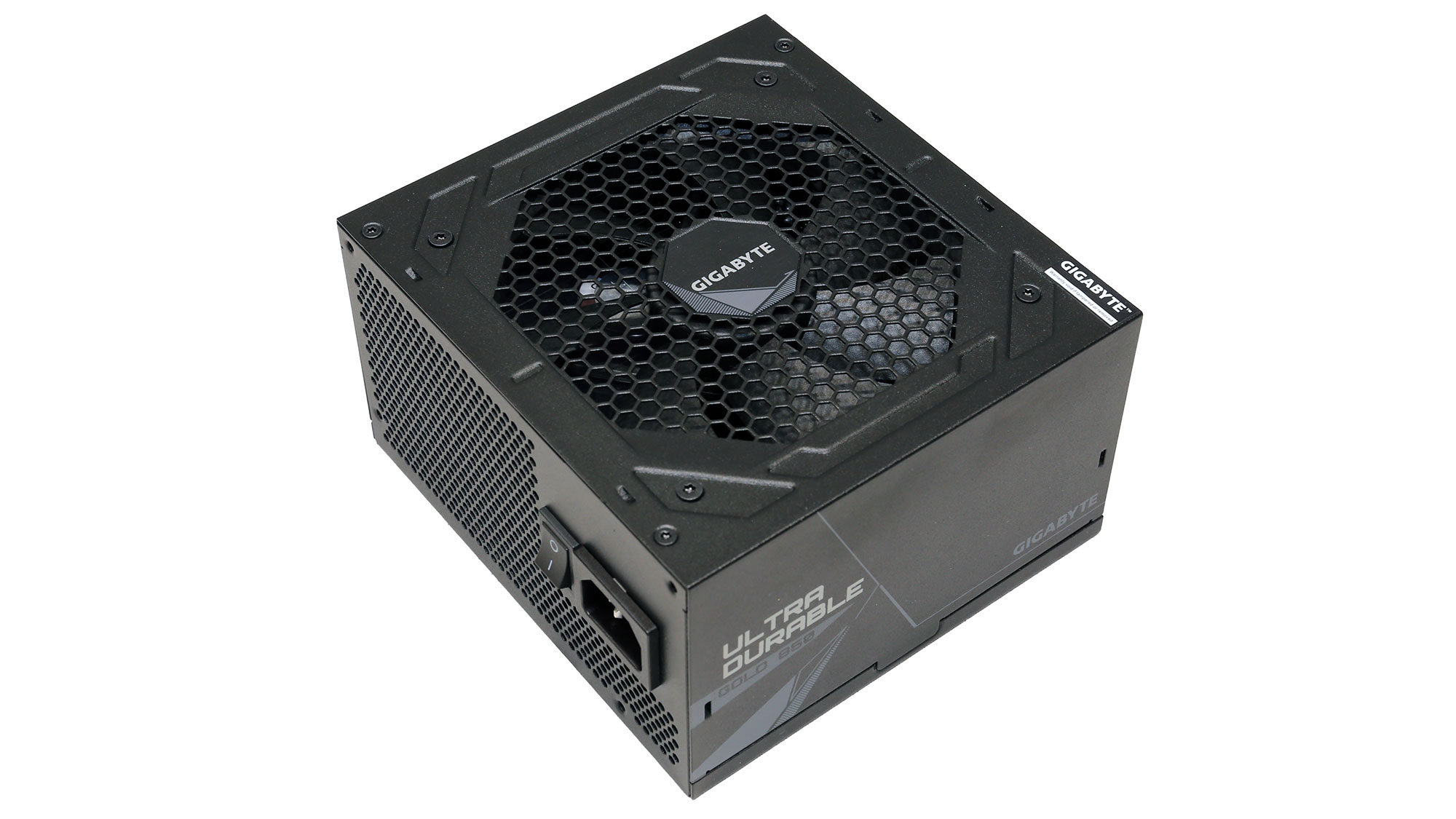
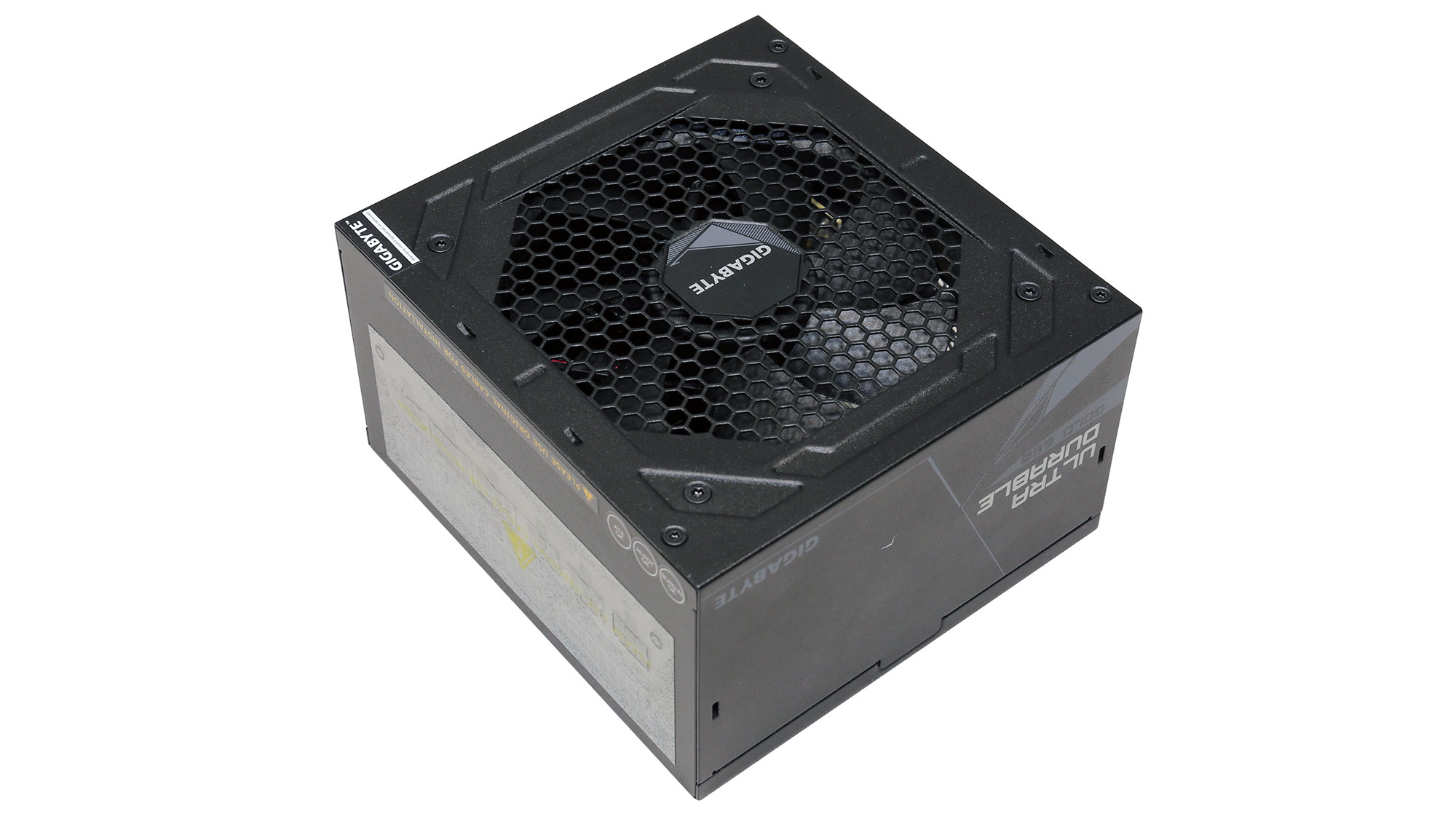
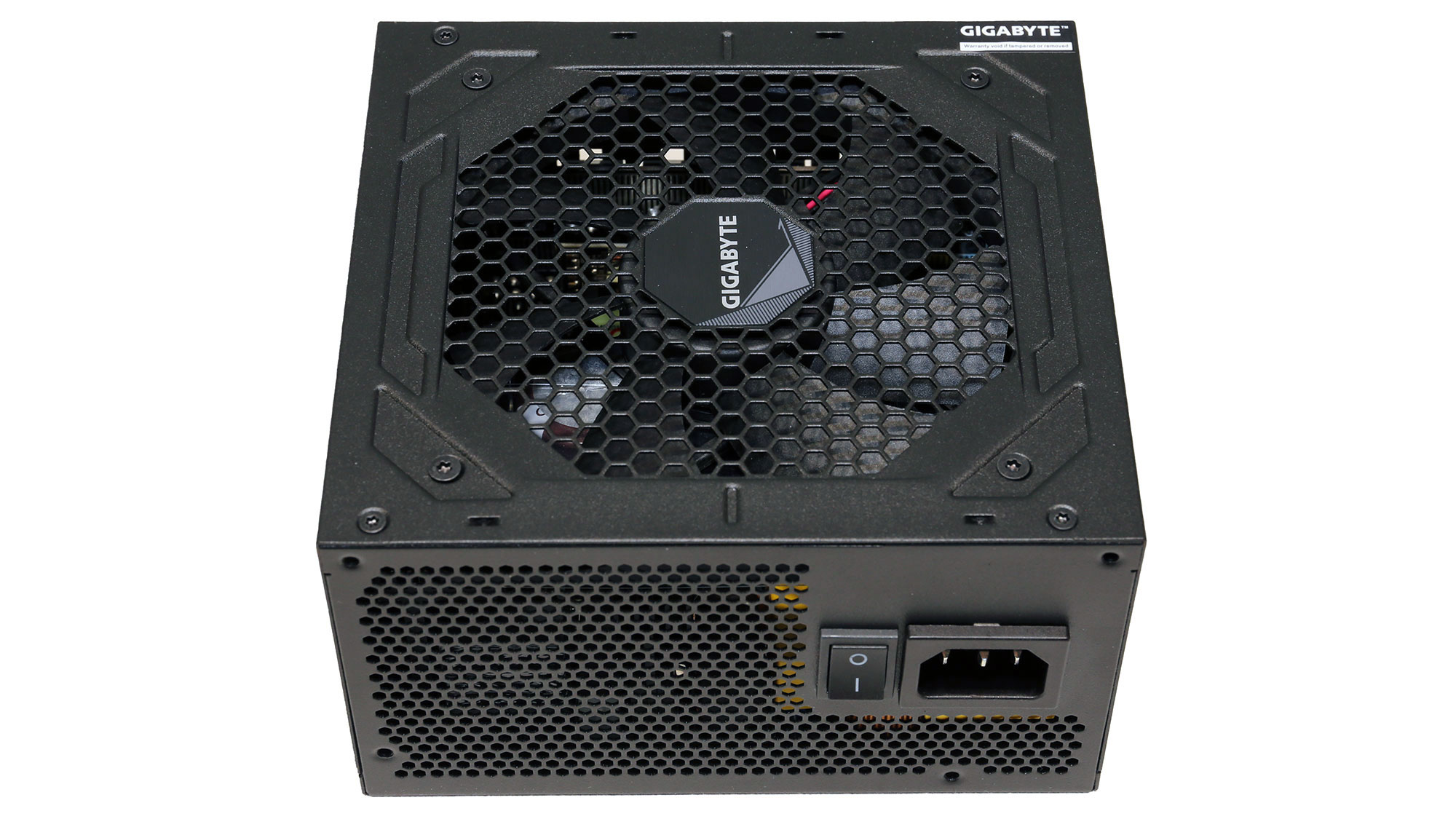
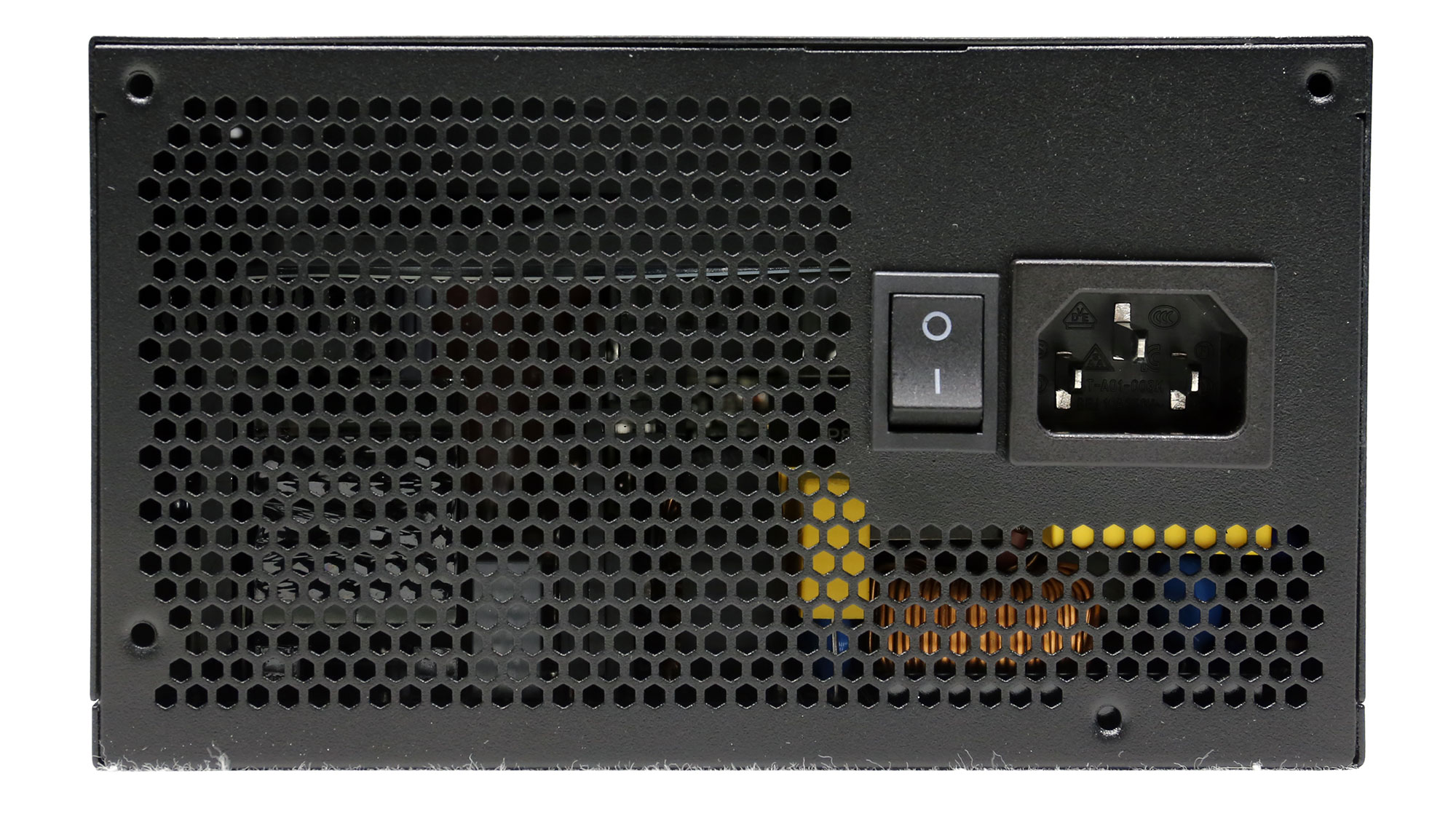
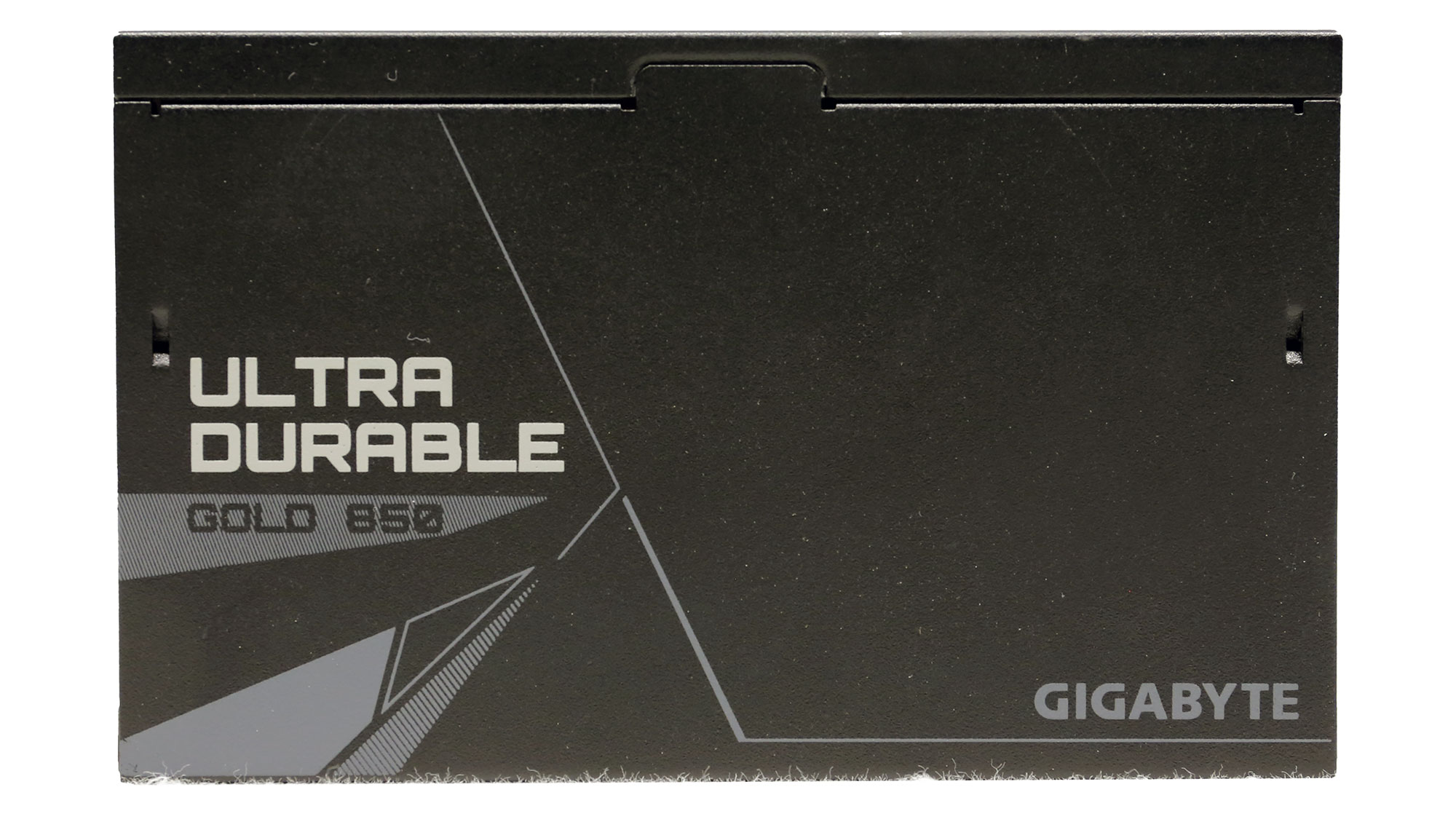
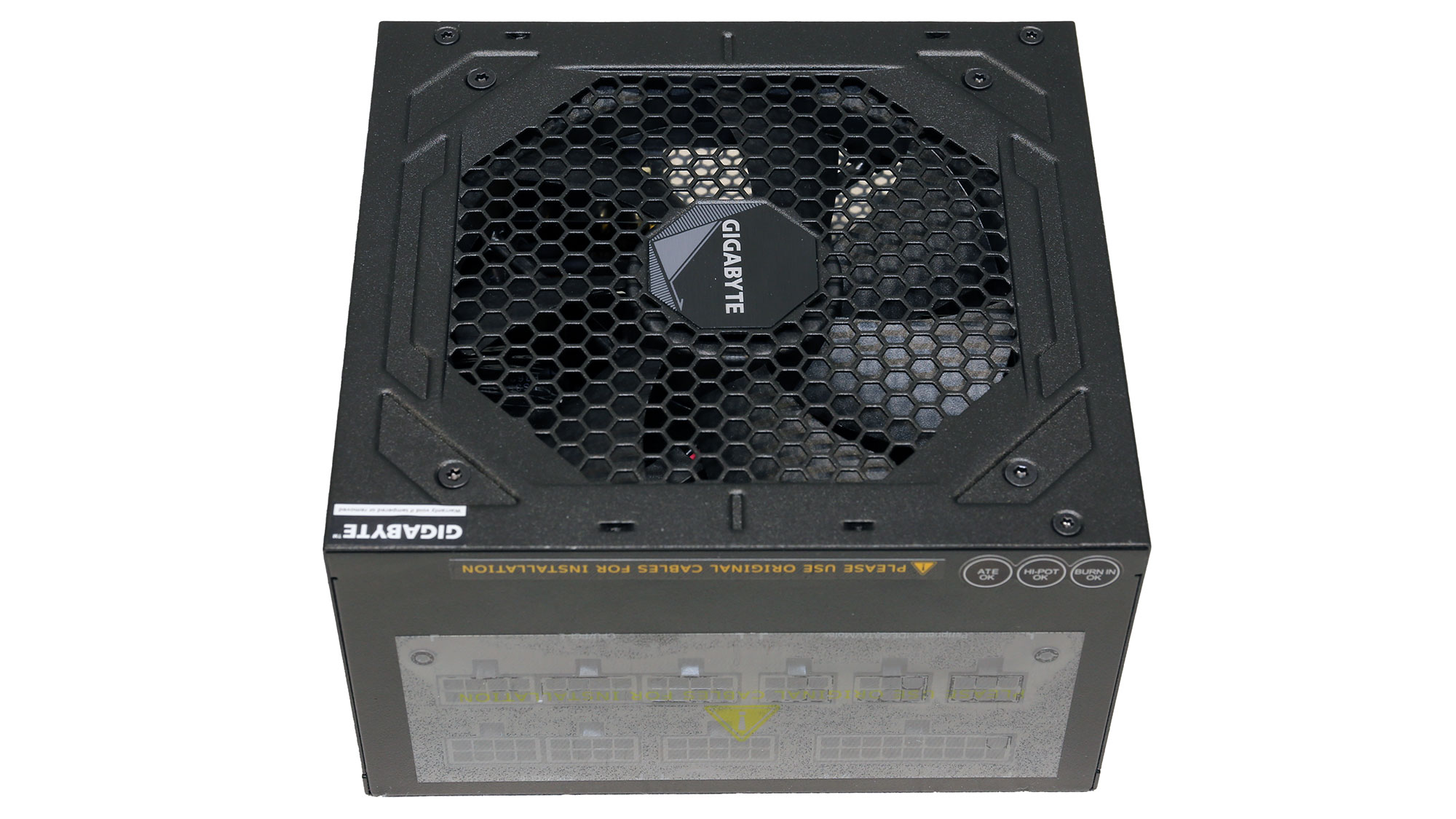
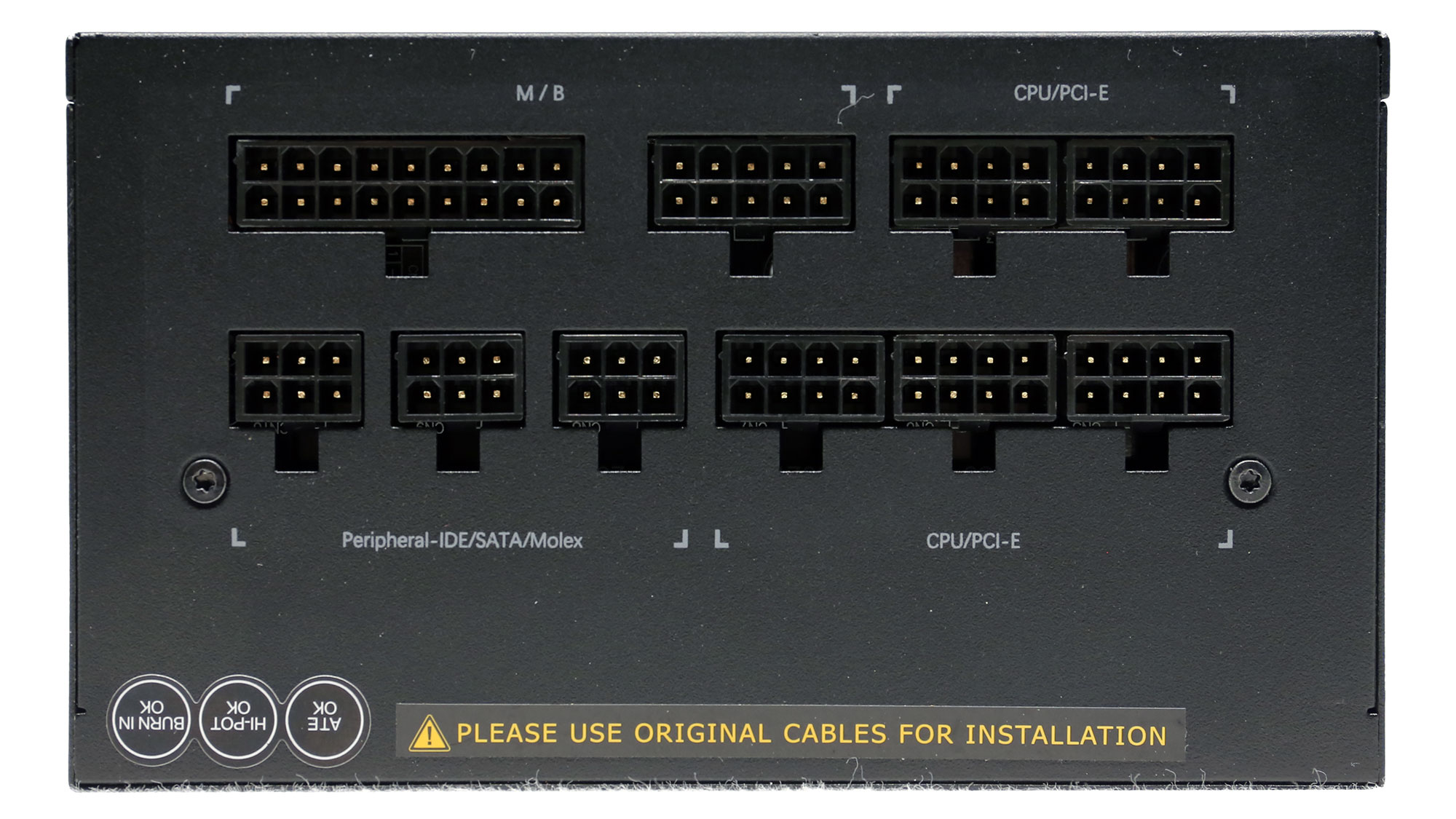
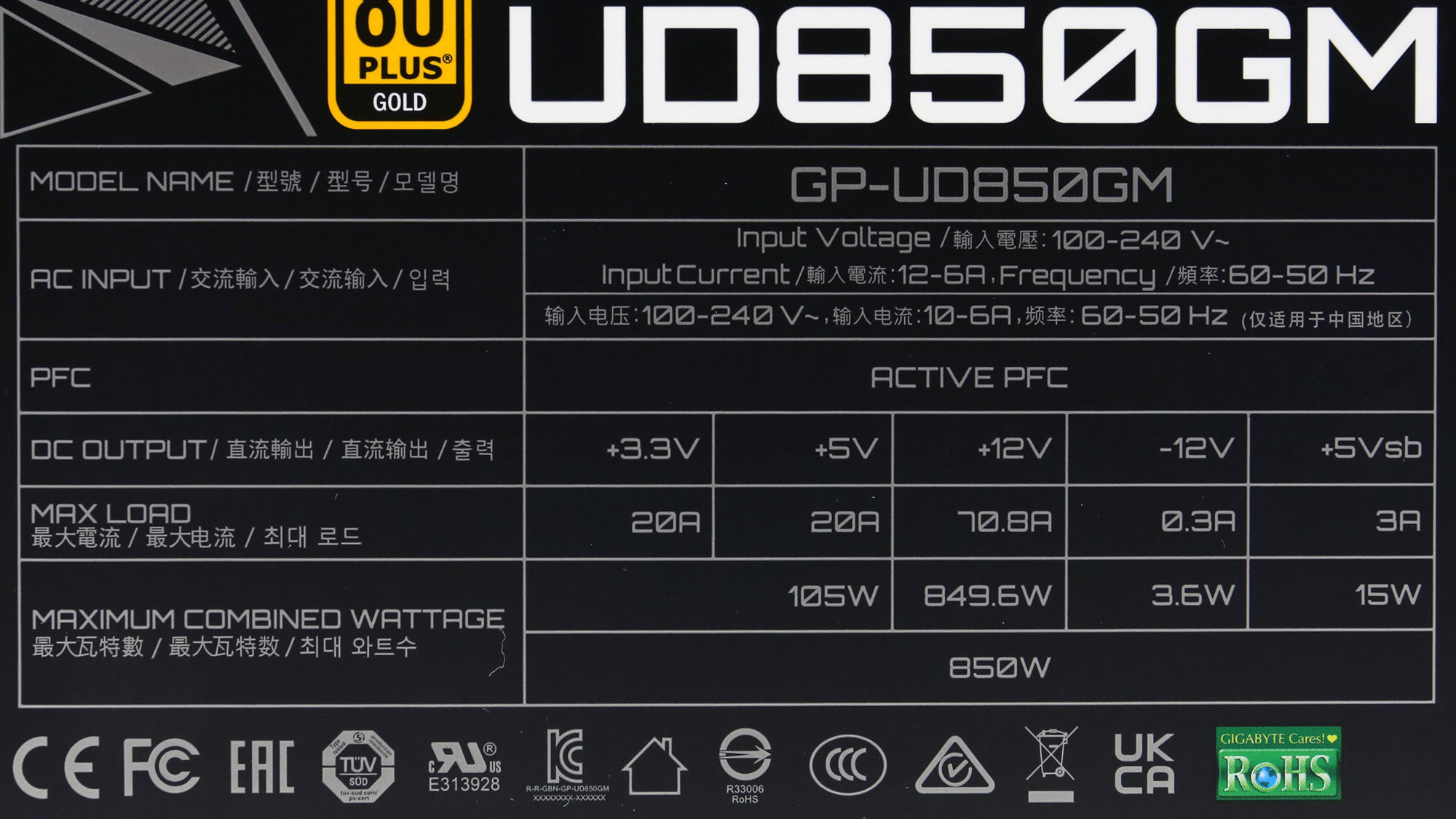

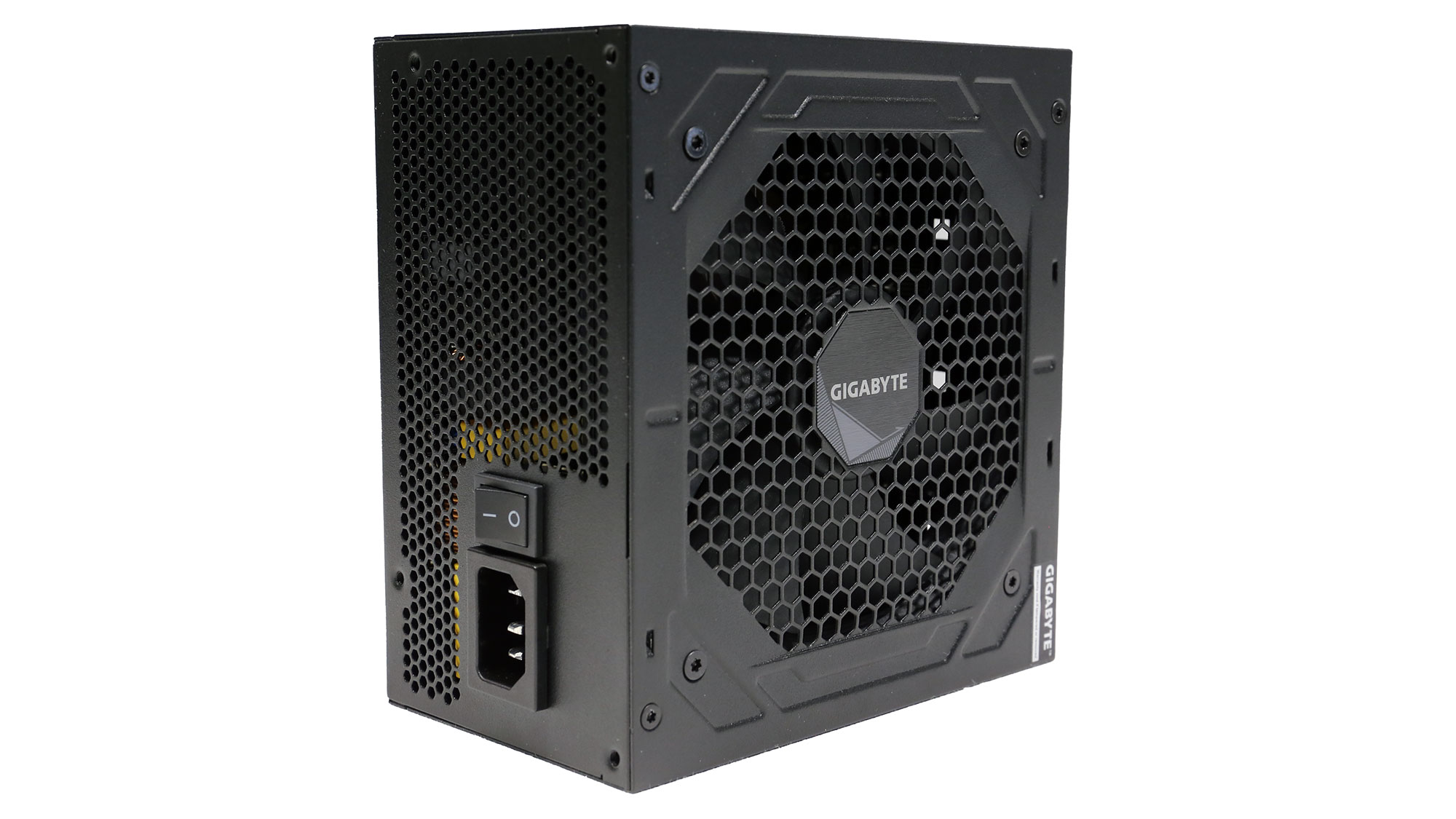
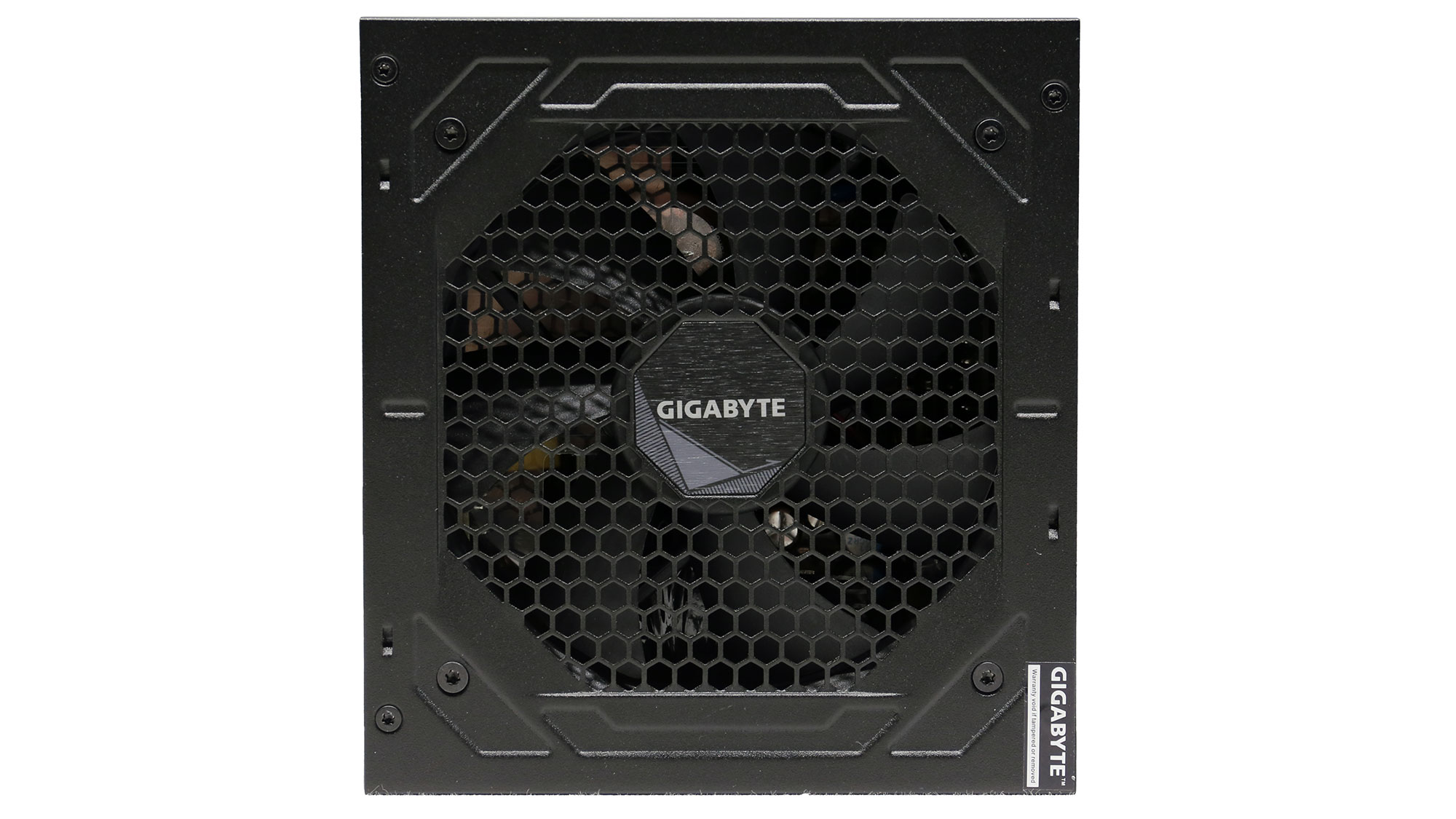
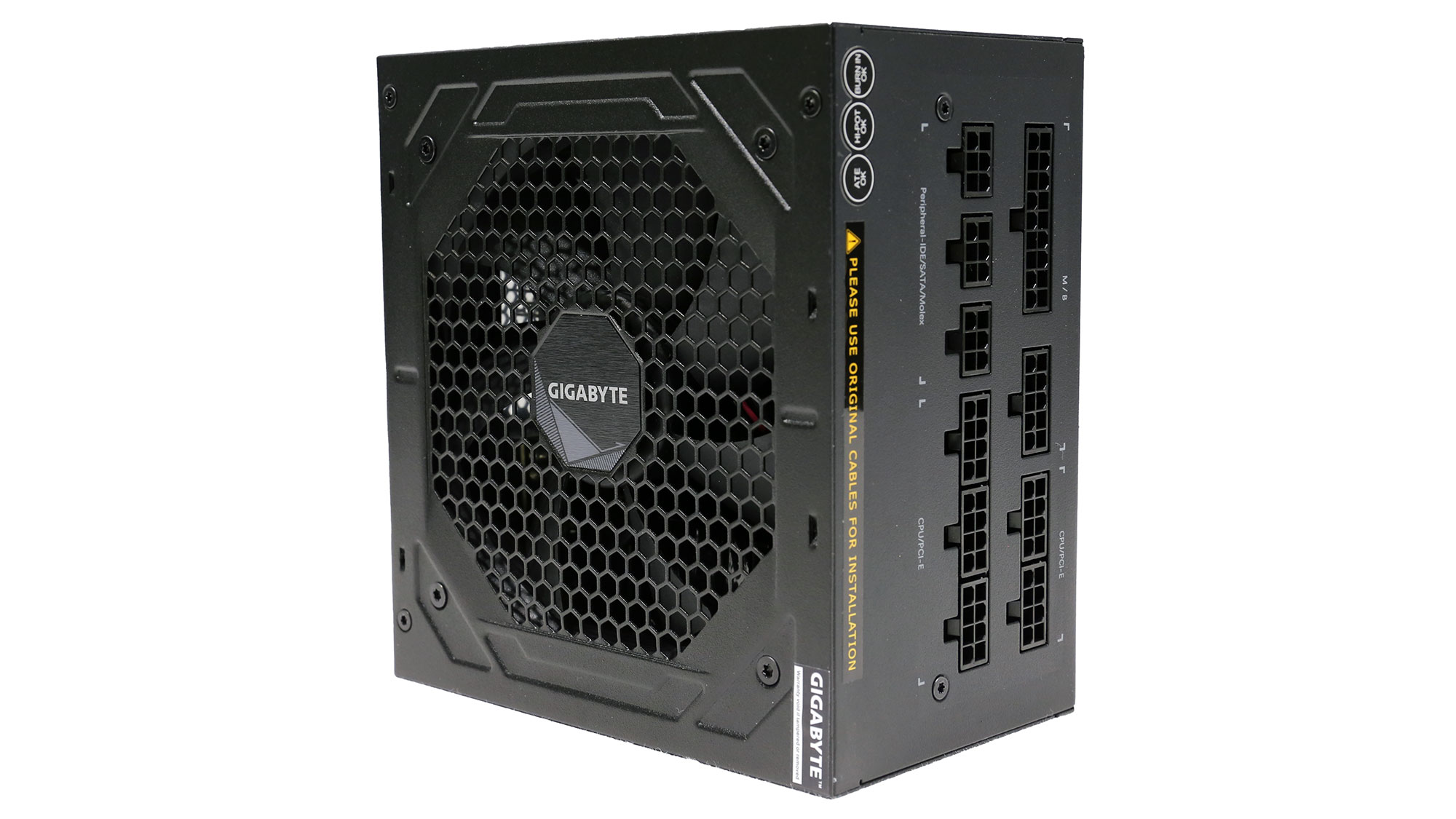
The Gigabyte UD850GM has compact dimensions and is fully modular. In addition, its price often falls below 100 dollars, making it a good deal given its spec. It is certified as Gold by 80 PLUS and Platinum by Cybenetics, and also has a Standard++ noise rating by the latter certification agency. According to Gigabyte, it uses a hydraulic bearing fan, but we found a rifle bearing instead.
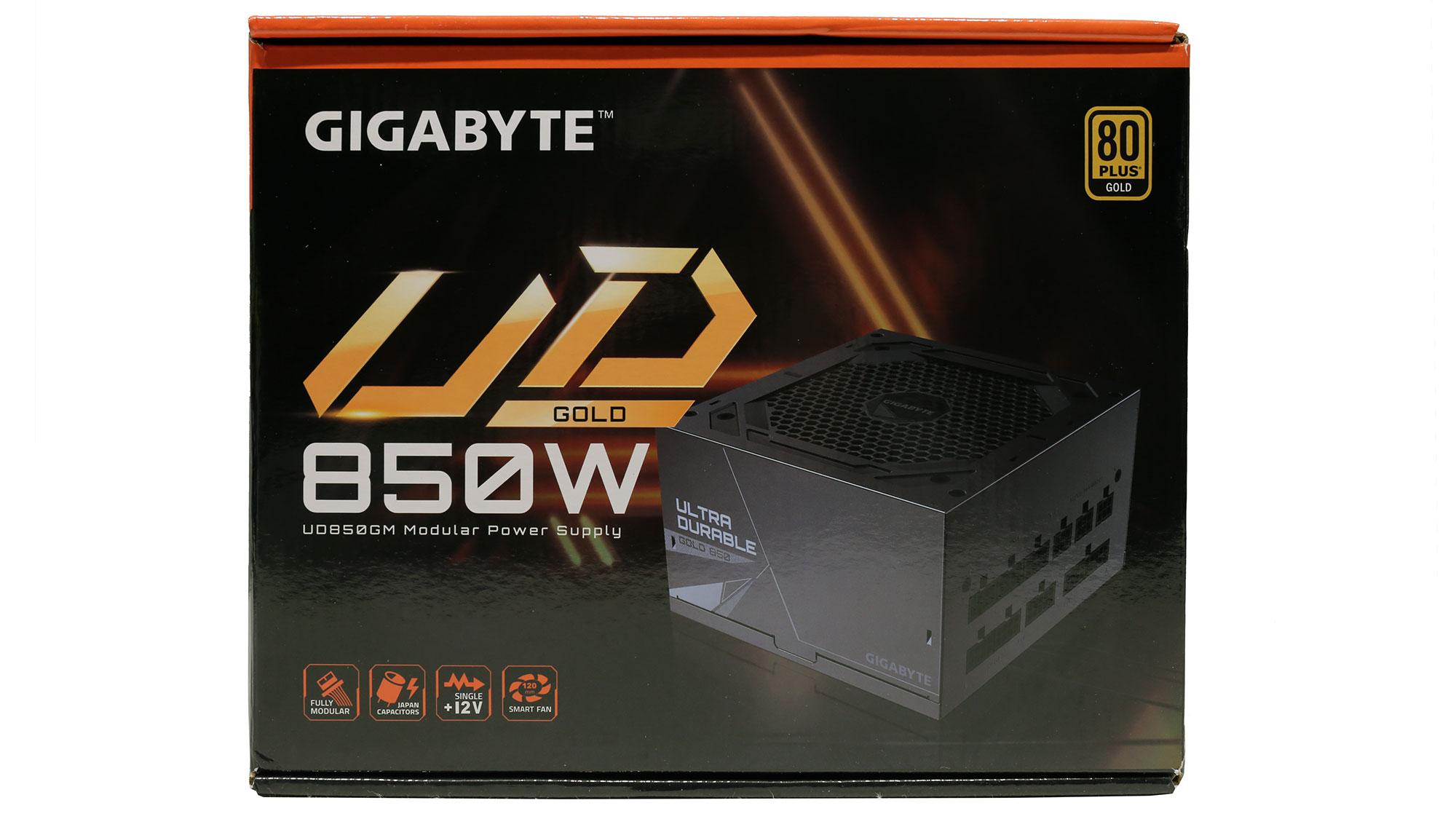
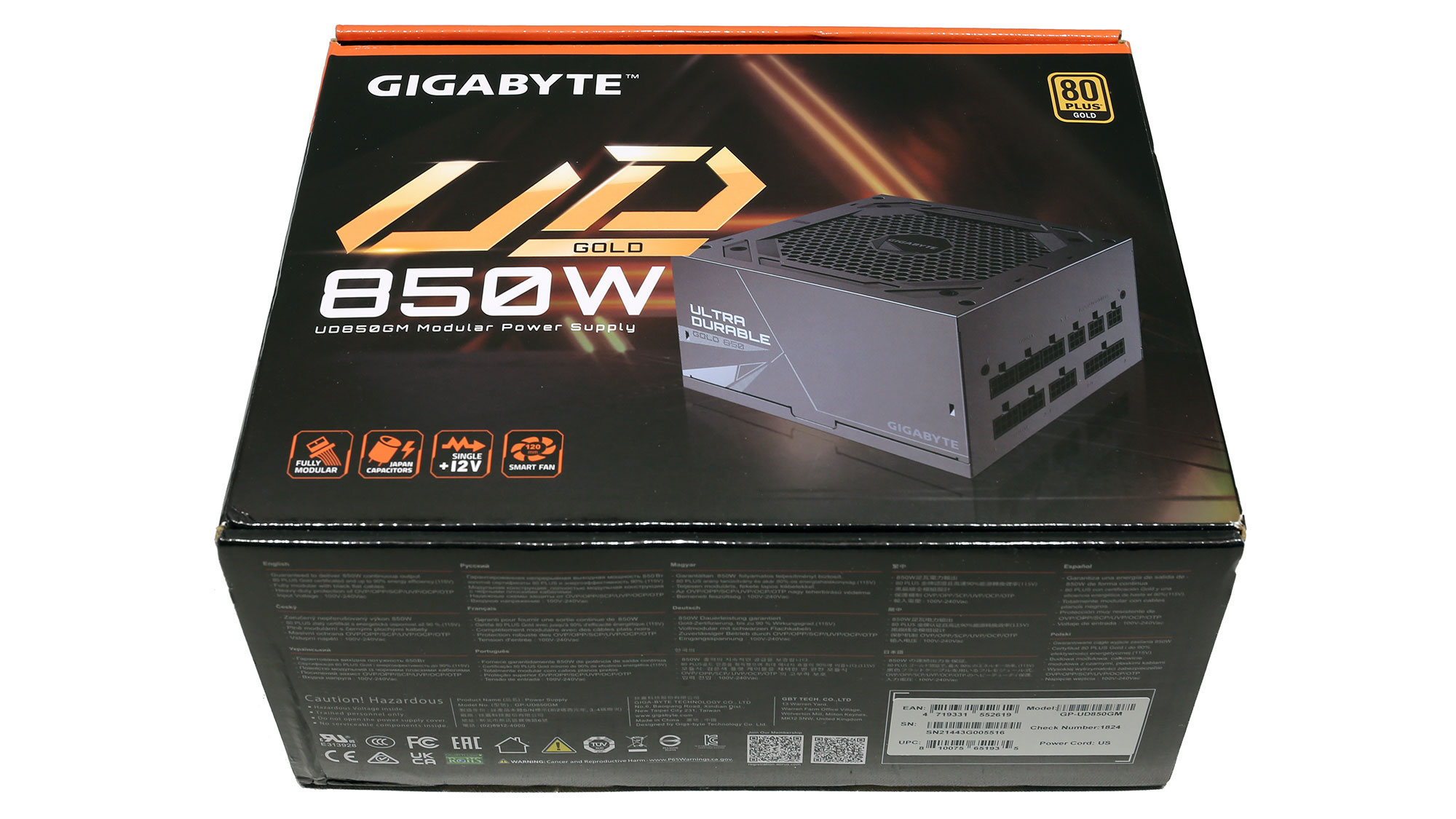
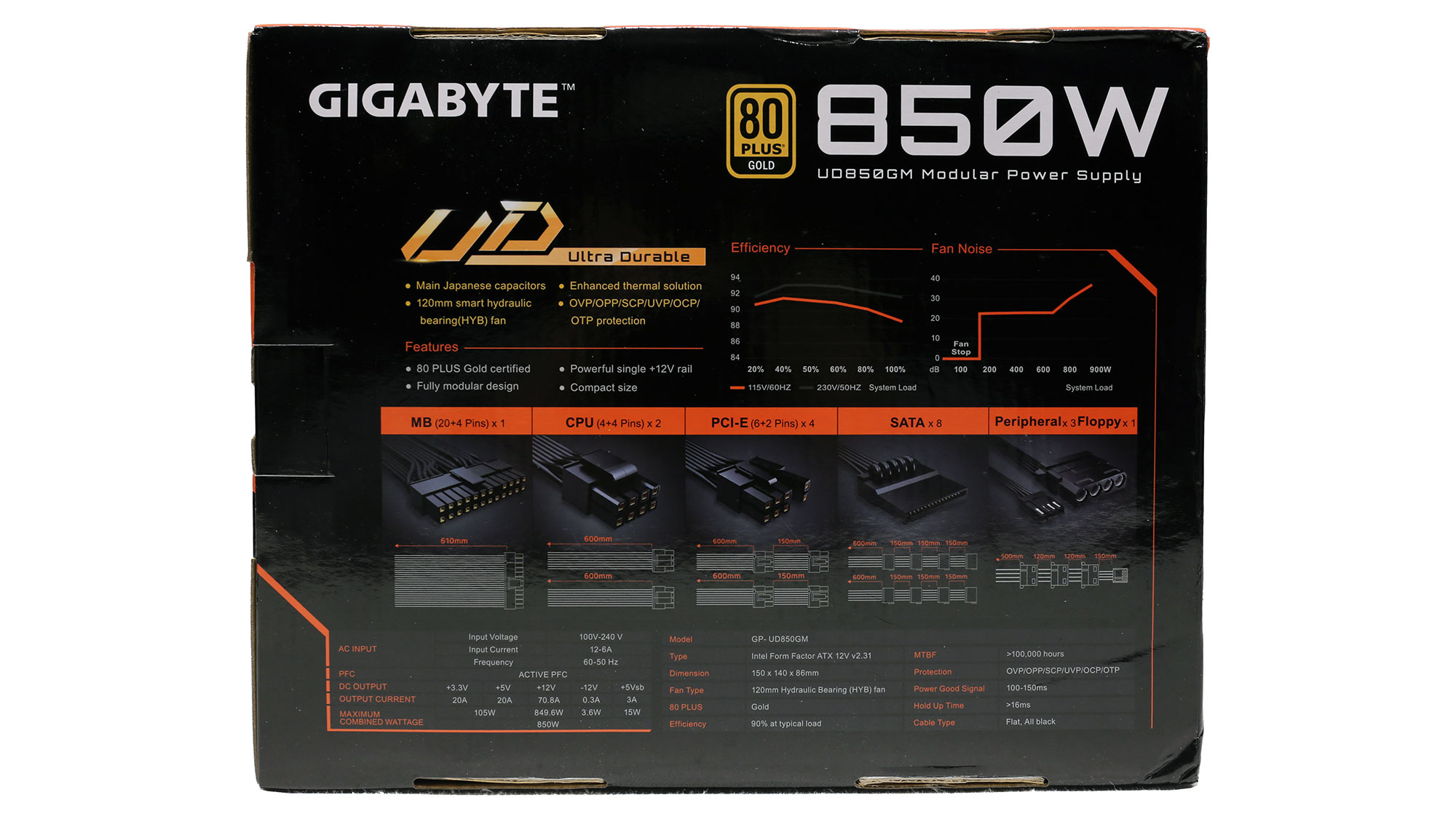
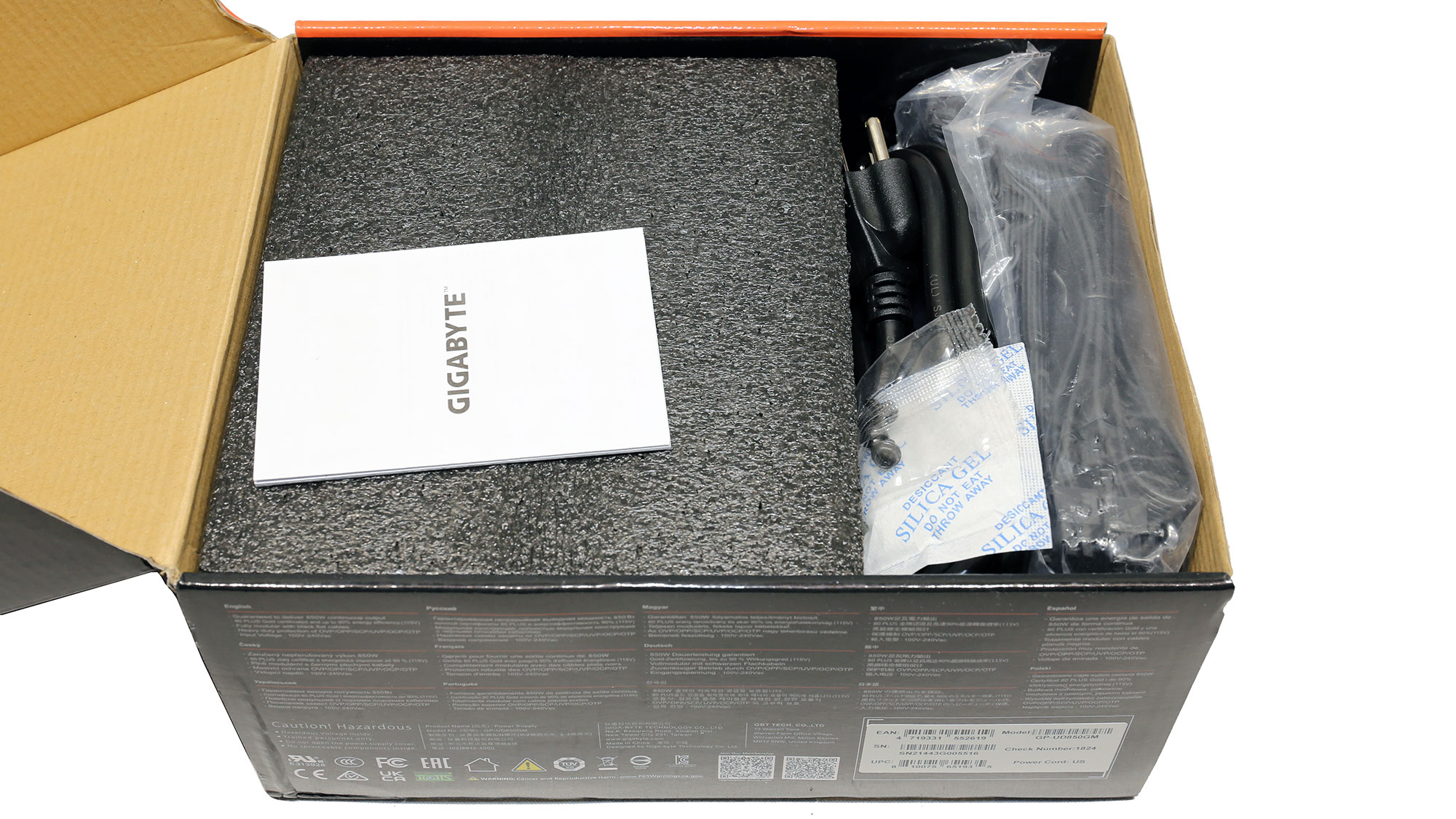

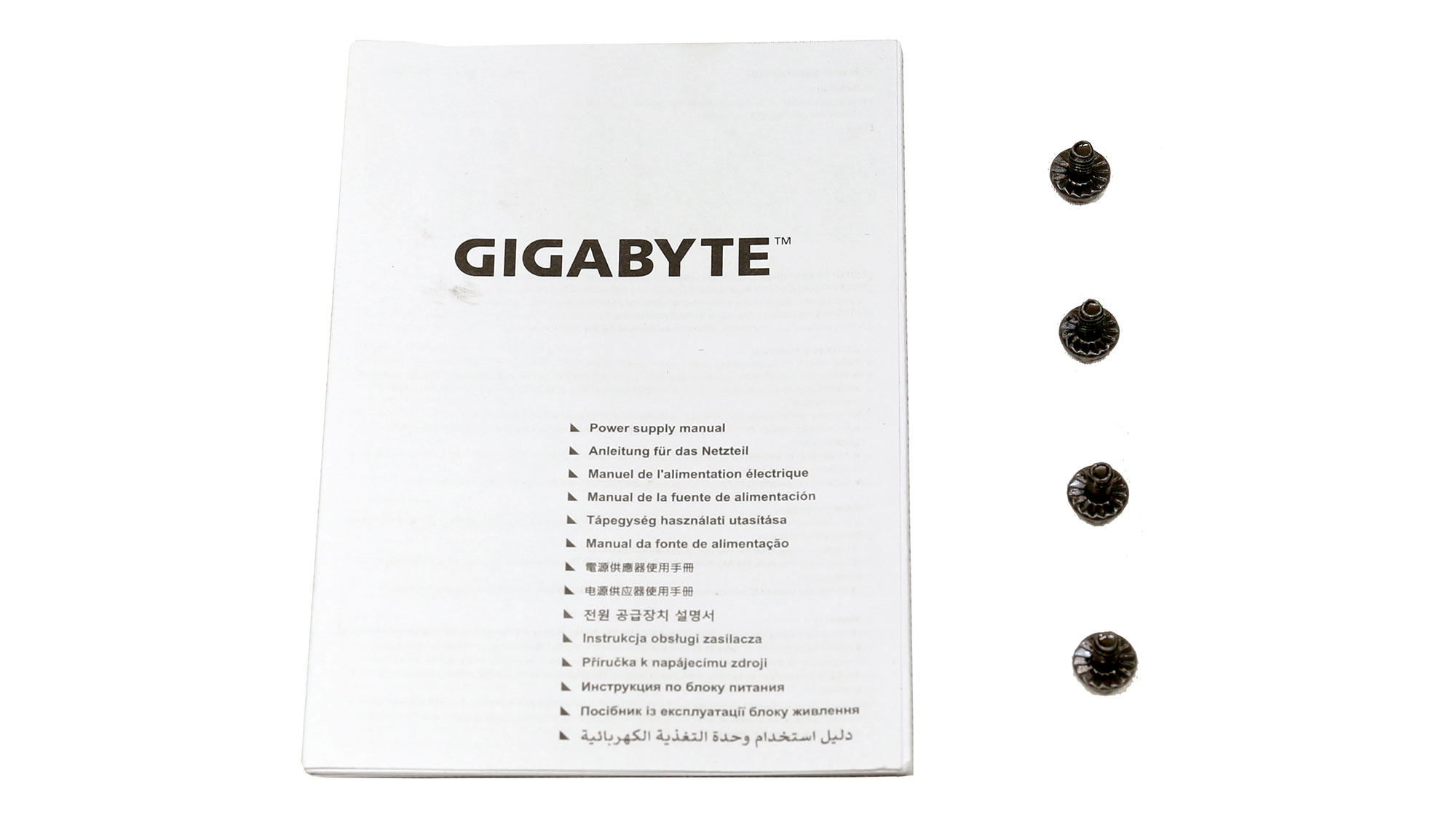
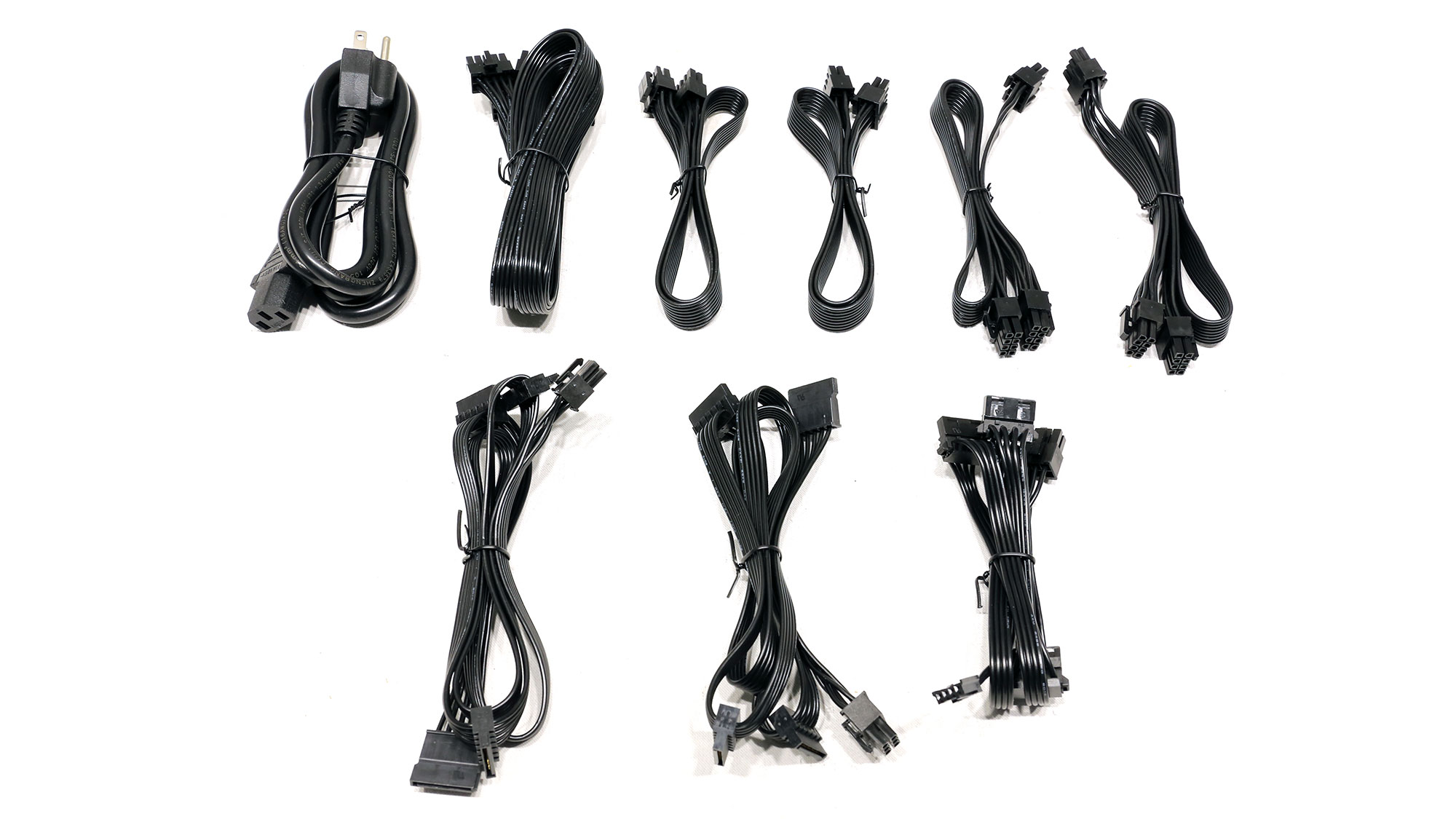
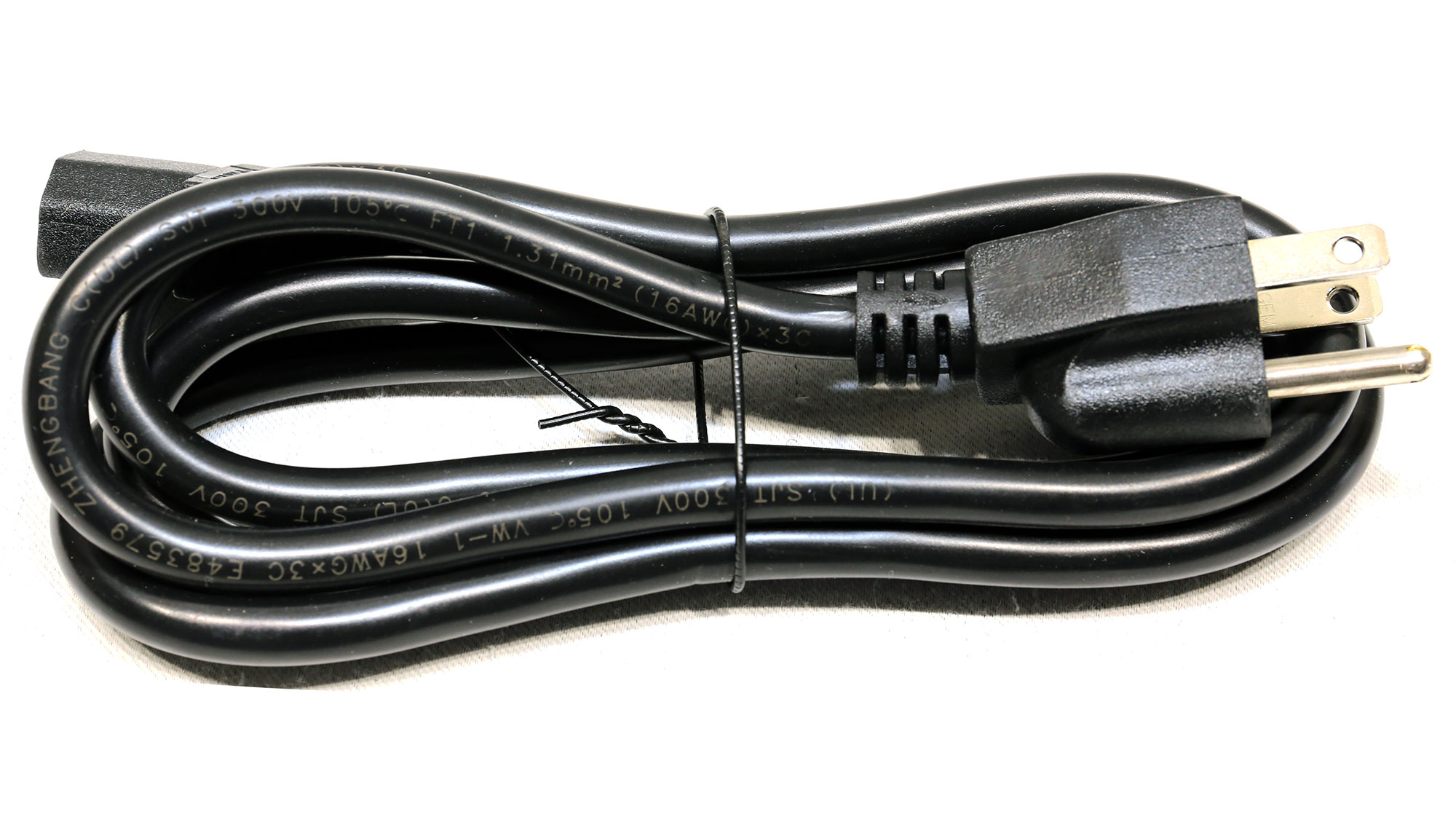
Specifications
| Manufacturer (OEM) | MEIC |
| Max. DC Output | 850W |
| Efficiency | 80 PLUS Gold, Cybenetics Platinum (89-91%) |
| Noise | Cybenetics Standard++ (30-35 dB[A]) |
| Modular | ✓ (fully) |
| Intel C6/C7 Power State Support | ✓ |
| Operating Temperature (Continuous Full Load) | 0 - 40°C |
| Over Voltage Protection | ✓ |
| Under Voltage Protection | ✓ |
| Over Power Protection | ✓ |
| Over Current (+12V) Protection | ✓ |
| Over Temperature Protection | ✓ |
| Short Circuit Protection | ✓ |
| Surge Protection | ✓ |
| Inrush Current Protection | ✓ |
| Fan Failure Protection | ✗ |
| No Load Operation | ✓ |
| Cooling | 120mm Rifle Bearing Fan (D12SH-12) |
| Semi-Passive Operation | ✓ |
| Dimensions (W x H x D) | 150 x 85 x 140mm |
| Weight | 1.46 kg (3.22 lb) |
| Form Factor | ATX12V v2.31, EPS 2.92 |
| Warranty | 5 Years |
Power Specifications
| Rail | Row 0 - Cell 1 | 3.3V | 5V | 12V | 5VSB | -12V |
| Max. Power | Amps | 20 | 20 | 70.8 | 3 | 0.3 |
| Row 2 - Cell 0 | Watts | Row 2 - Cell 2 | 105 | 849.6 | 15 | 3.6 |
| Total Max. Power (W) | Row 3 - Cell 1 | Row 3 - Cell 2 | 850 | Row 3 - Cell 4 | Row 3 - Cell 5 | Row 3 - Cell 6 |
Cables & Connectors
| Description | Cable Count | Connector Count (Total) | Gauge | In Cable Capacitors |
|---|---|---|---|---|
| ATX connector 20+4 pin (610mm) | 1 | 1 | 18AWG | No |
| 4+4 pin EPS12V (600mm) | 2 | 2 | 18AWG | No |
| 6+2 pin PCIe (600mm+150mm) | 2 | 4 | 18AWG | No |
| SATA (600mm+150mm+150mm+150mm) | 2 | 8 | 18AWG | No |
| 4-pin Molex (500mm+115mm+115mm) / FDD (+150mm) | 1 | 3 / 1 | 18AWG | No |
| AC Power Cord (1400mm) - C13 coupler | 1 | 1 | 16AWG | - |
The PSU has enough EPS and legacy PCIe connectors but lacks a 12+4 pin PCIe, so it won't be compatible with the upcoming generations of high-performance GPUs. You might be able to use adapters, but such solutions are not ideal for high-power cards.
The lower than 150mm distance between the 4-pin Molex connectors is not ideal, especially for a large chassis. Another small detail we noticed is the fixed FDD connector, which is of no use today. If Gigabyte wanted to include this connector, it could offer an adapter.
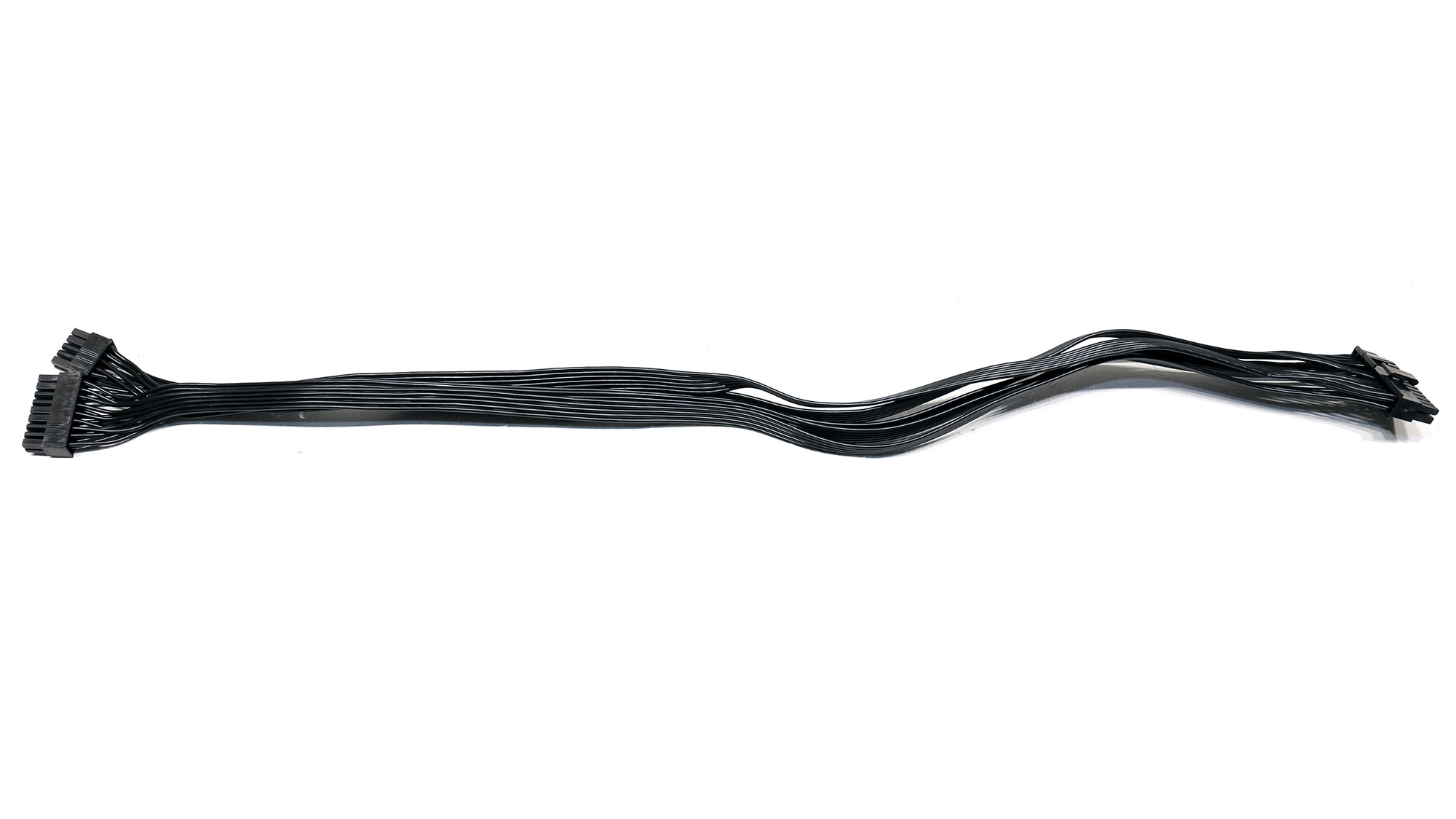
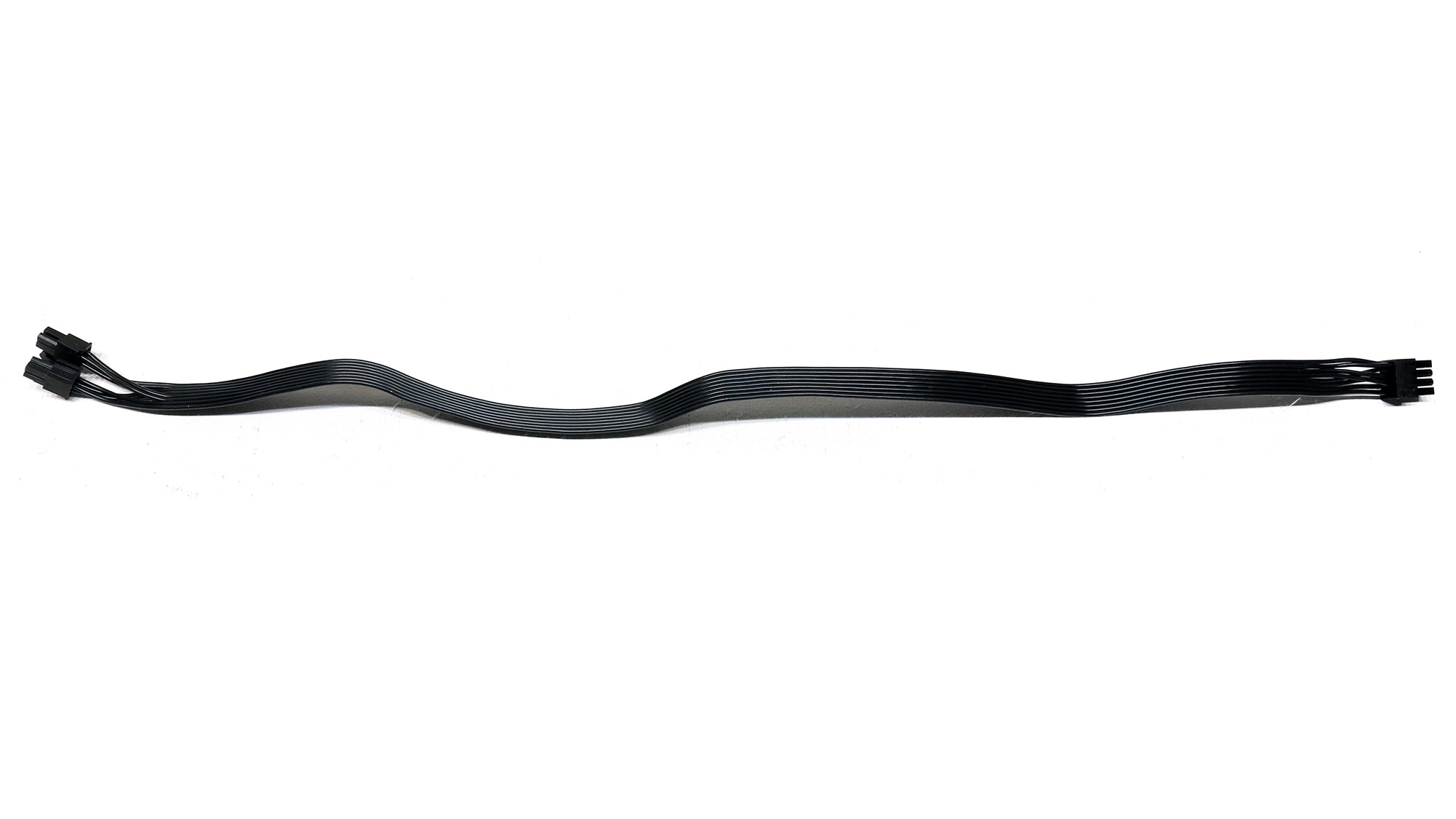
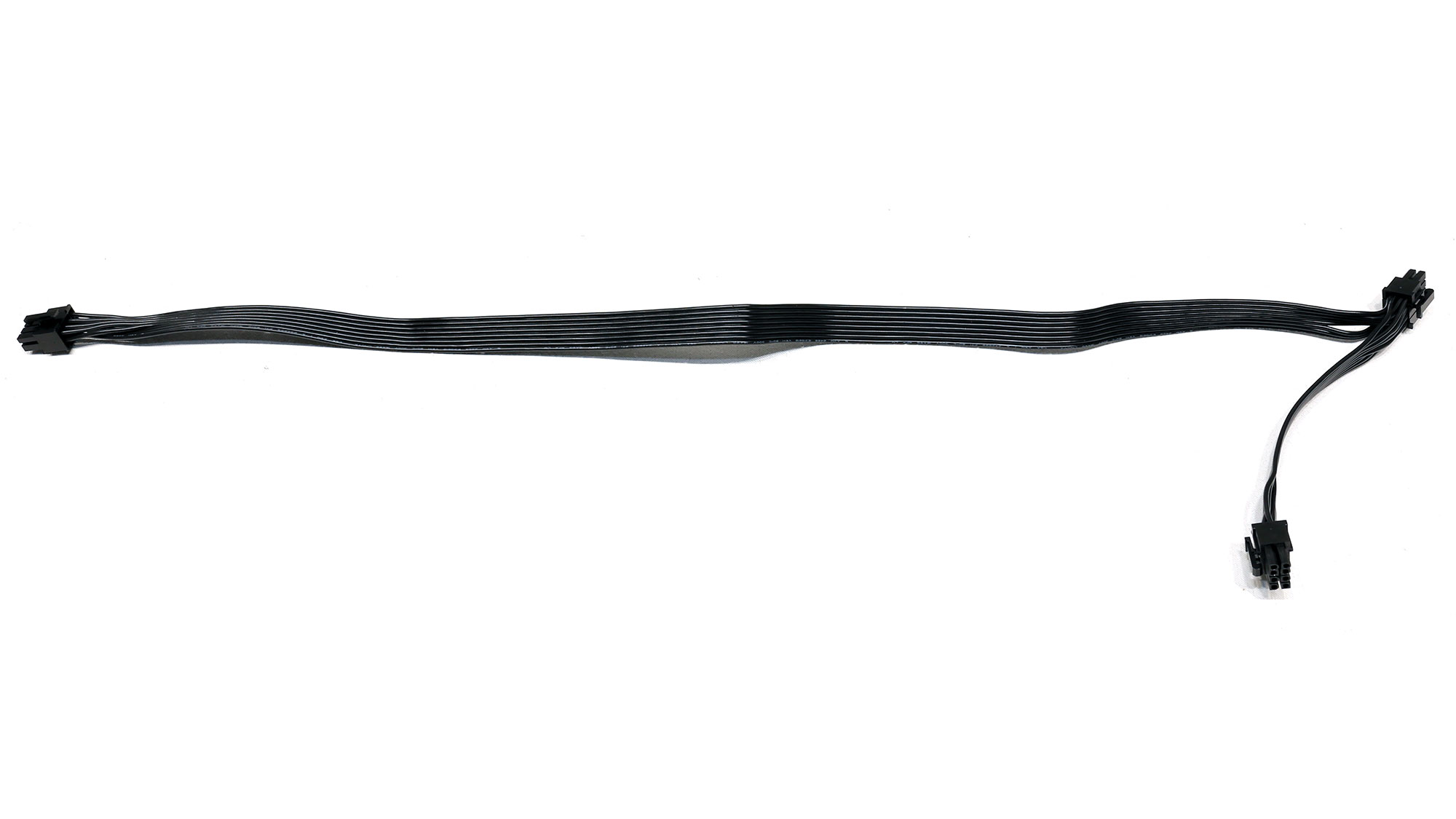
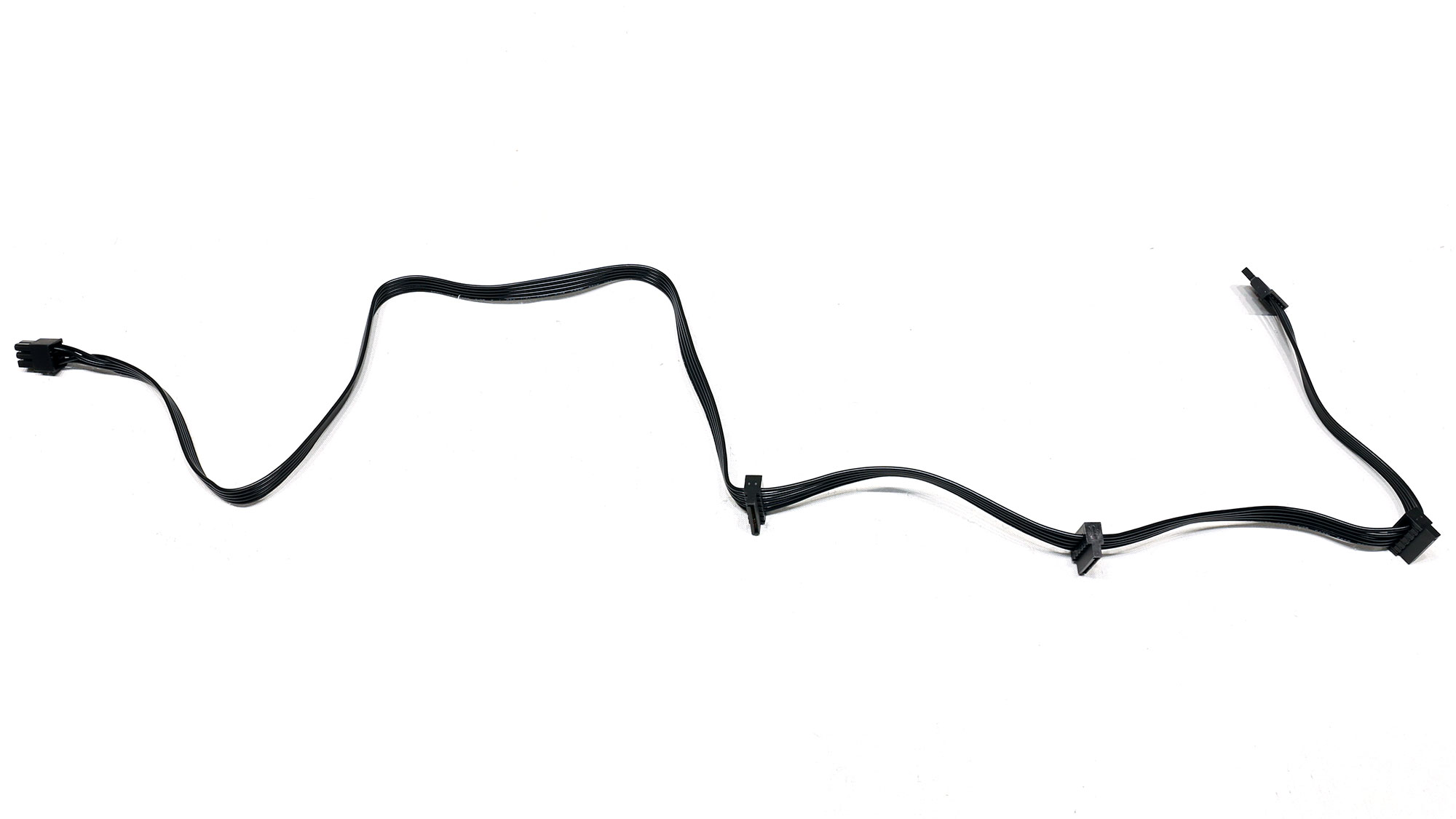
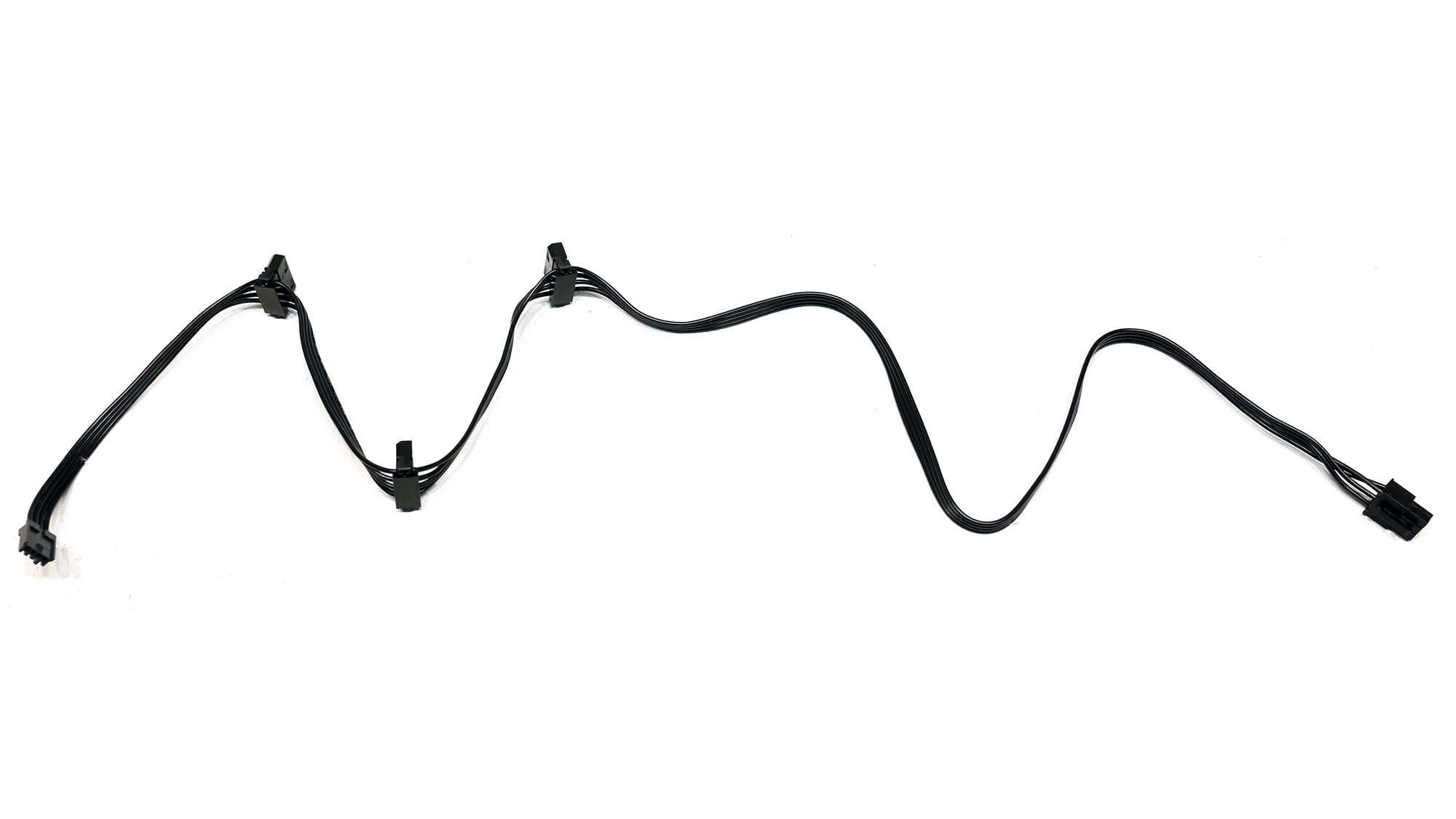
Component Analysis
We strongly encourage you to have a look at our PSUs 101 article, which provides valuable information about PSUs and their operation, allowing you to better understand the components we're about to discuss.
| General Data | - |
| Manufacturer (OEM) | MEIC |
| PCB Type | Double Sided |
| Primary Side | - |
| Transient Filter | 4x Y caps, 2x X caps, 2x CM chokes, 1x MOV, 1x Chipown PN8200 (Discharge IC) |
| Inrush Protection | NTC Thermistor & Relay |
| Bridge Rectifier(s) | 2x GBU1506 (800V, 15A @ 100°C) |
| APFC MOSFETs | 2x NCE Power NCE65TF099F (650V, 24A @ 100°C, Rds(on): 0.109Ohm) |
| APFC Boost Diode | 1x JF SC1065 (600V, 10A @ 156°C) |
| Bulk Cap(s) | 1x Nippon Chemi-Con (400V, 820uF, 2,000h @ 105°C, KMW) |
| Main Switchers | 2x NCE Power NCE65TF099F (650V, 24A @ 100°C, Rds(on): 0.109Ohm) |
| APFC Controller | Champion CM6500UNX |
| Resonant Controller | Champion CM6901X |
| Topology |
Primary side: APFC, Half-Bridge & LLC converter Secondary side: Synchronous Rectification & DC-DC converters |
| Secondary Side | - |
| +12V MOSFETs | no info |
| 5V & 3.3V | DC-DC Converters: 4x Alpha & Omega AON6354 (30V, 52A @ 100°C, Rds(on): 4.4mOhm) PWM Controllers: 2x uPI-Semi uP9303B |
| Filtering Capacitors |
Electrolytic: 10x Lelon (4-7,000h @ 105°C, RXW), 2x Lelon (4-10,000h @ 105°C, RZW), 2x Lelon (2-5,000h @ 105°C, RXK) |
| Supervisor IC | Weltrend WT7502R (OVP, UVP, SCP, PG) |
| Fan Model | Yate Loon D12SH-12 (120mm, 12V, 0.30A, Rifle Bearing Fan) |
| 5VSB Circuit | - |
| Rectifier | 1x JF Semiconductor SP10U45L SBR (45V, 10A) |
| Standby PWM Controller | PR8109T |
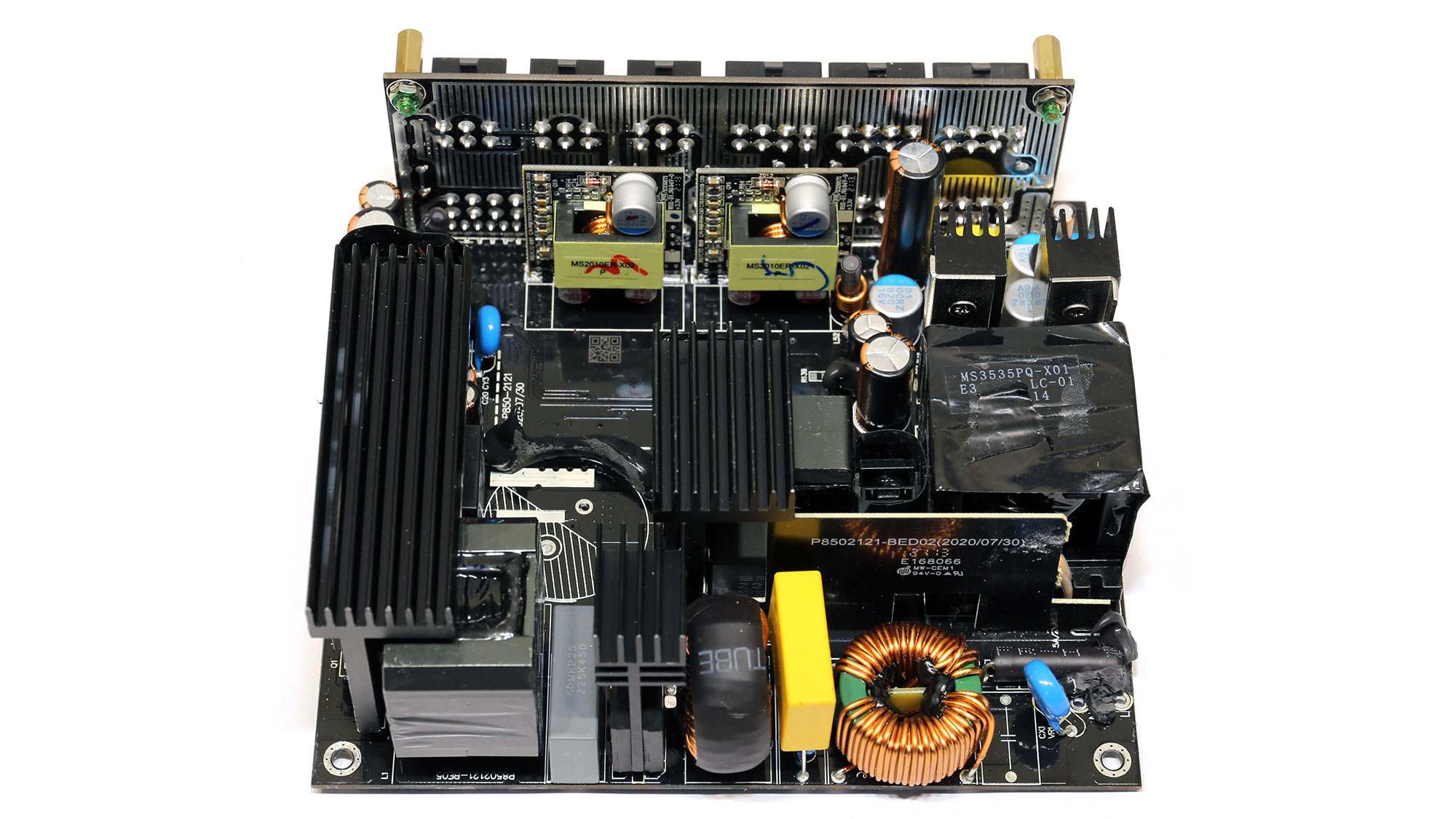
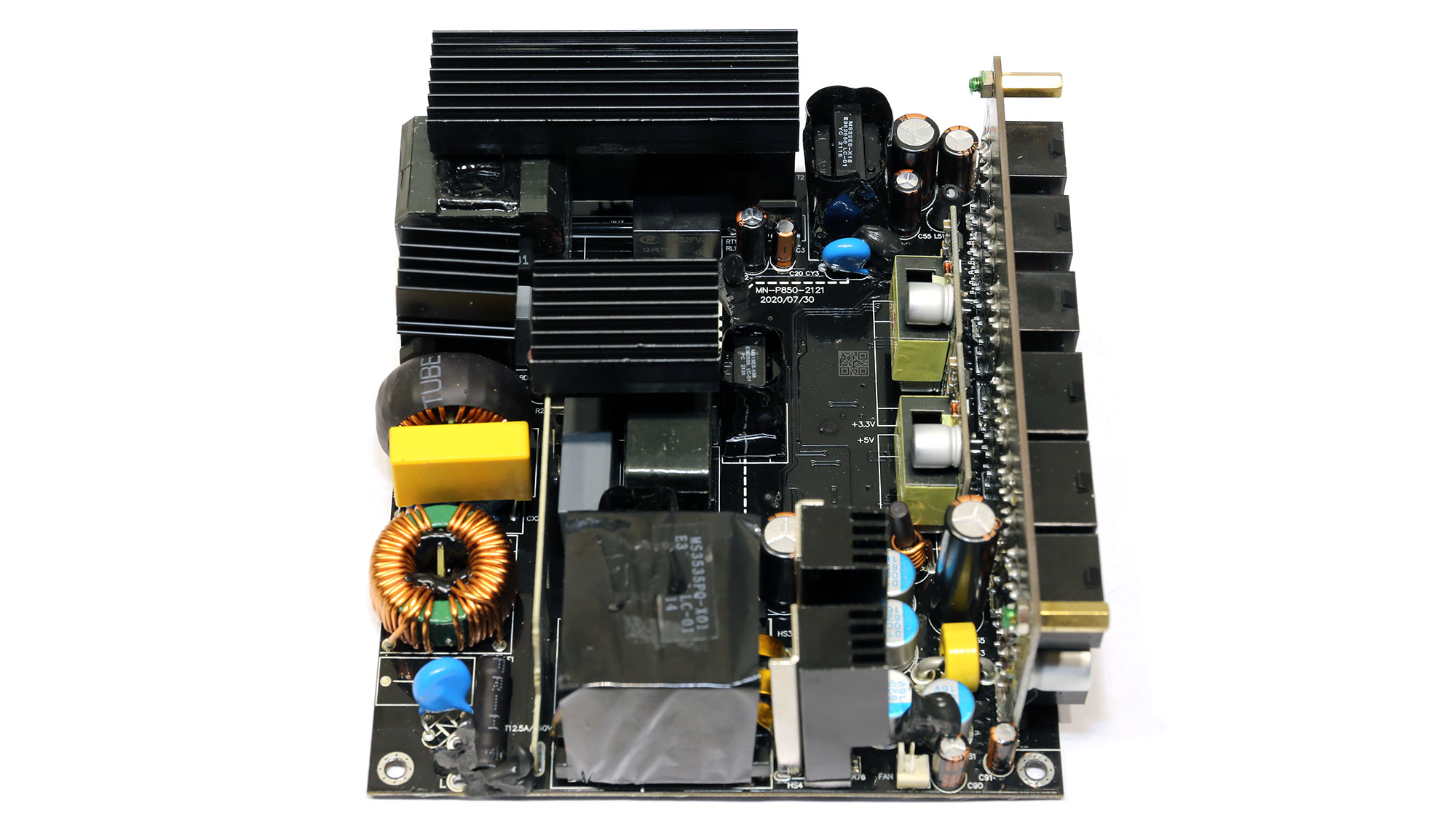
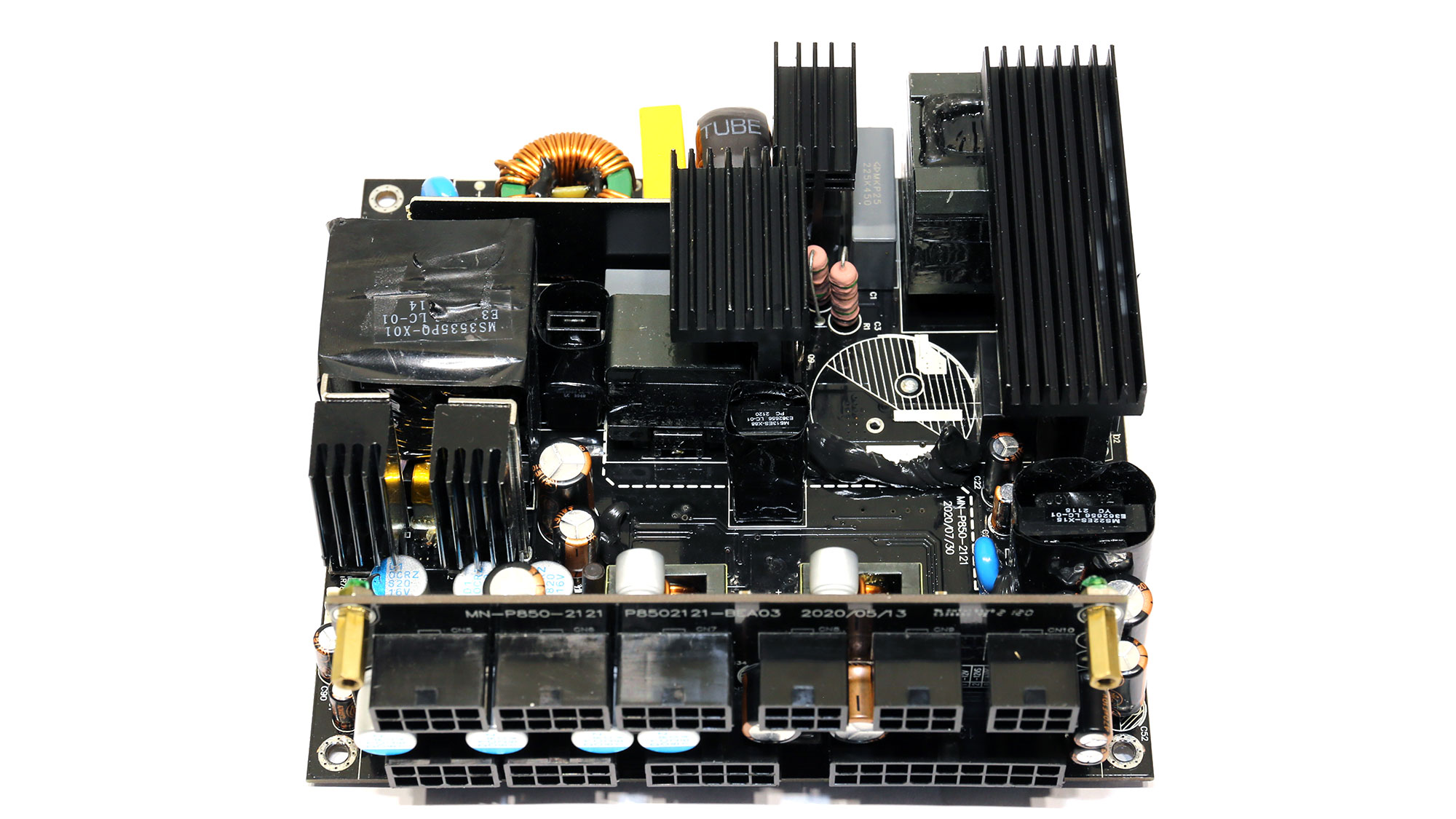
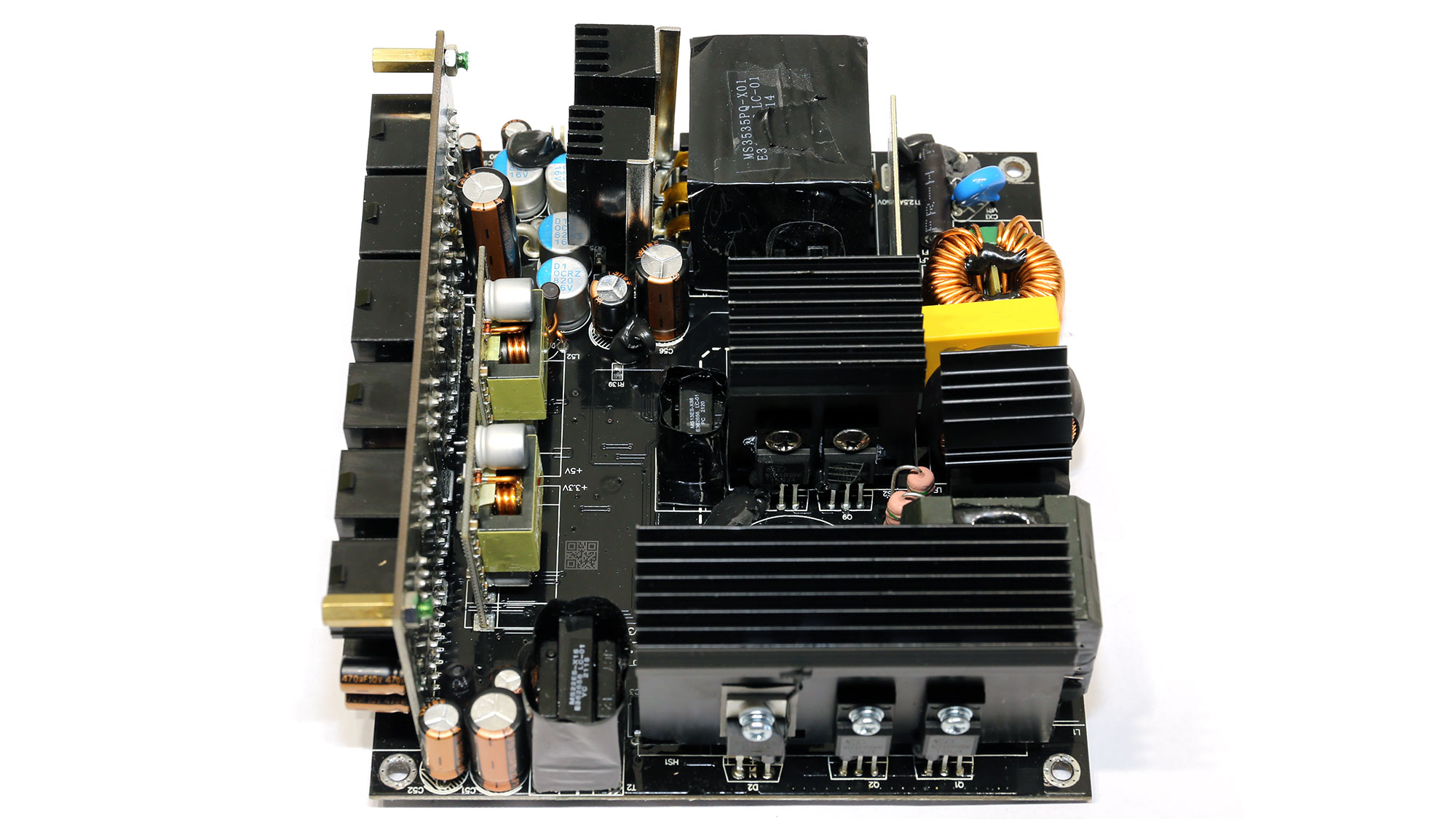
The platform is provided by MEIC and has some updates, compared to the P-GM units, to improve reliability. The PCB is small, but the build quality is high. The heat sinks are large enough, and the clean design allows for good airflow. The OEM used a half-bridge topology and an LLC resonant converter on the primary side. We also find a synchronous rectification scheme and a pair of DC-DC converters on the secondary side.
Get Tom's Hardware's best news and in-depth reviews, straight to your inbox.
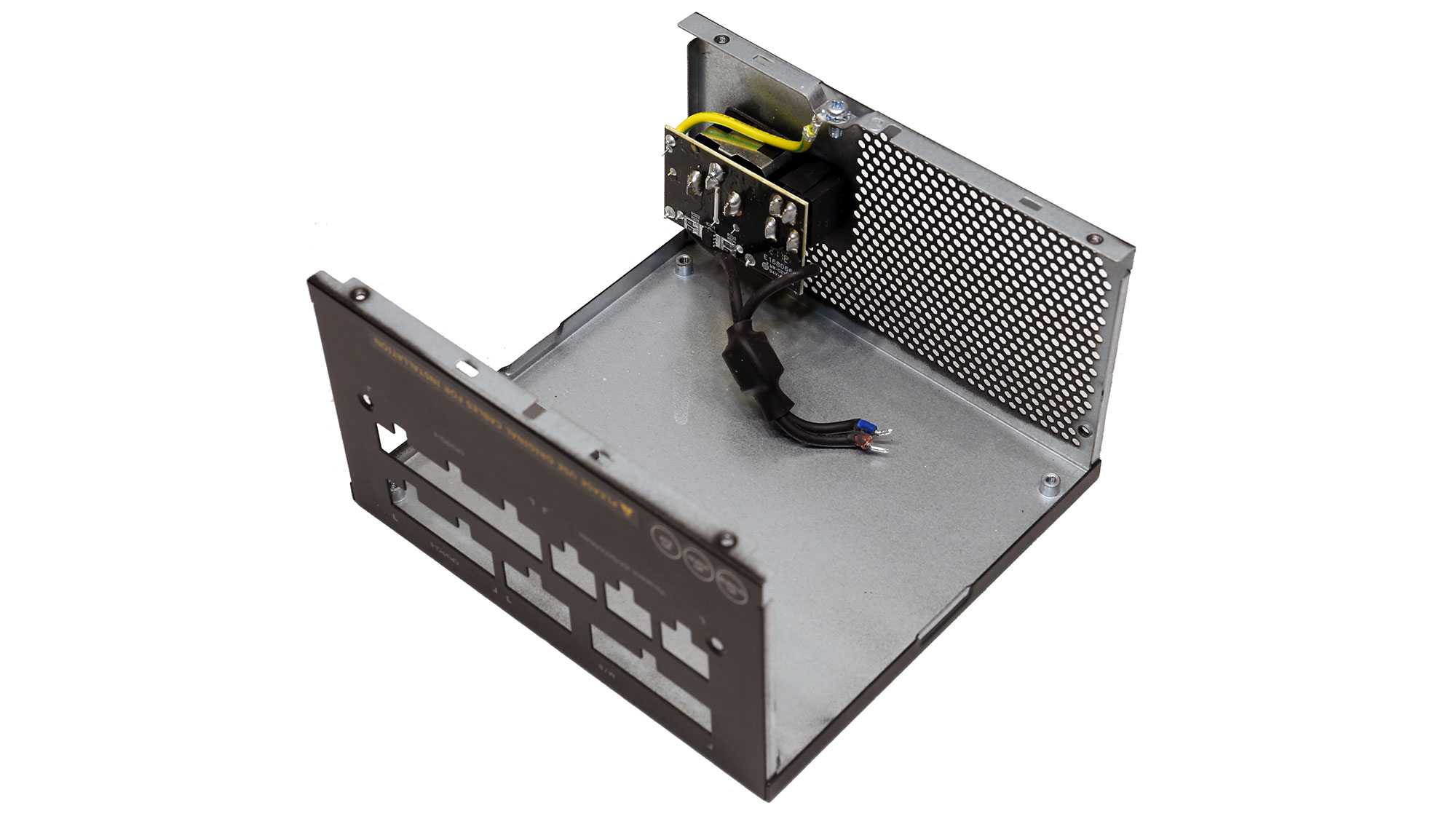
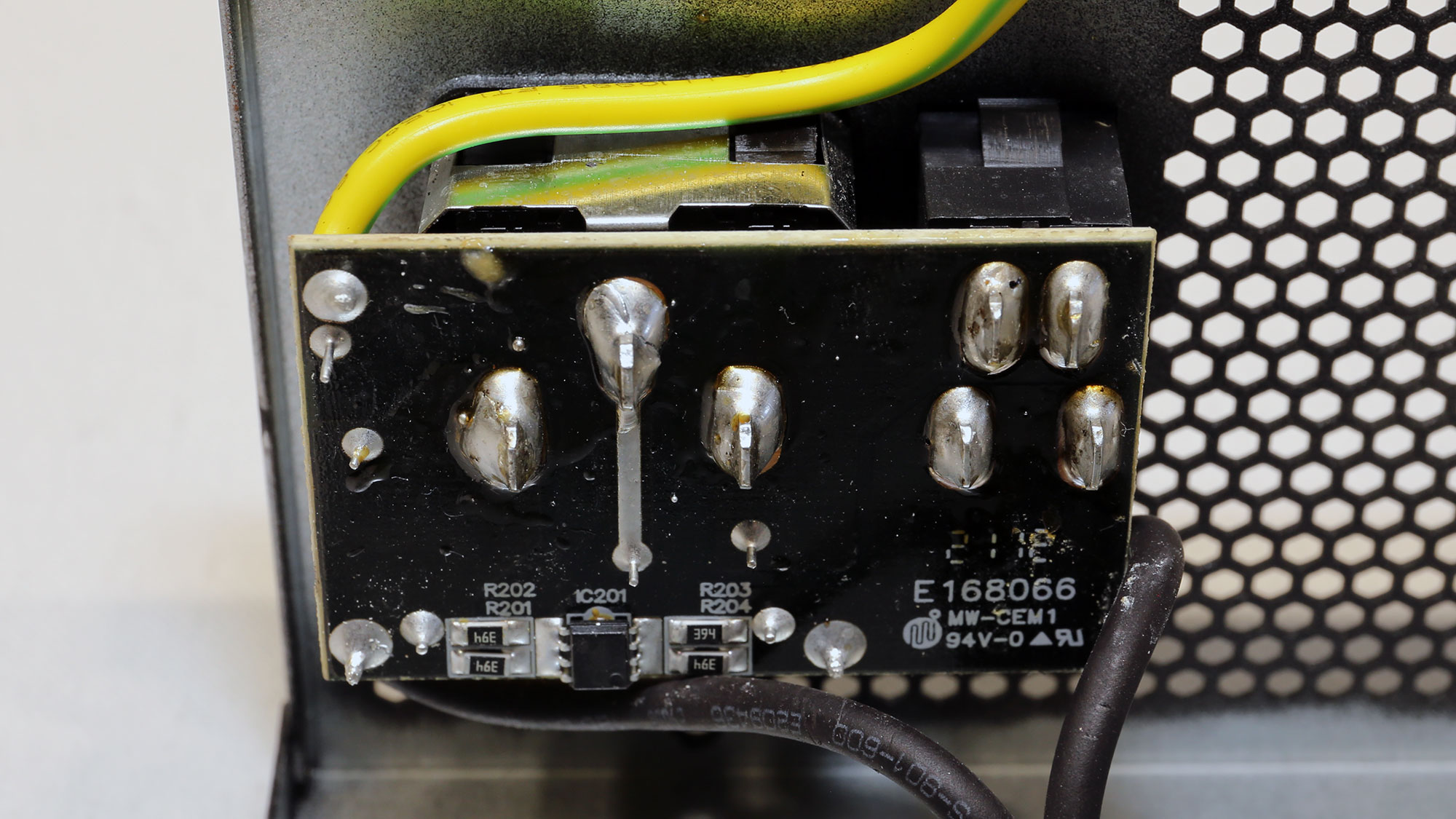
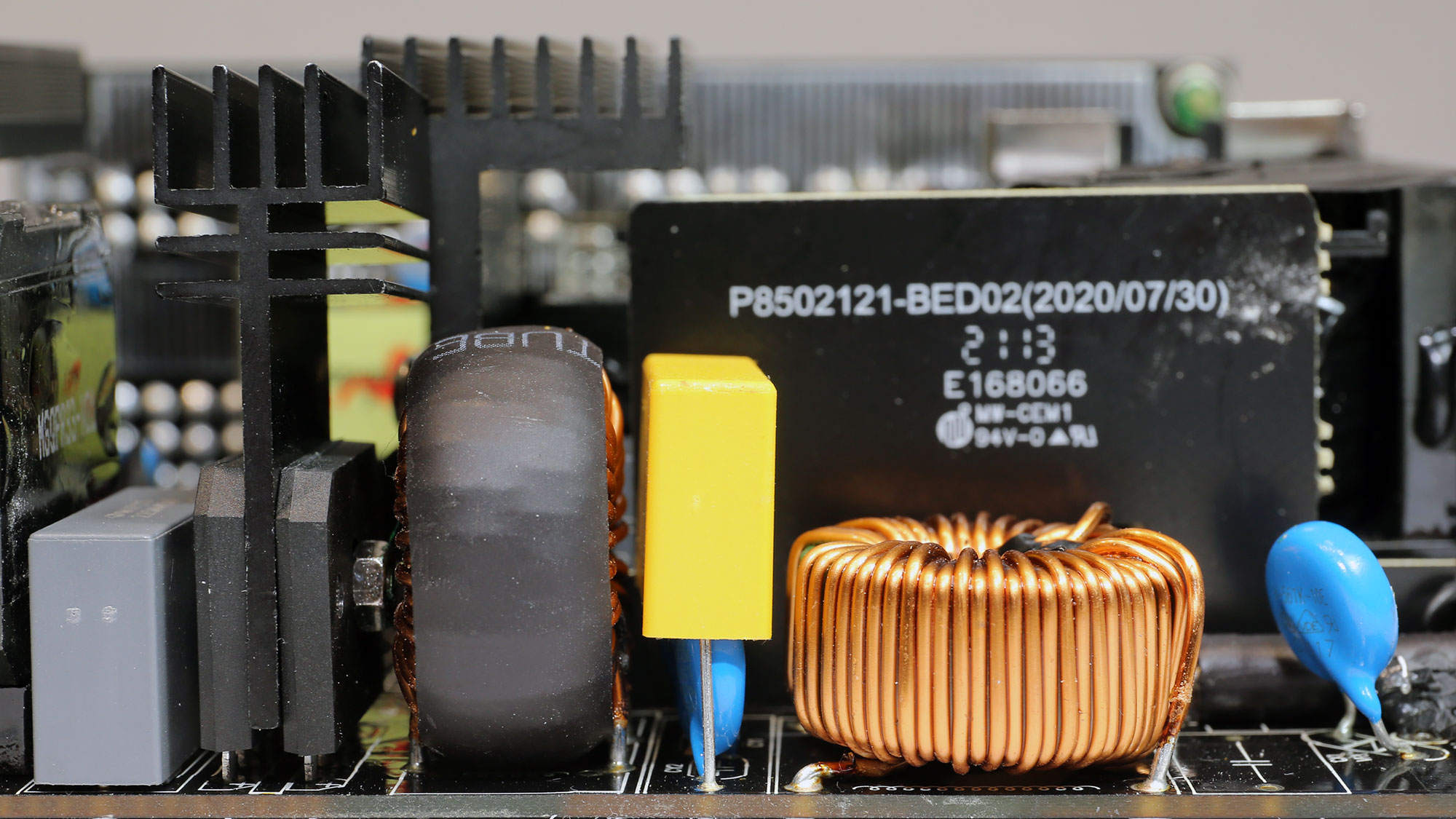
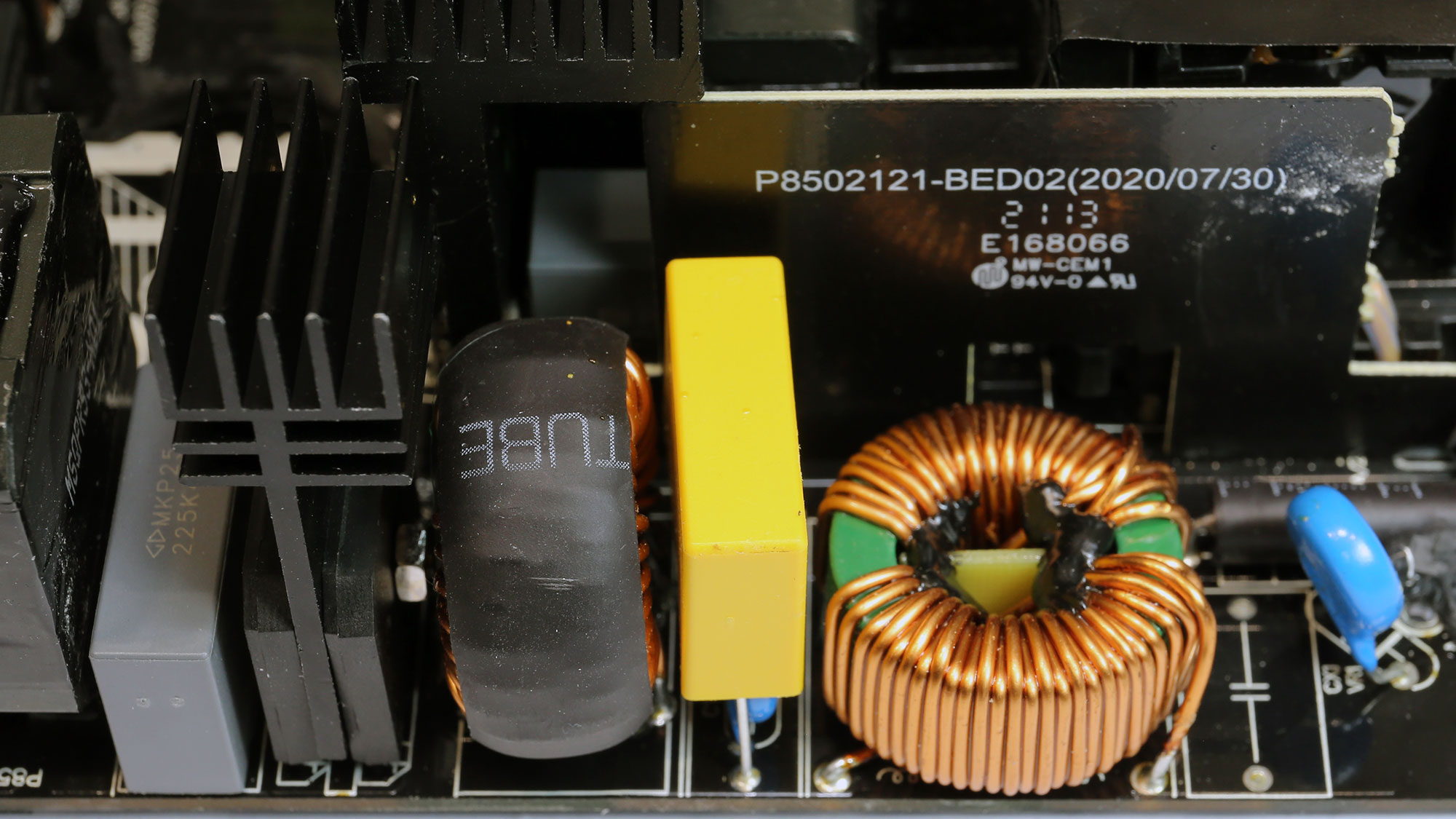
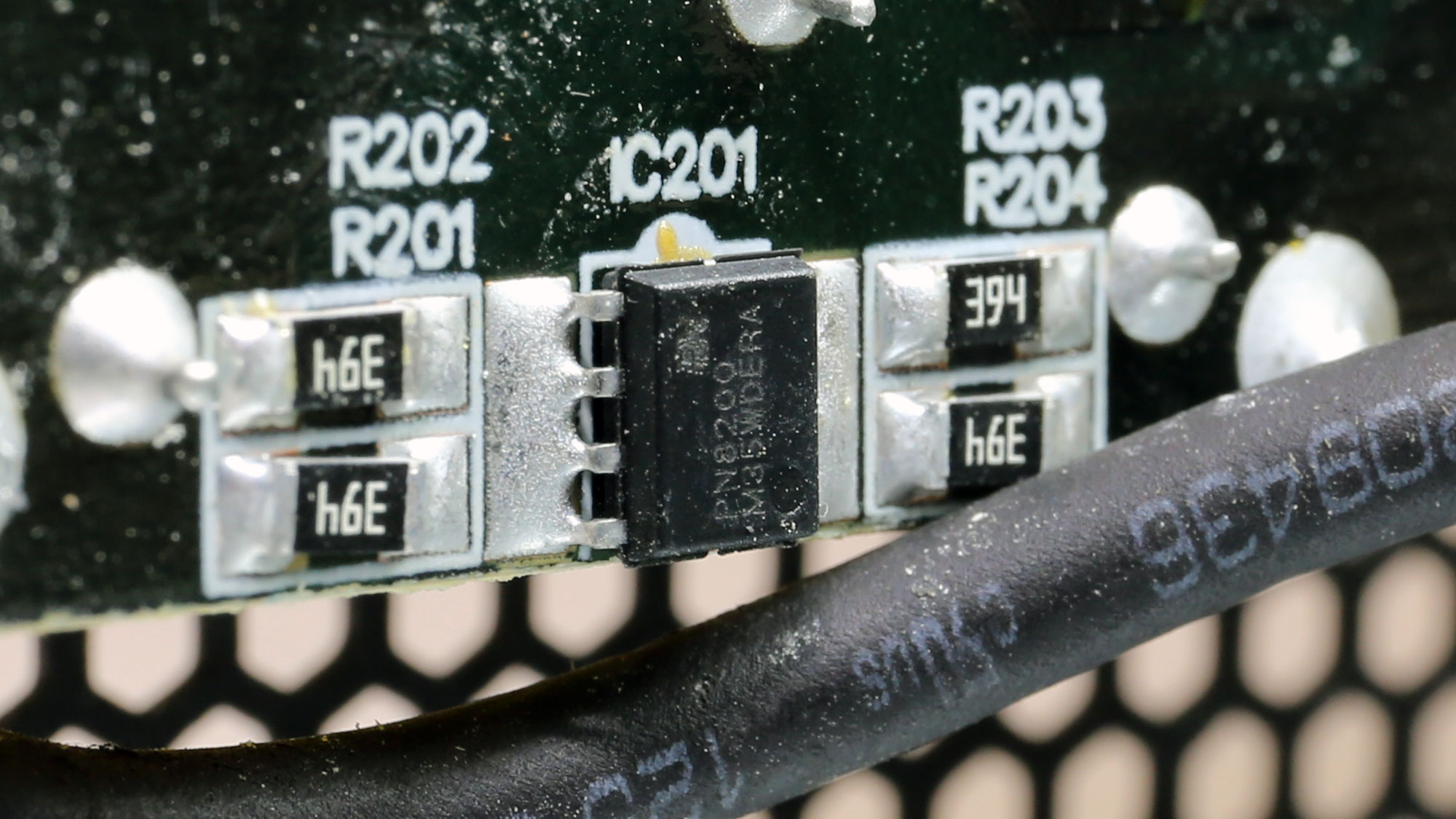
The transient/EMI filter has all necessary parts, including a discharge IC to provide a slight energy boost.
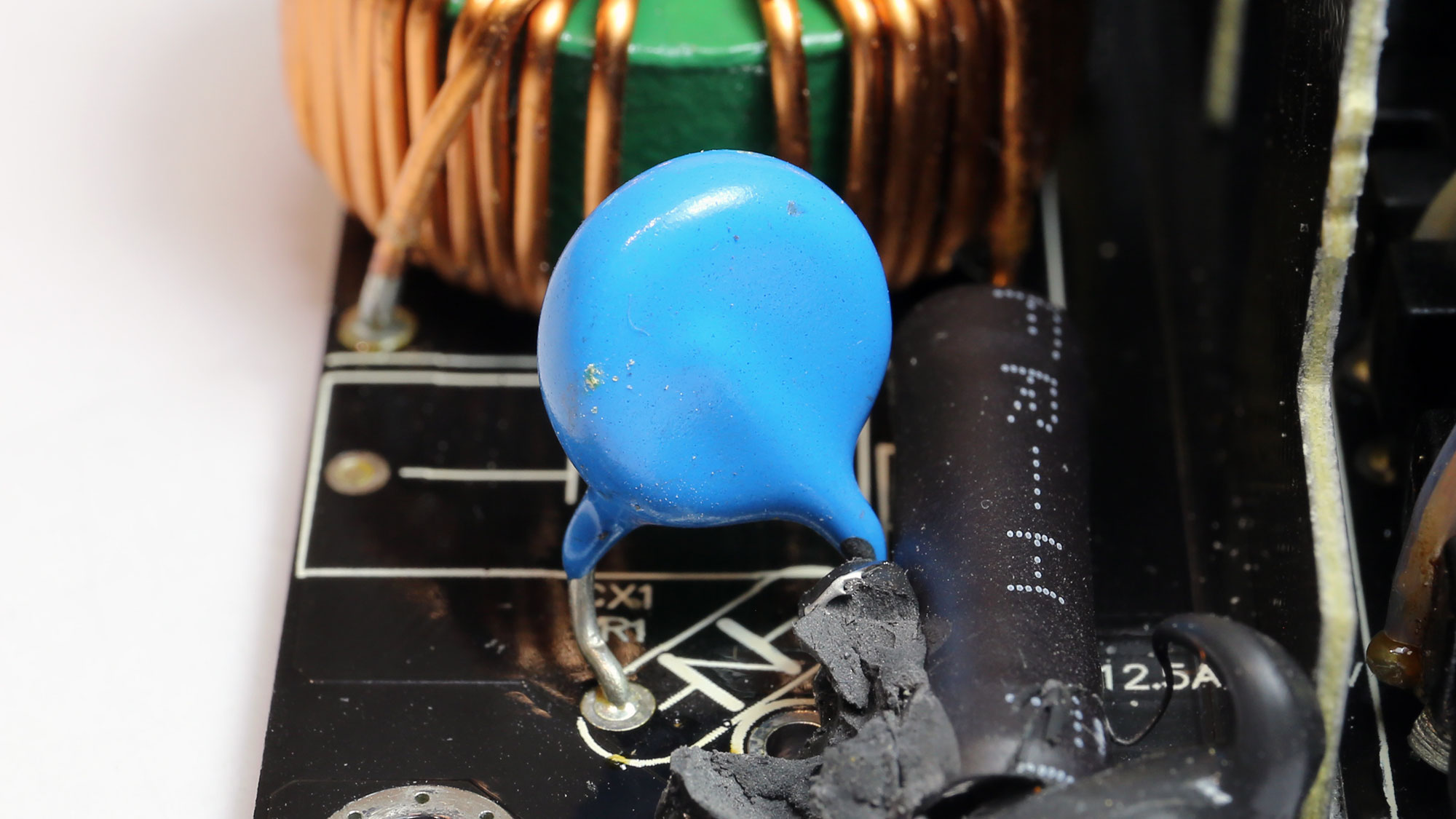
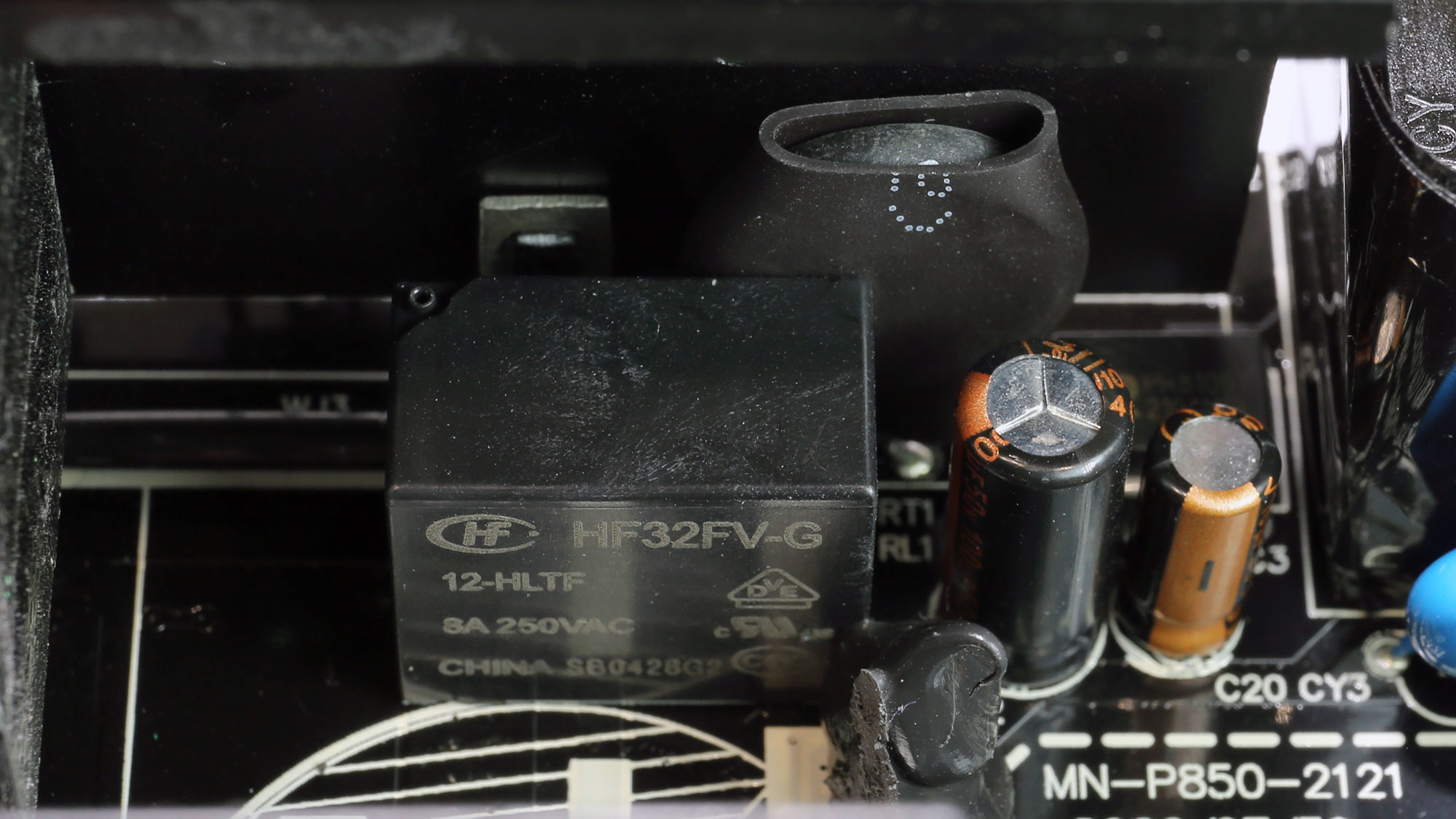
An MOV and an NTC thermistor handle surge and inrush current protections. A bypass relay supports the latter.
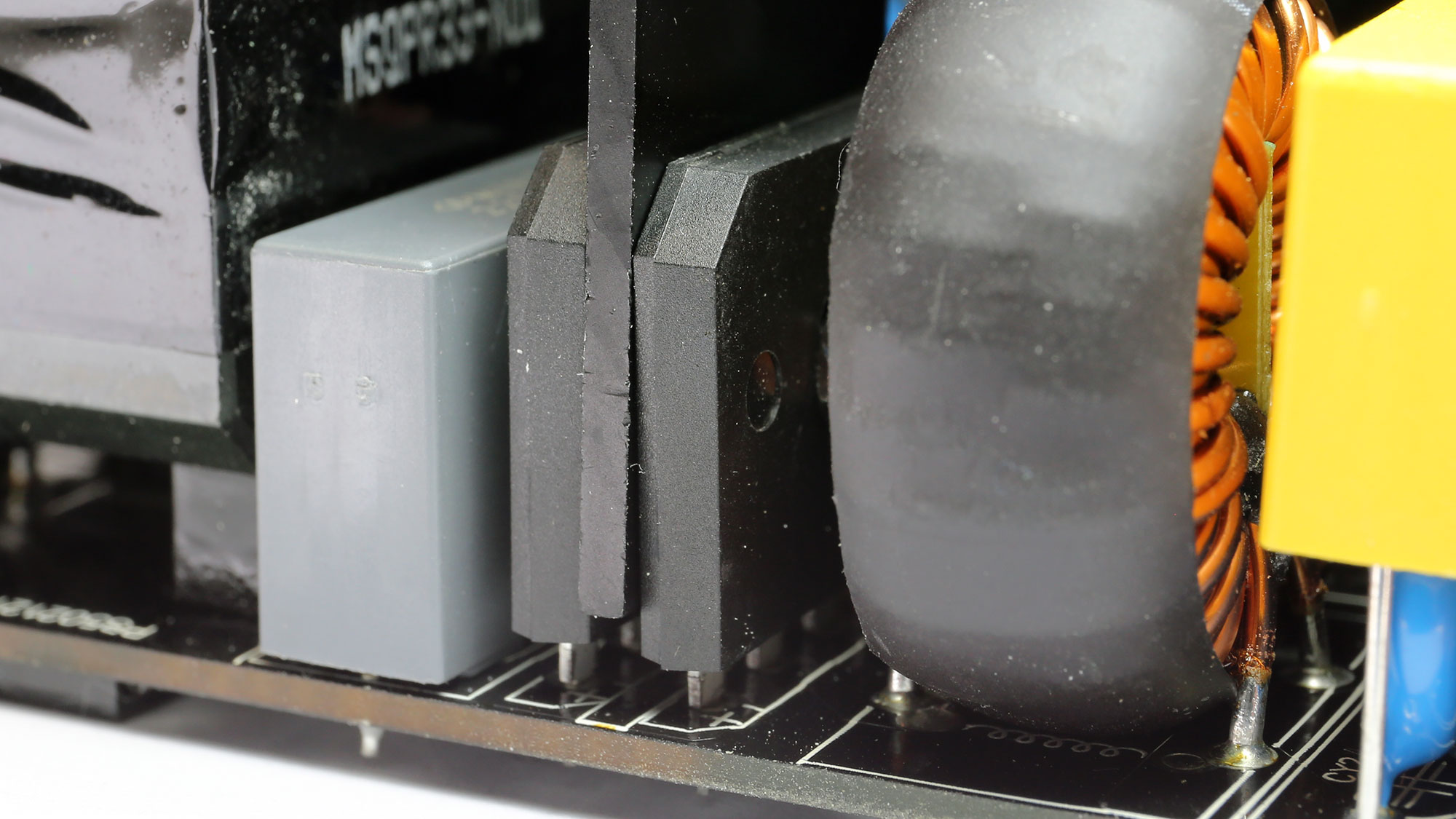
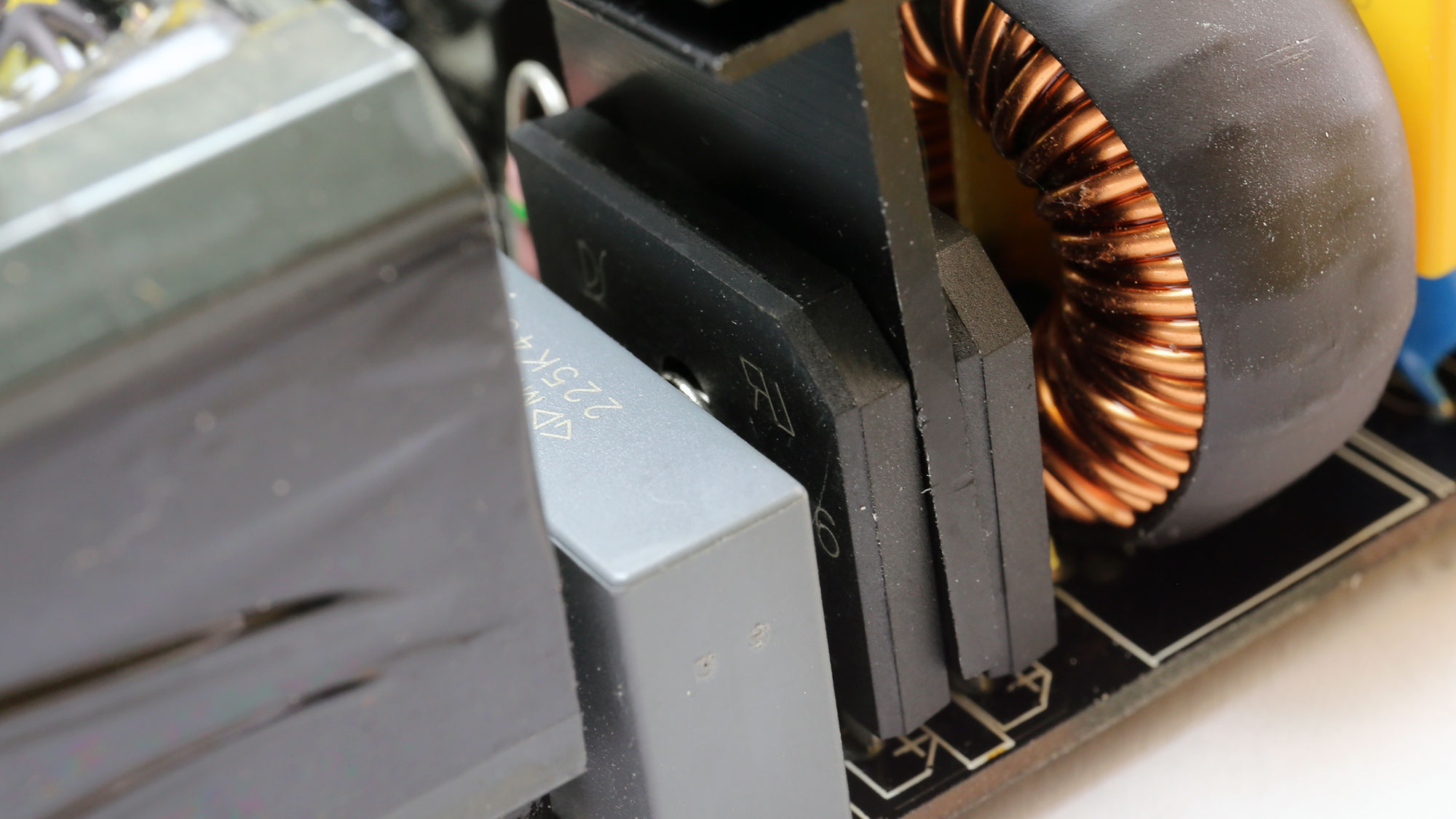
The pair of bridge rectifiers can deliver up to 30A, combined.
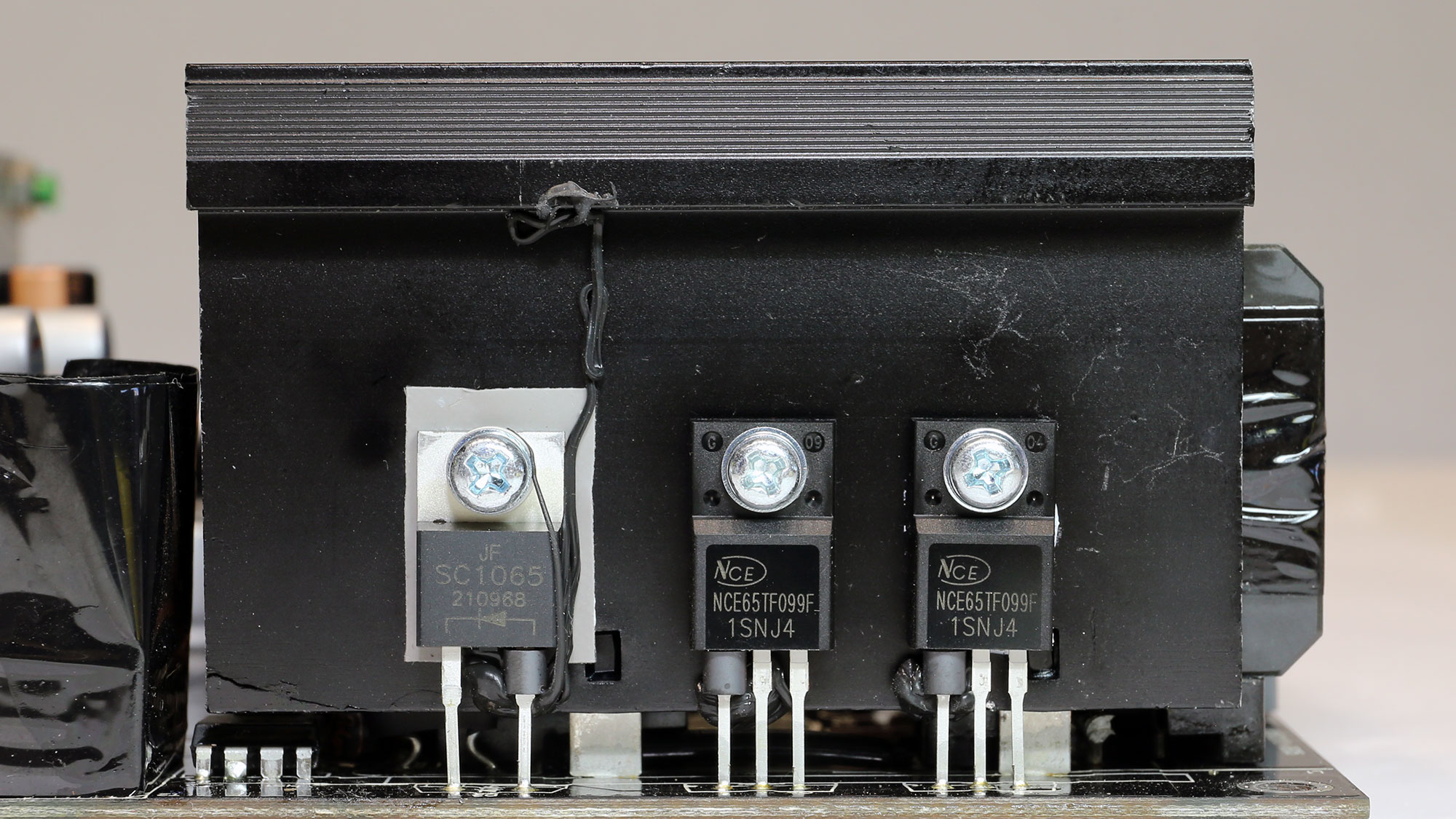
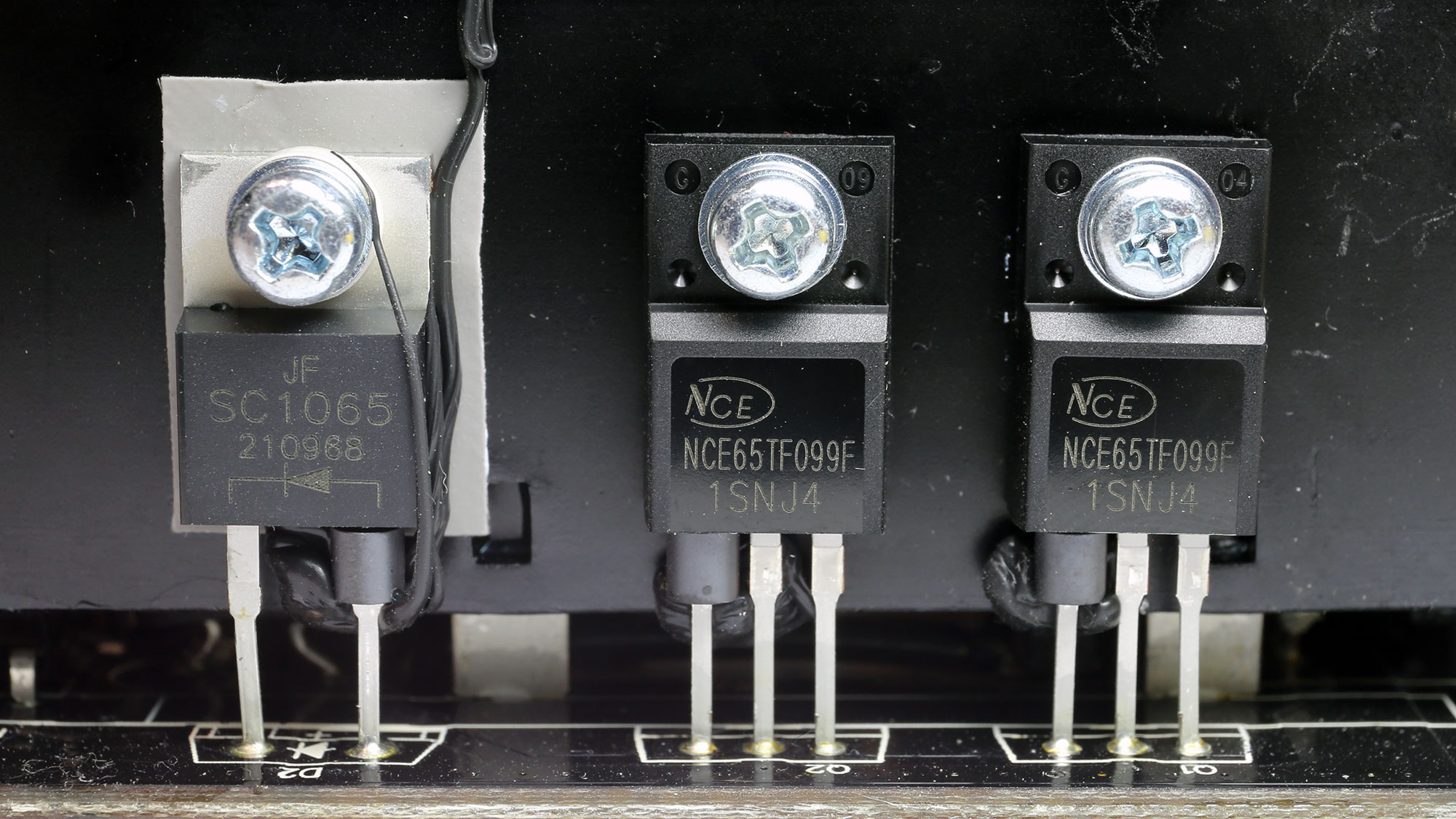
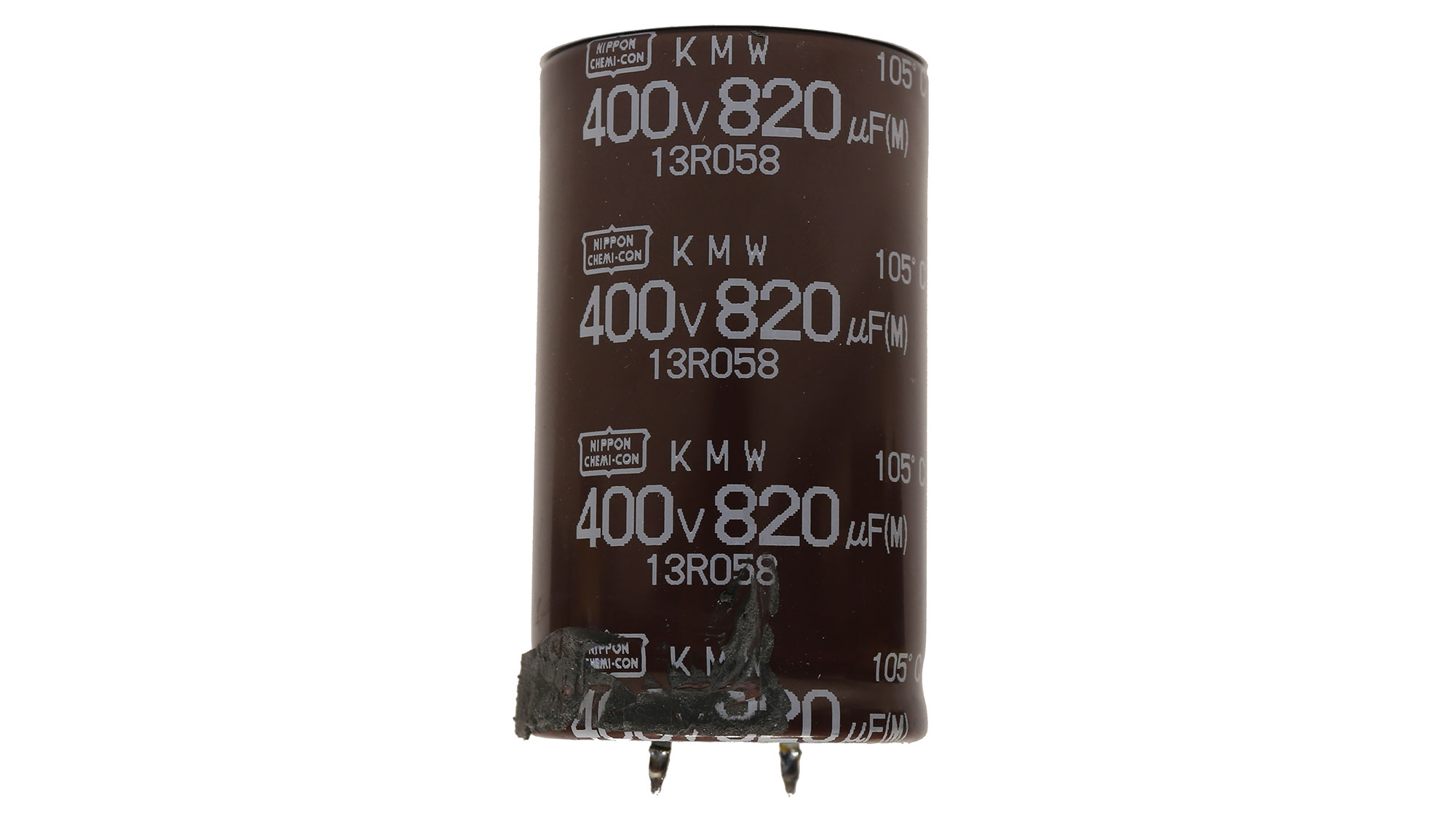
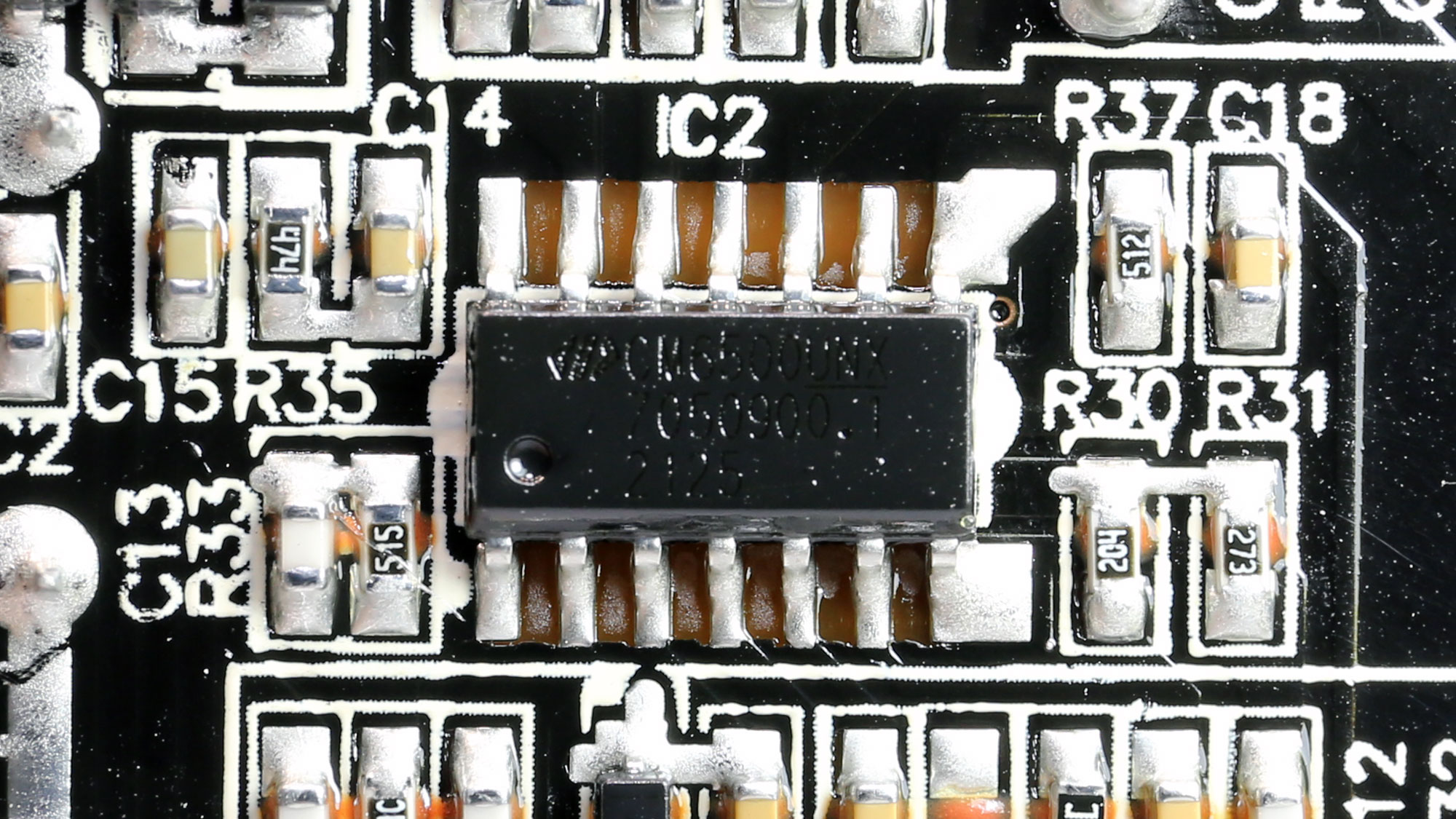
The APFC converter uses two FETs and a single boost diode, which can handle up to 10A. The bulk cap is by Chemi-Con and belongs to a good line (KMW).
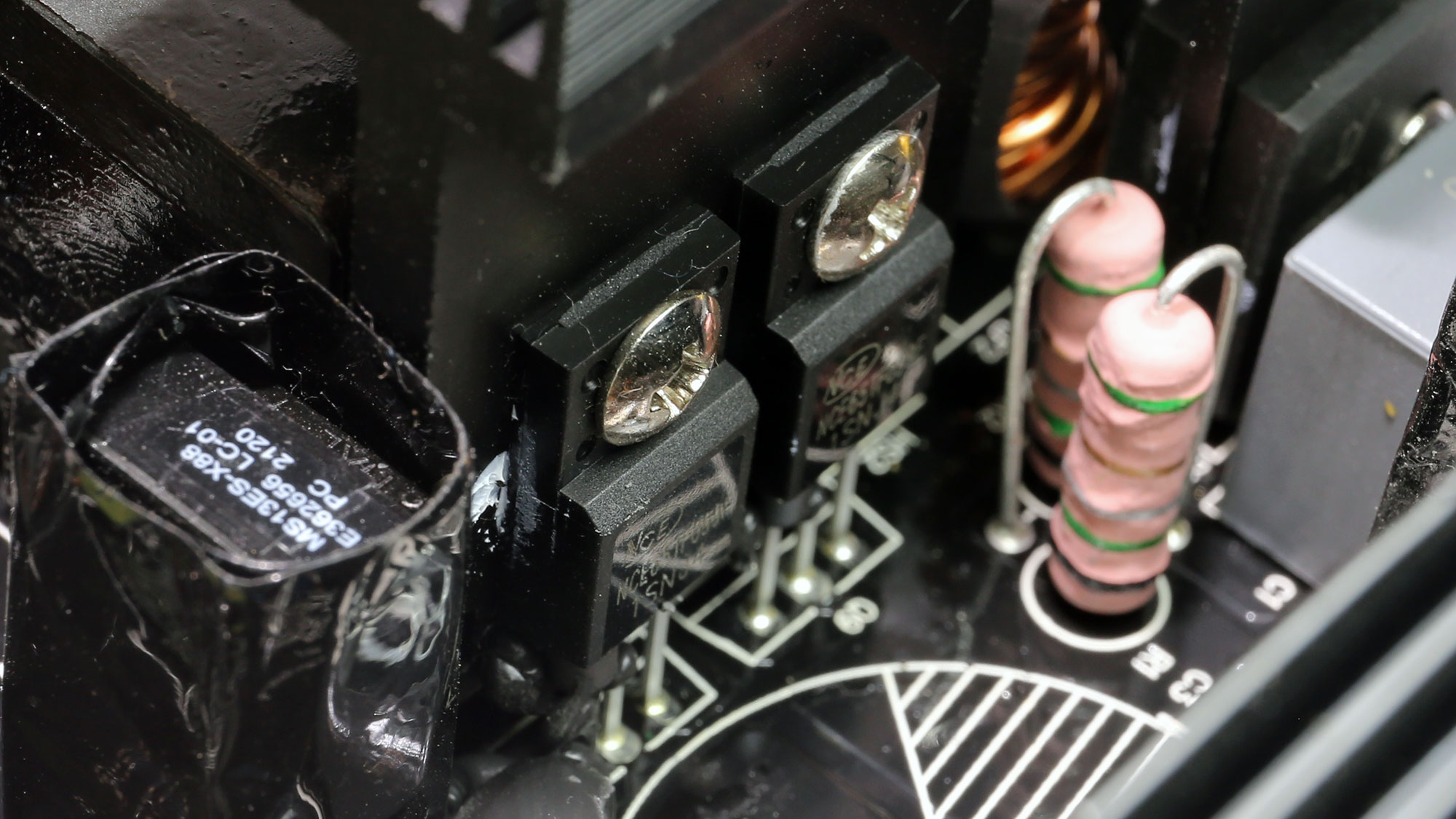
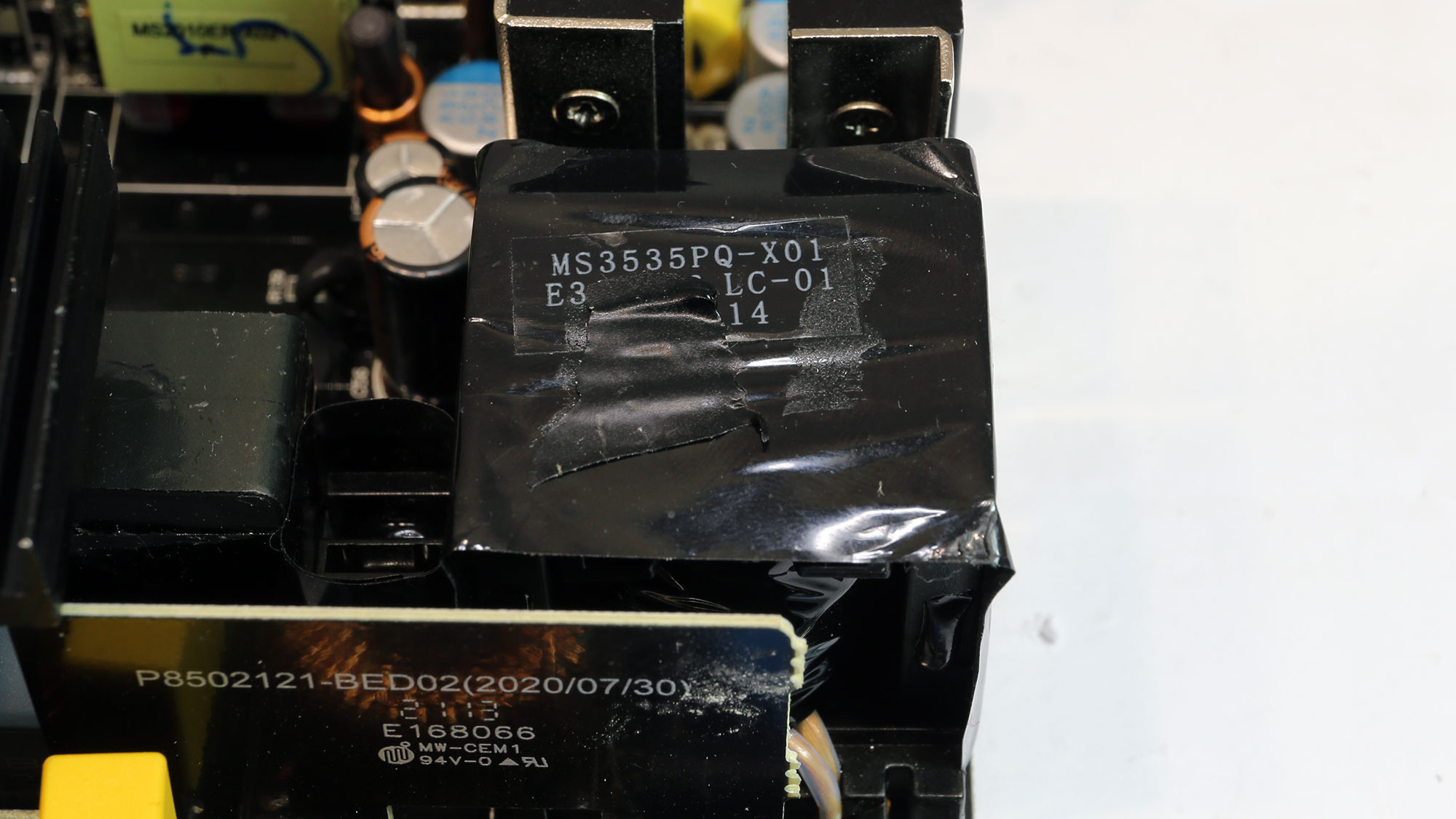
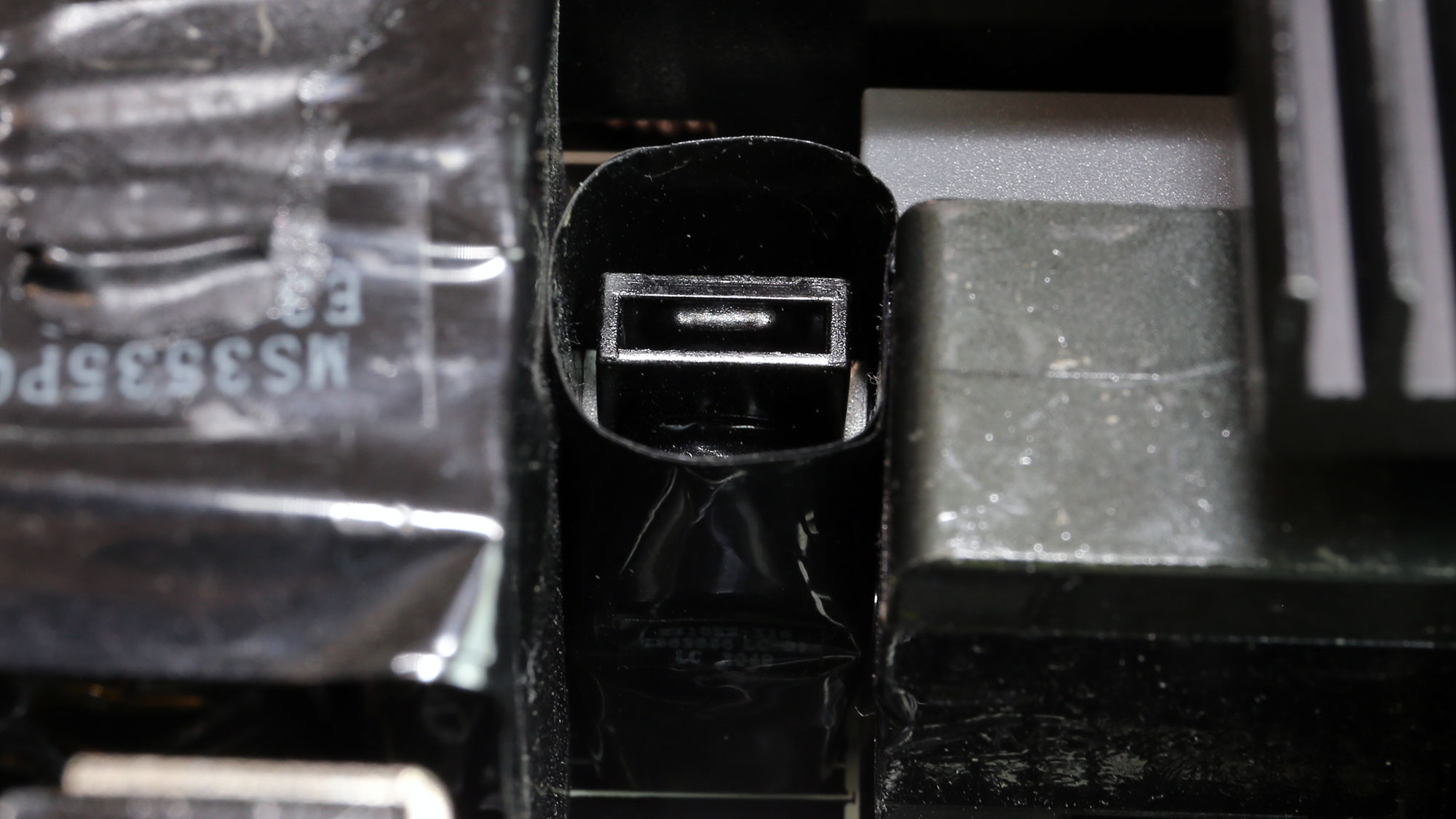
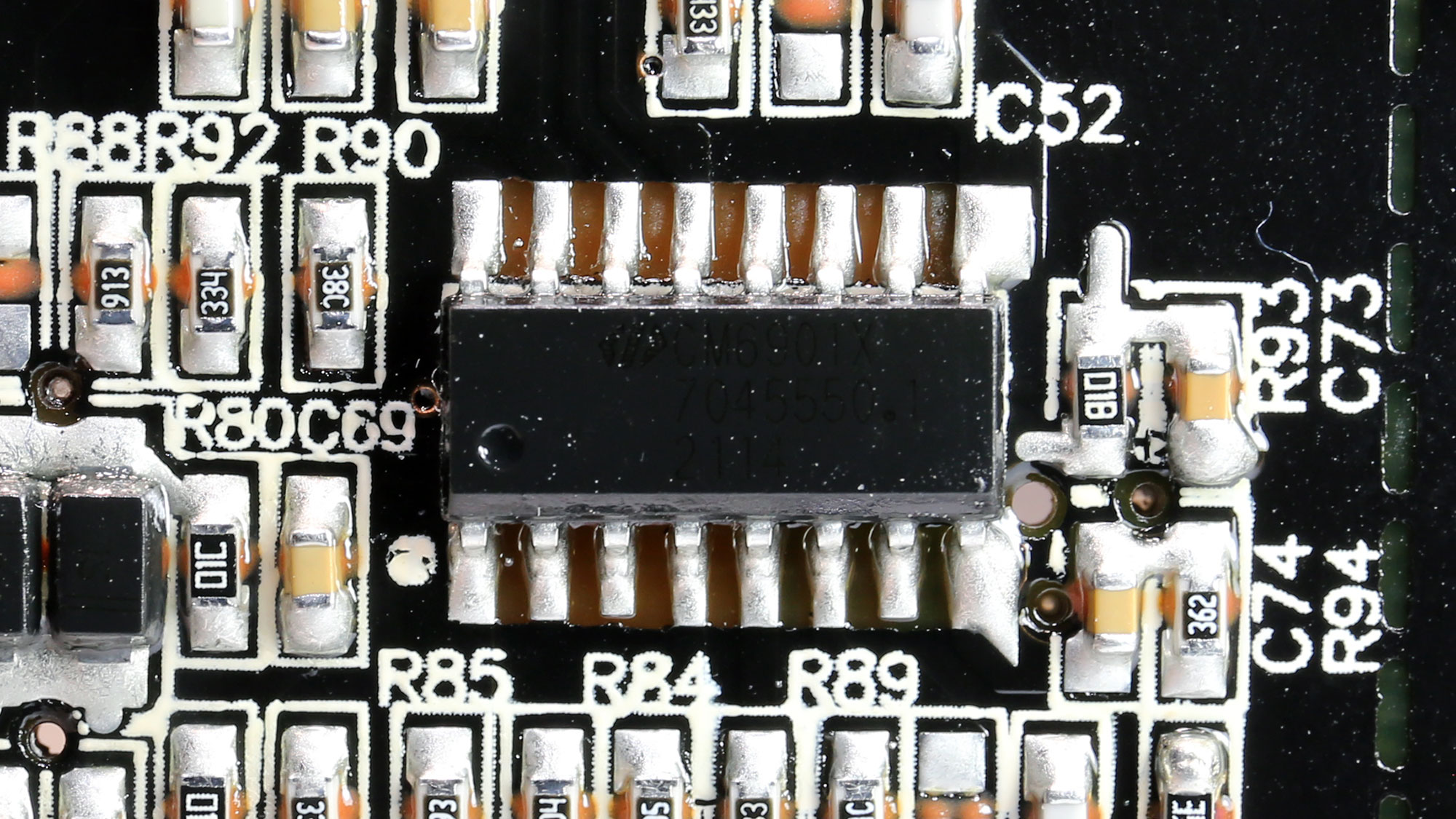
The main FETs are installed into a half-bridge topology. An LLC resonant converter is also used to boost efficiency.
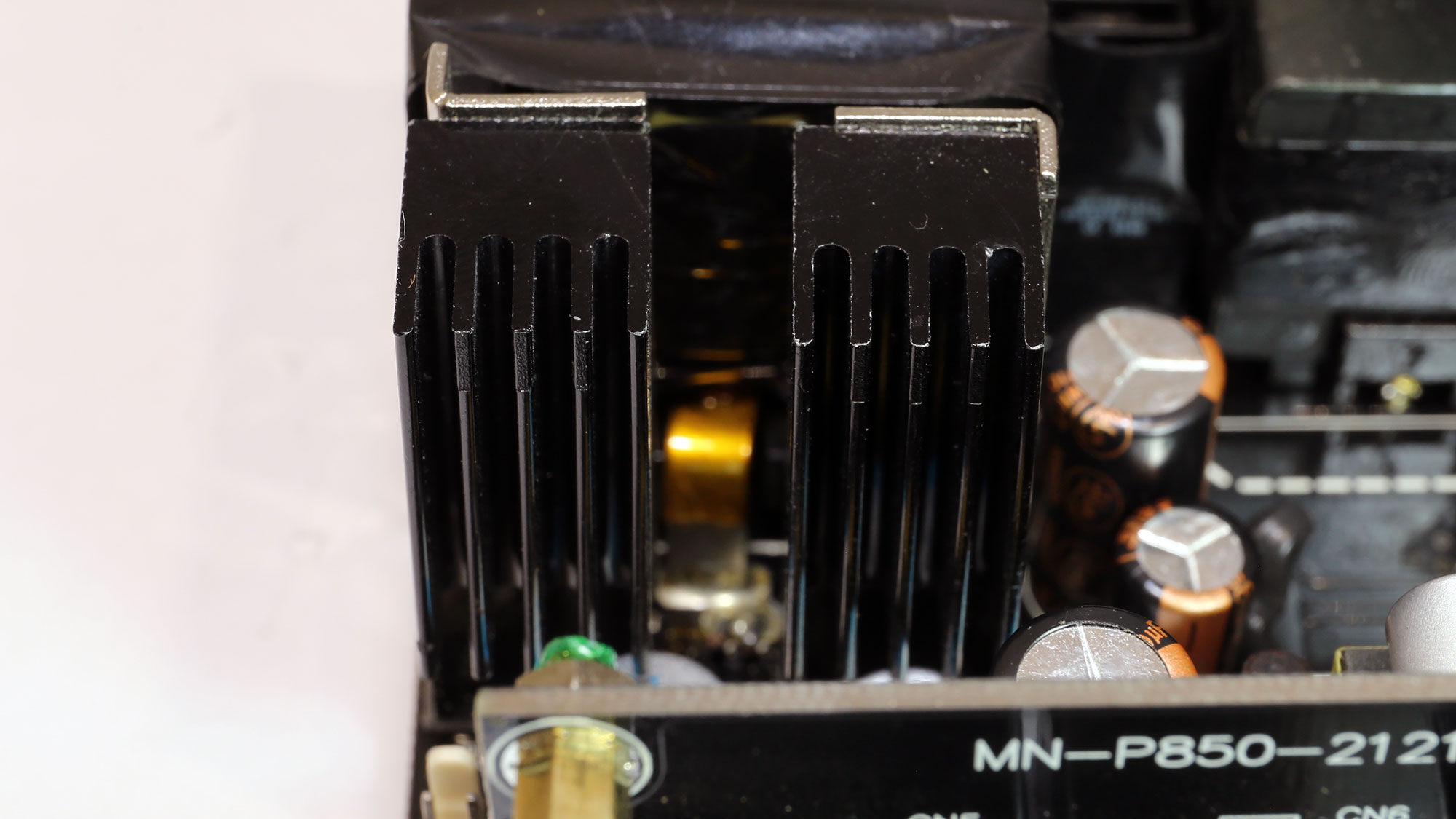
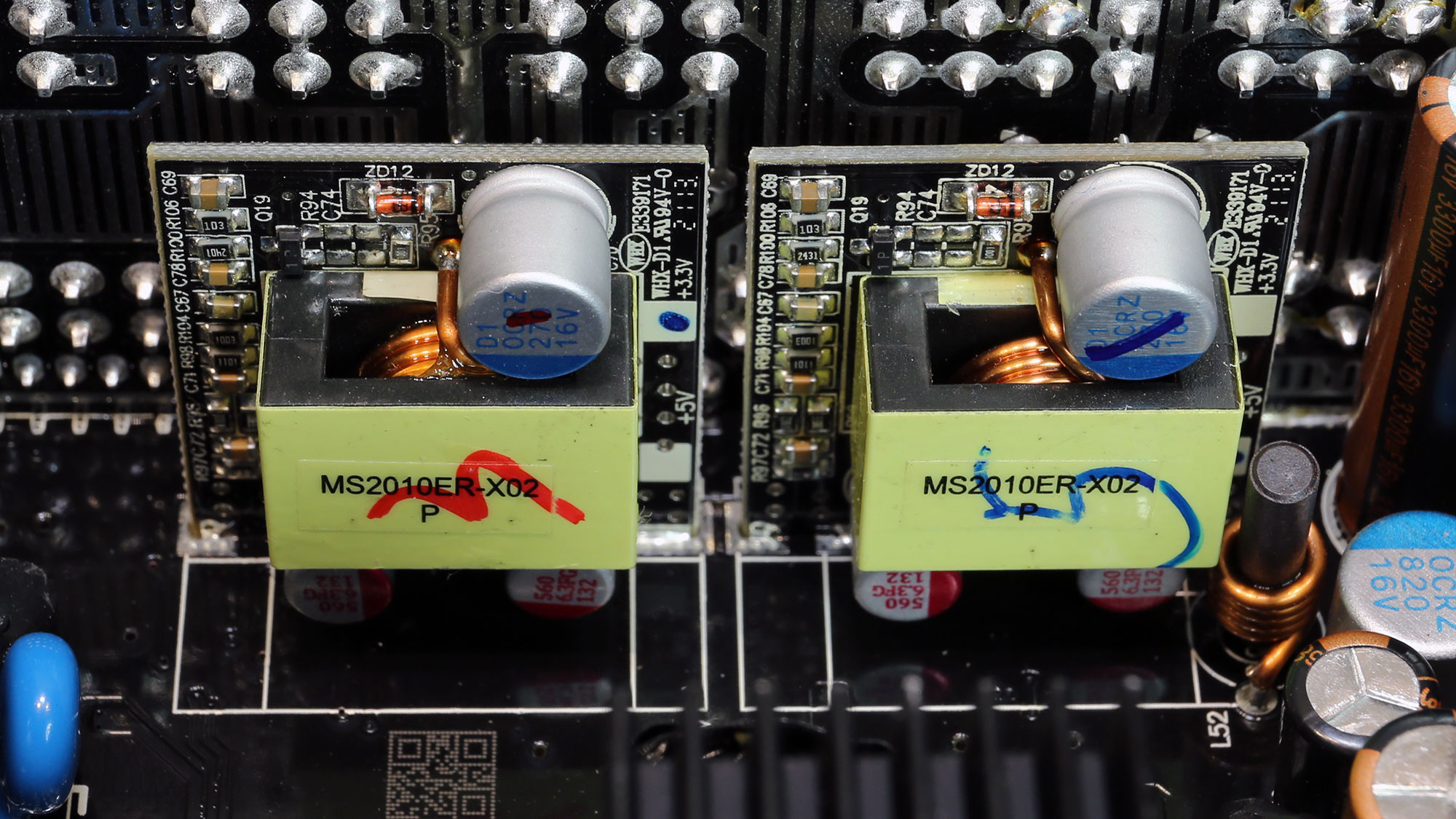

Two heat sinks hid the 12V FETs, which are installed on the business side of the PCB. We didn't try to remove the latter because we could harm the FETs, rendering the PSU useless.
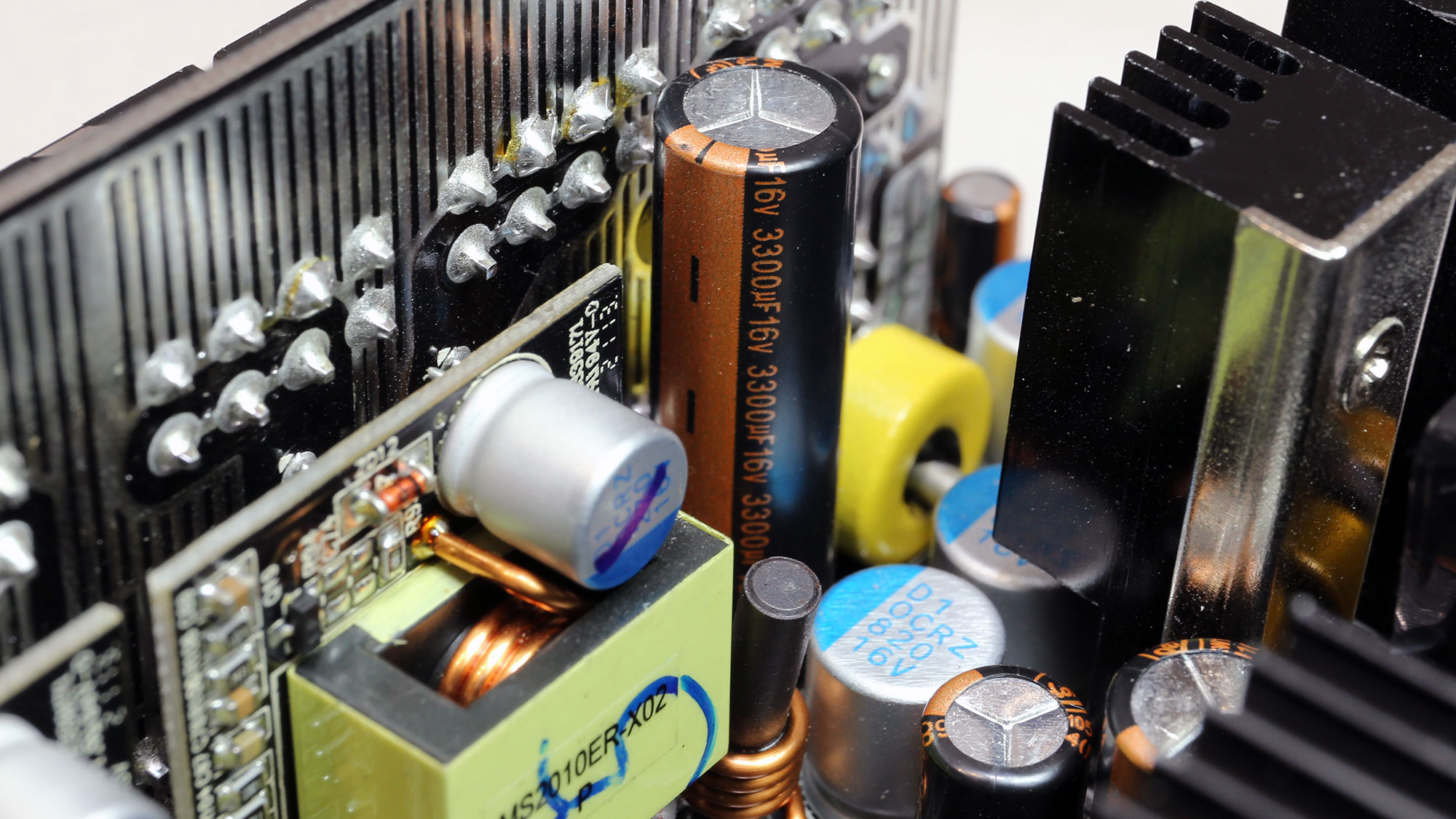
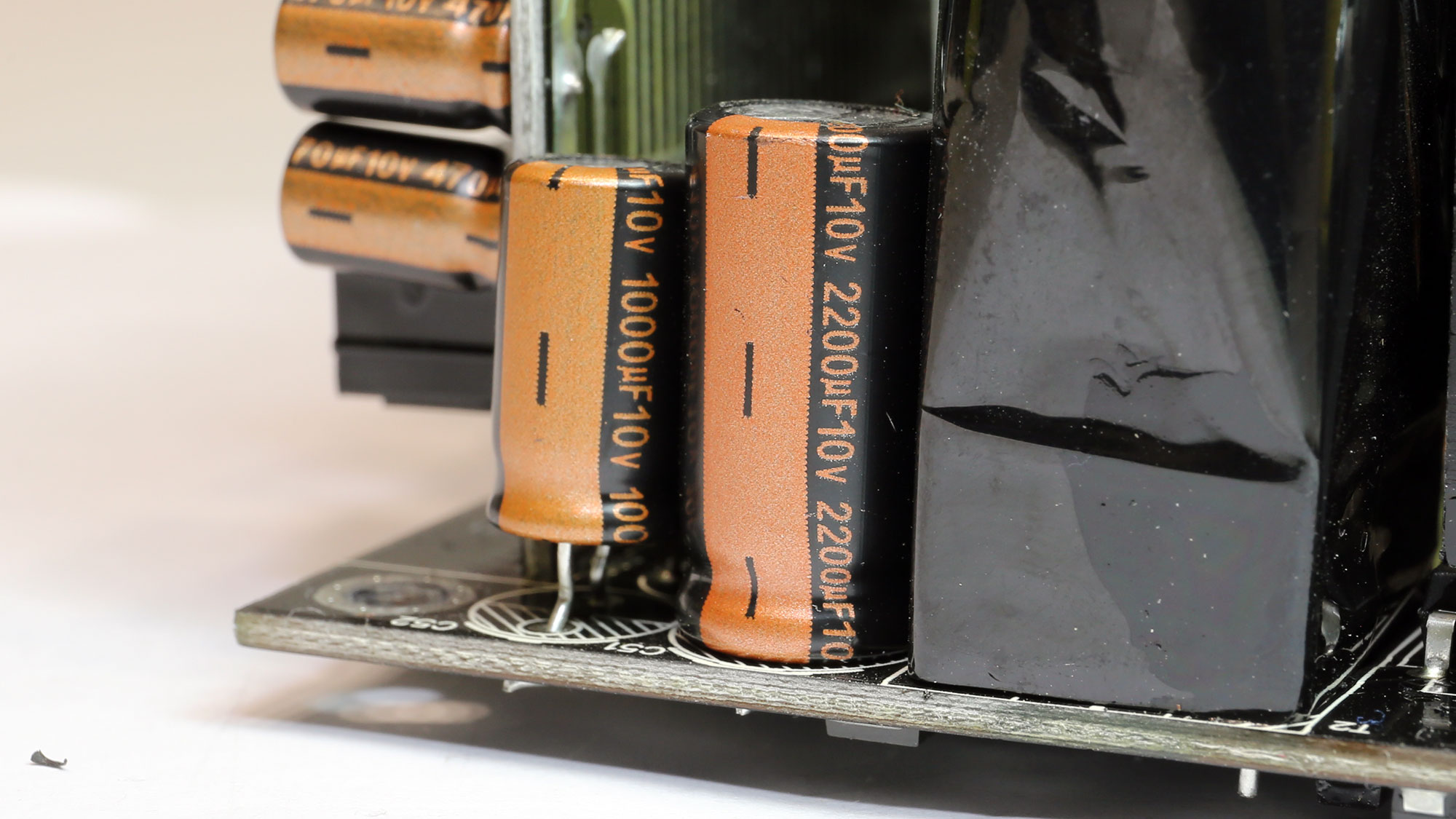
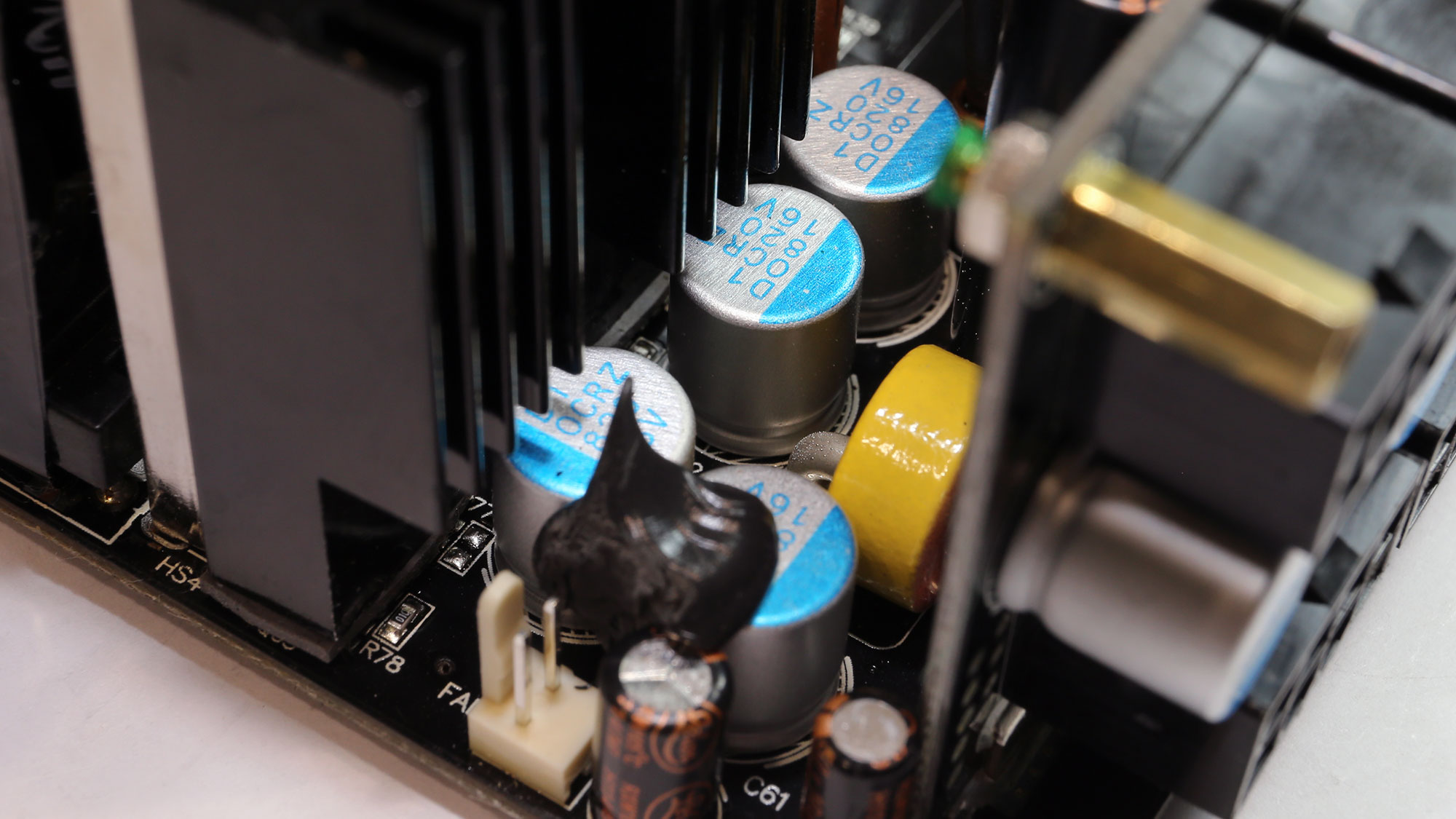
The filtering caps are by Lelon, a brand that is not among the know ones. However, in today's market, it is super tough and expensive to find caps from top-notch manufacturers like Chemi-Con and Rubycon, so you should get used to seeing less known caps.
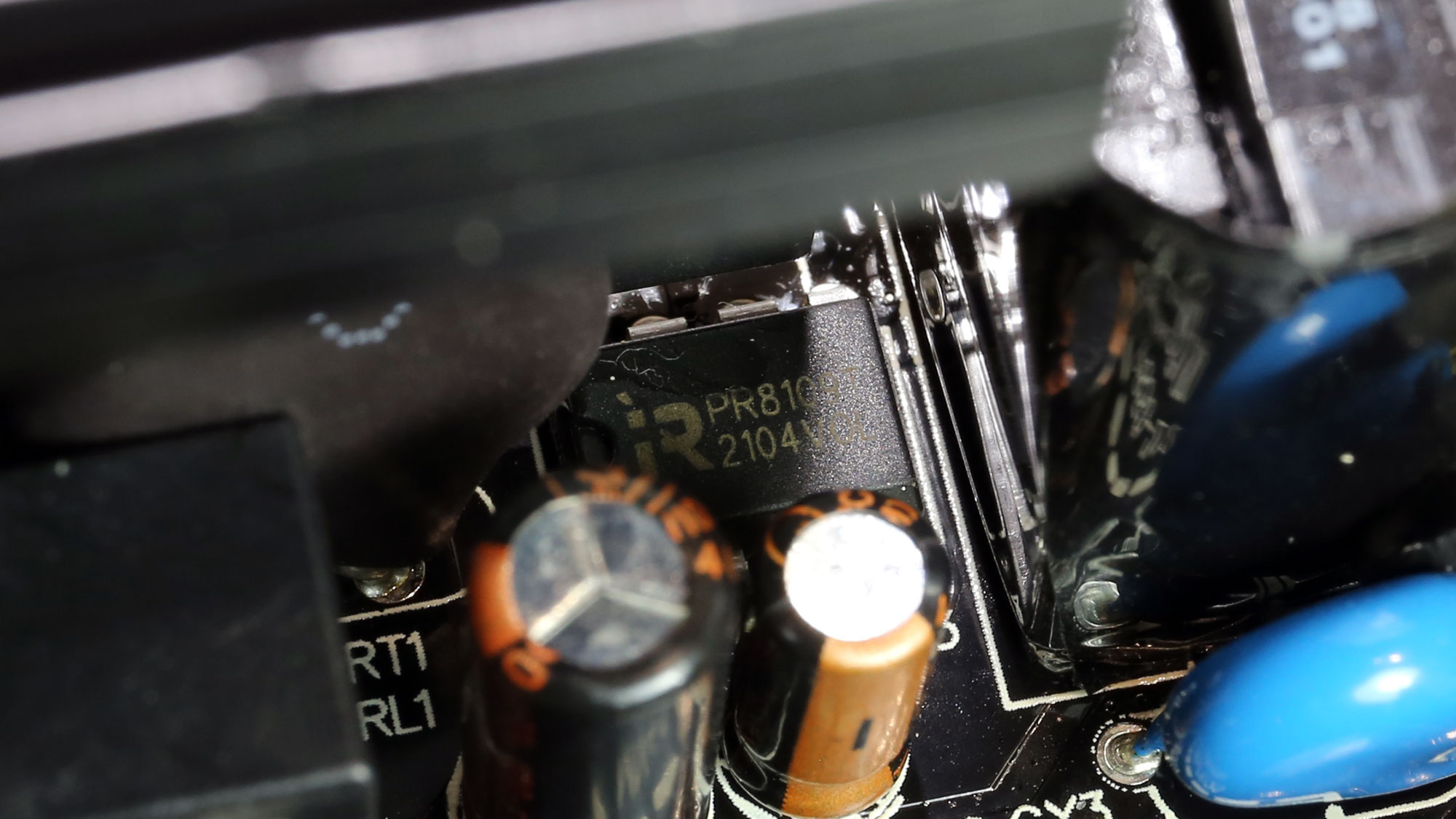
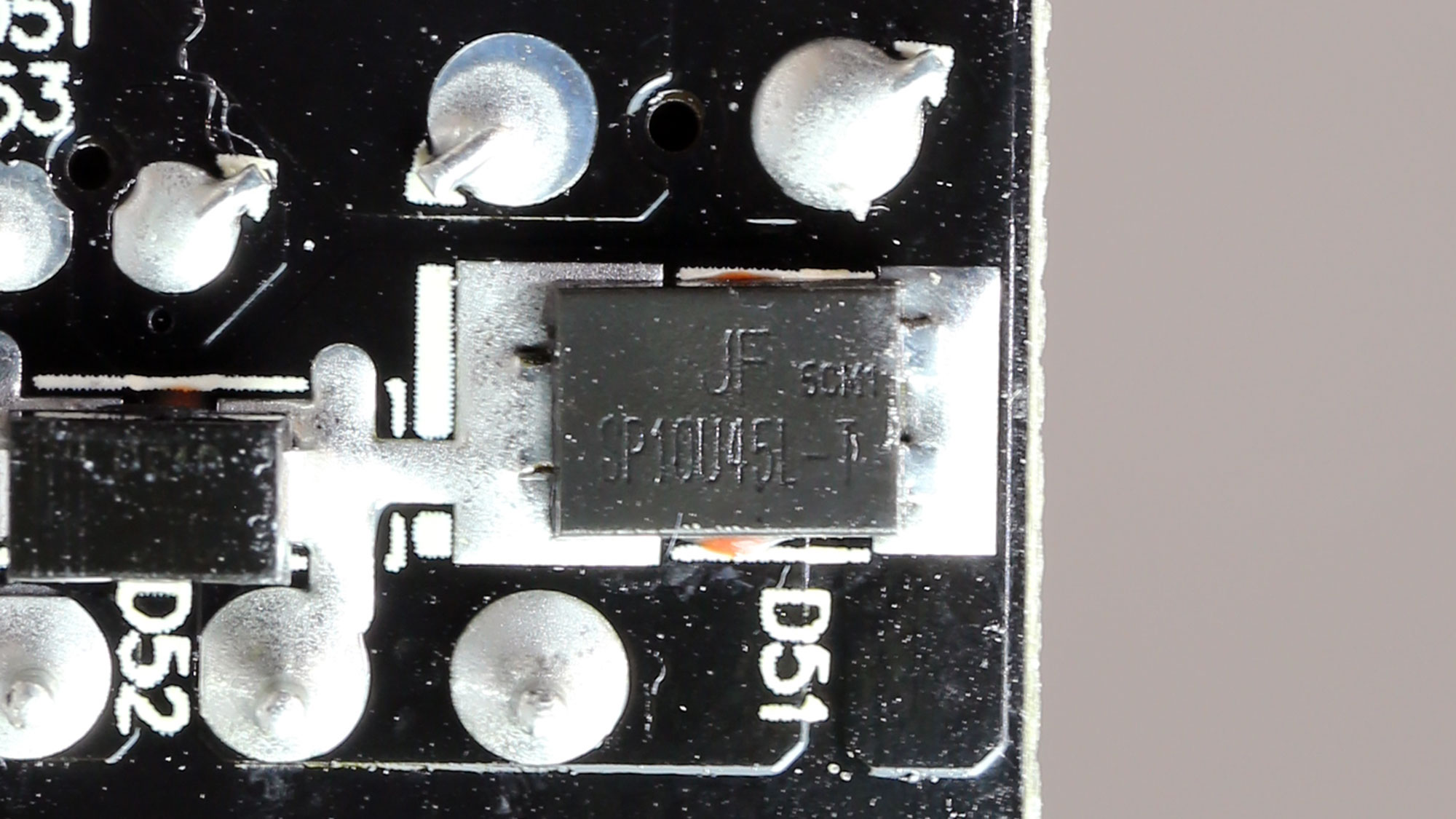
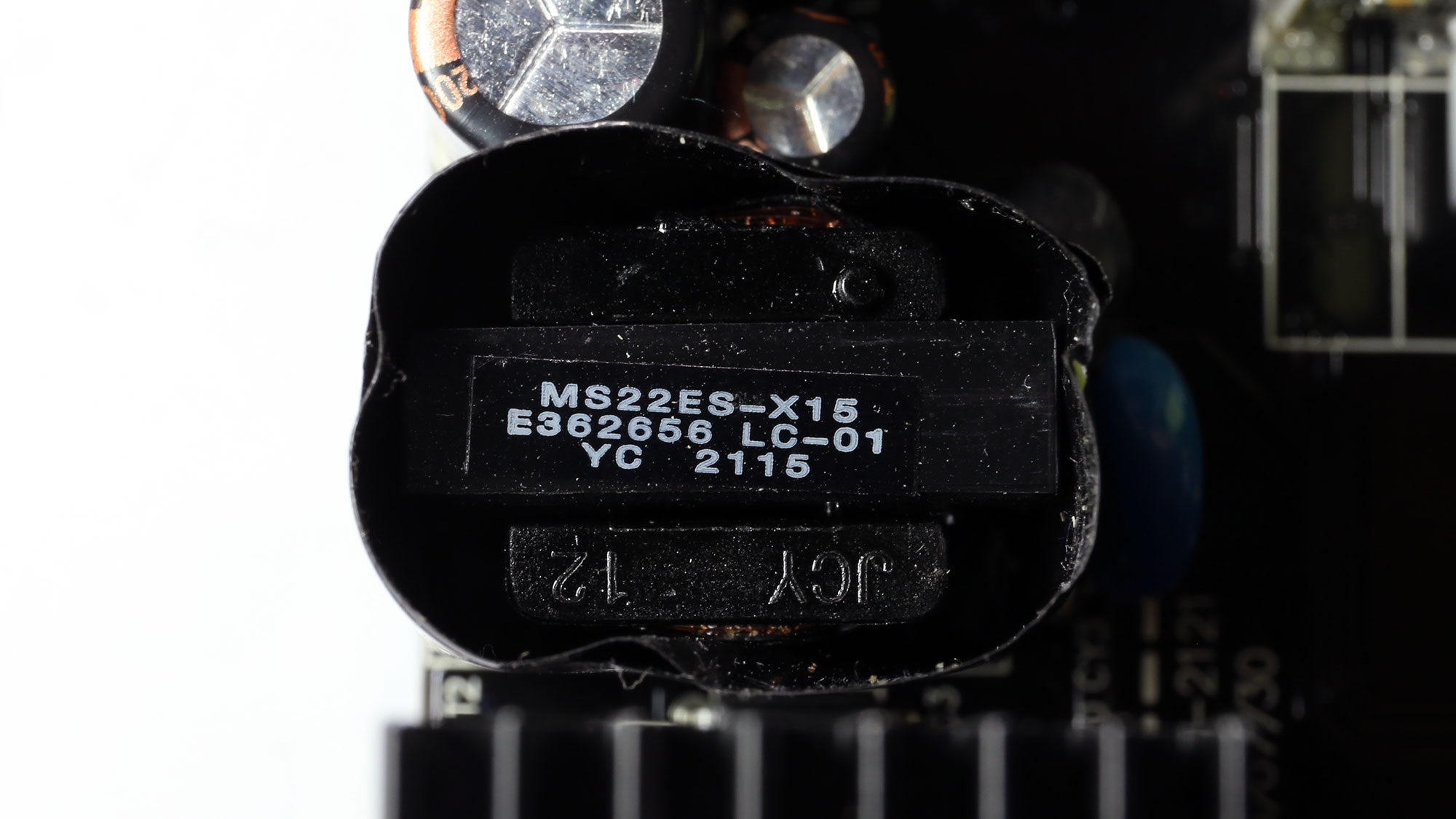
The standby PWM controller is a PR8109T IC and the 5VSB rectifier on the secondary side is an SP10U45L SBR.
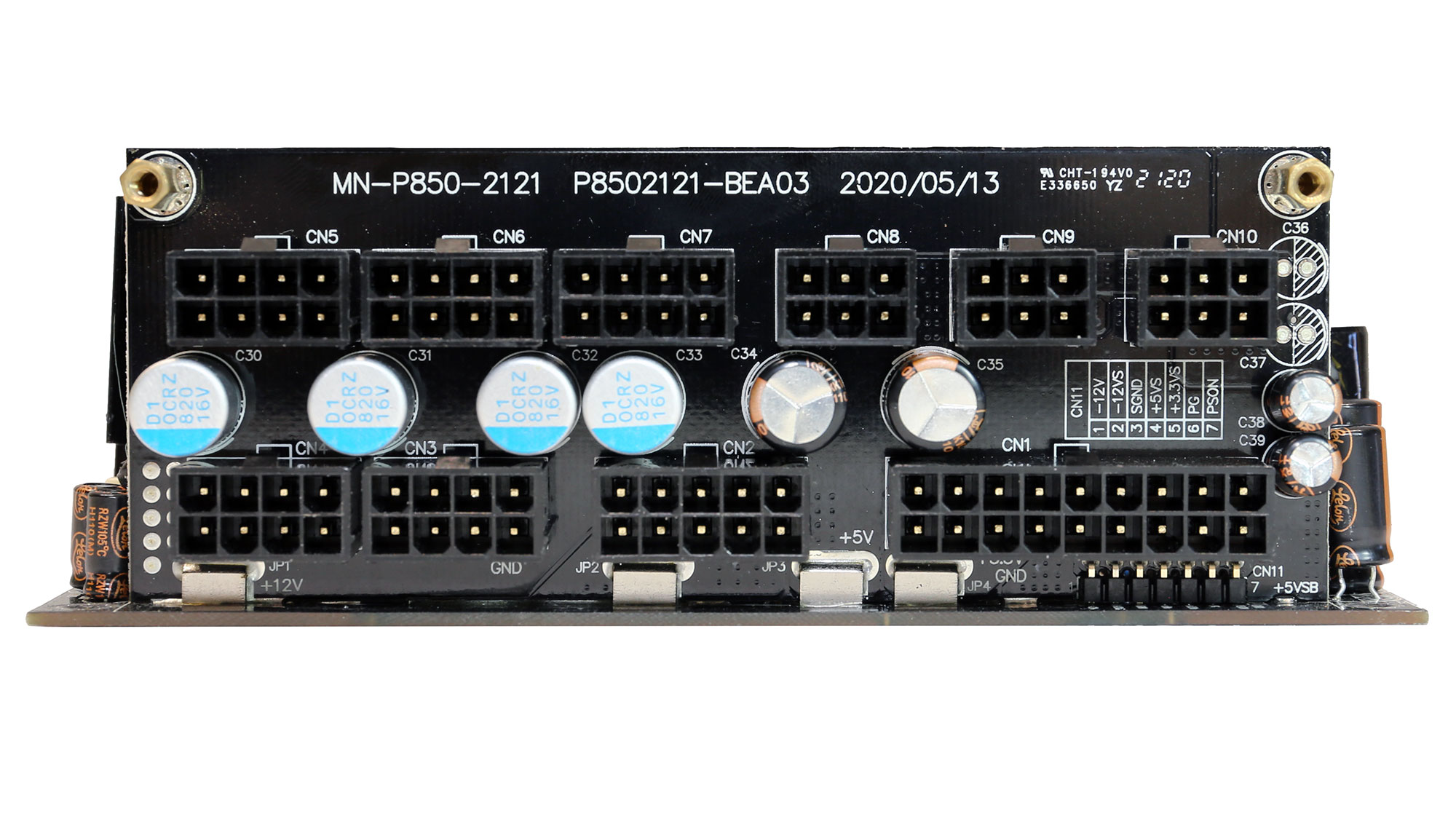
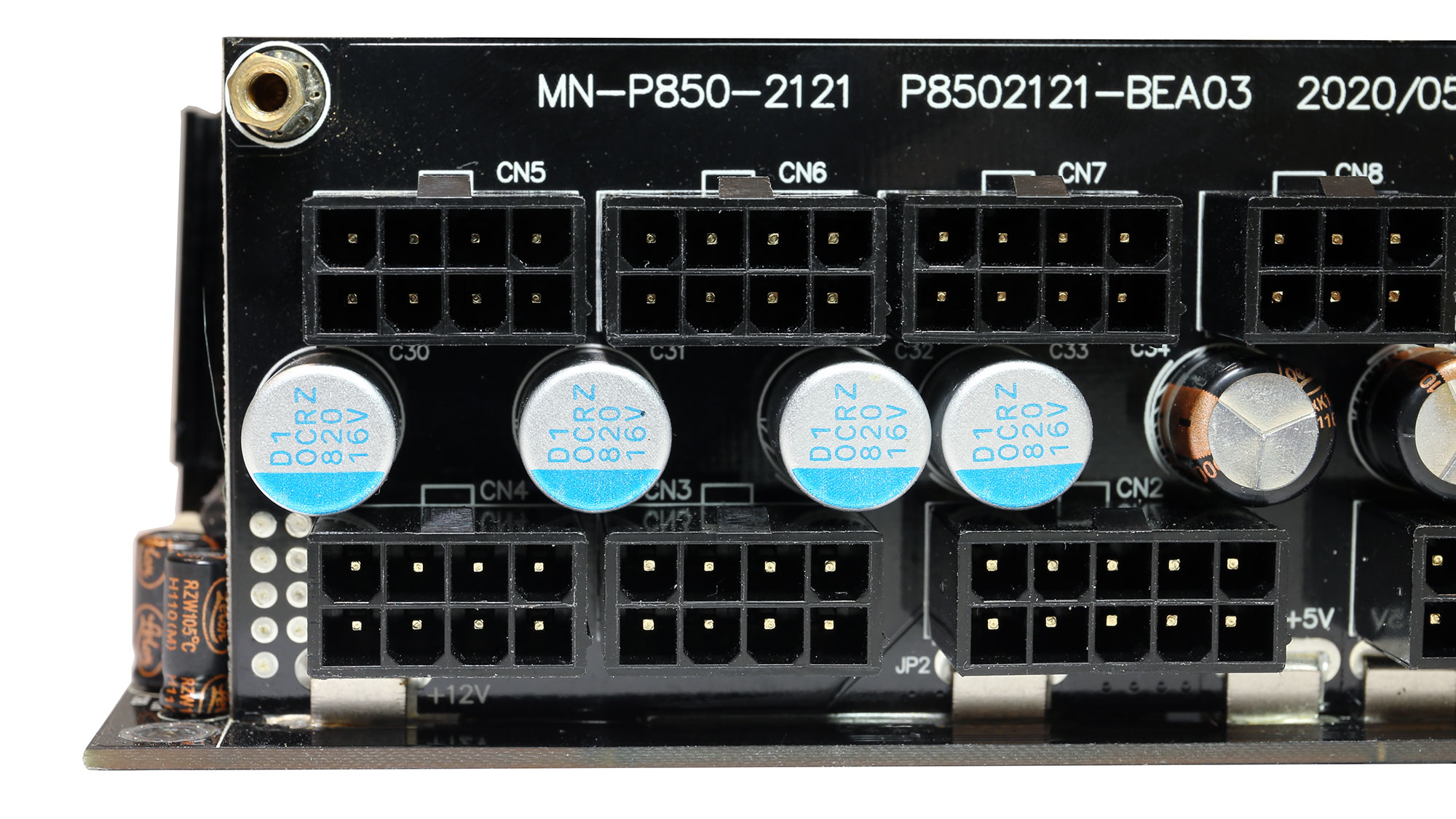
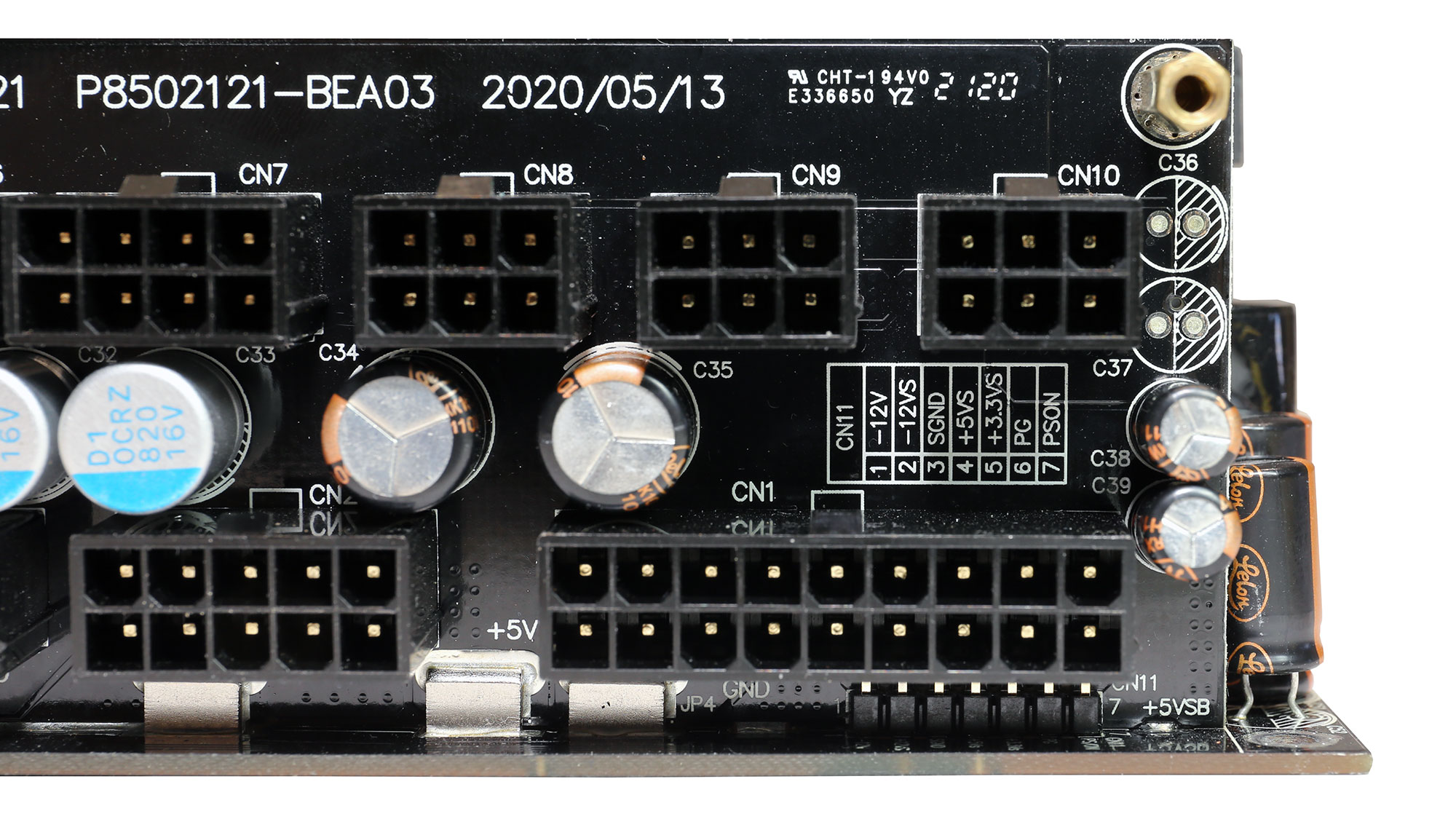
Several polymer and electrolytic caps are installed on the modular board, forming a secondary ripple filtering layer.
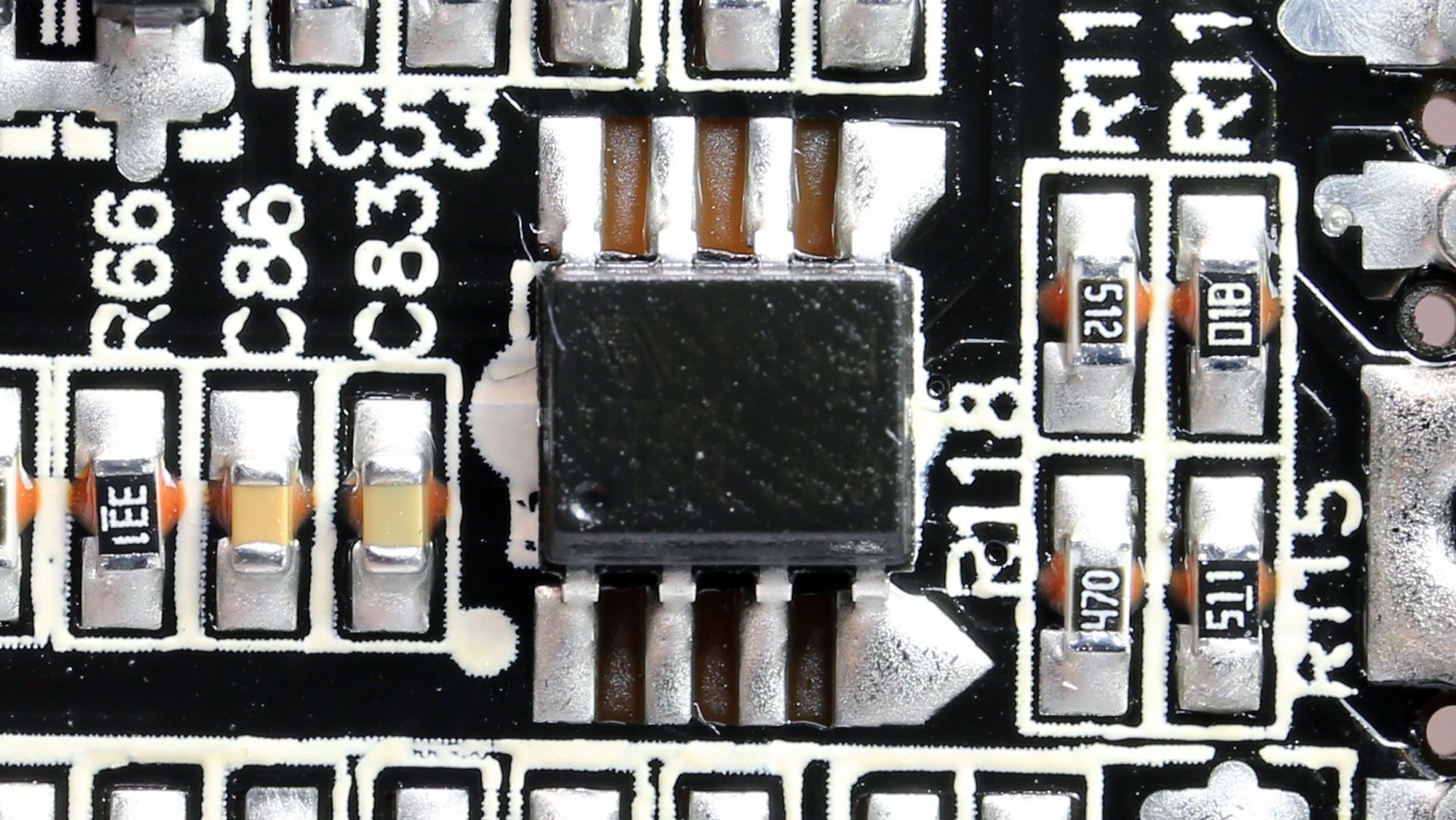
The main supervisor IC is a Weltrend WT7502R.
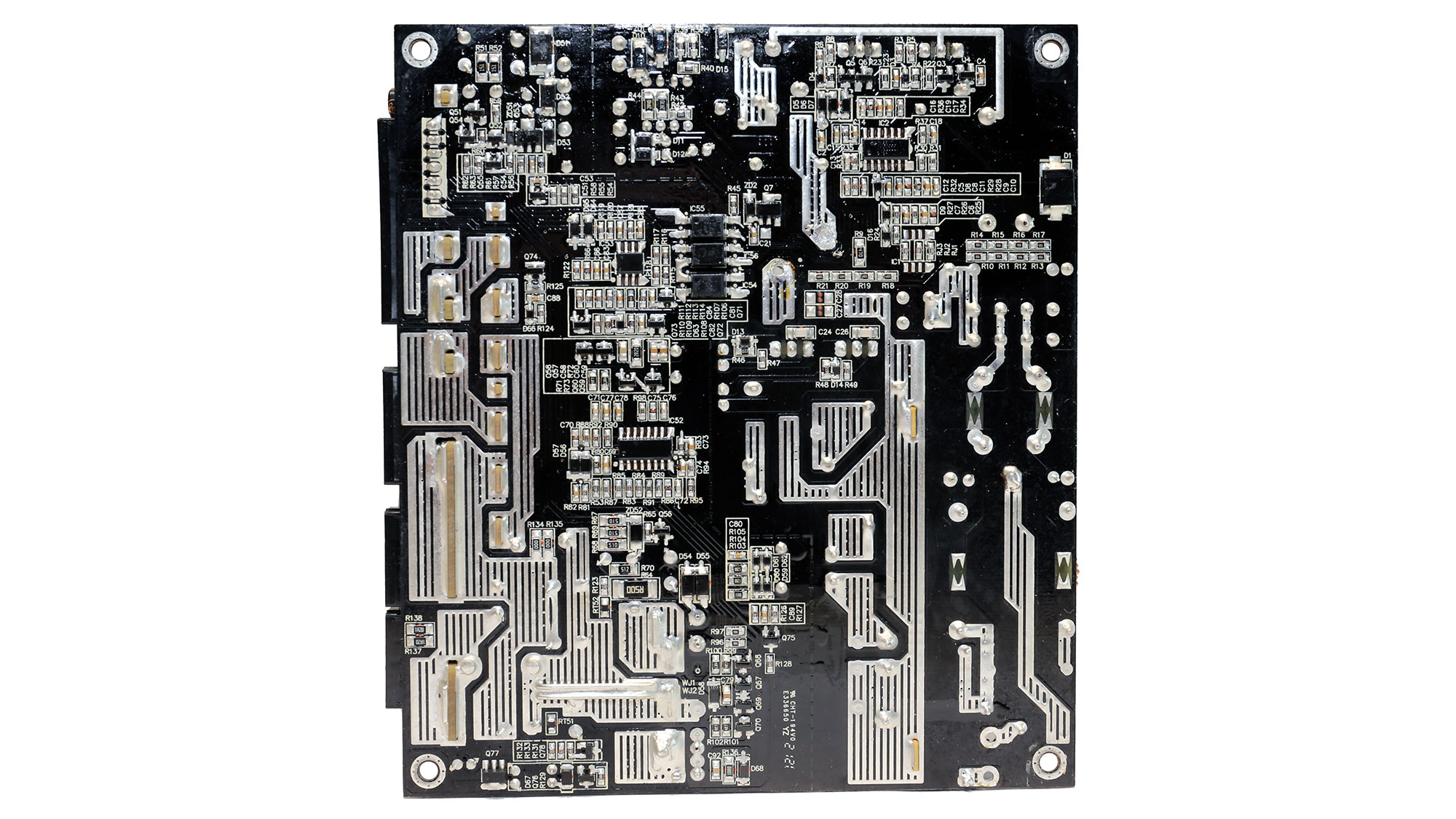
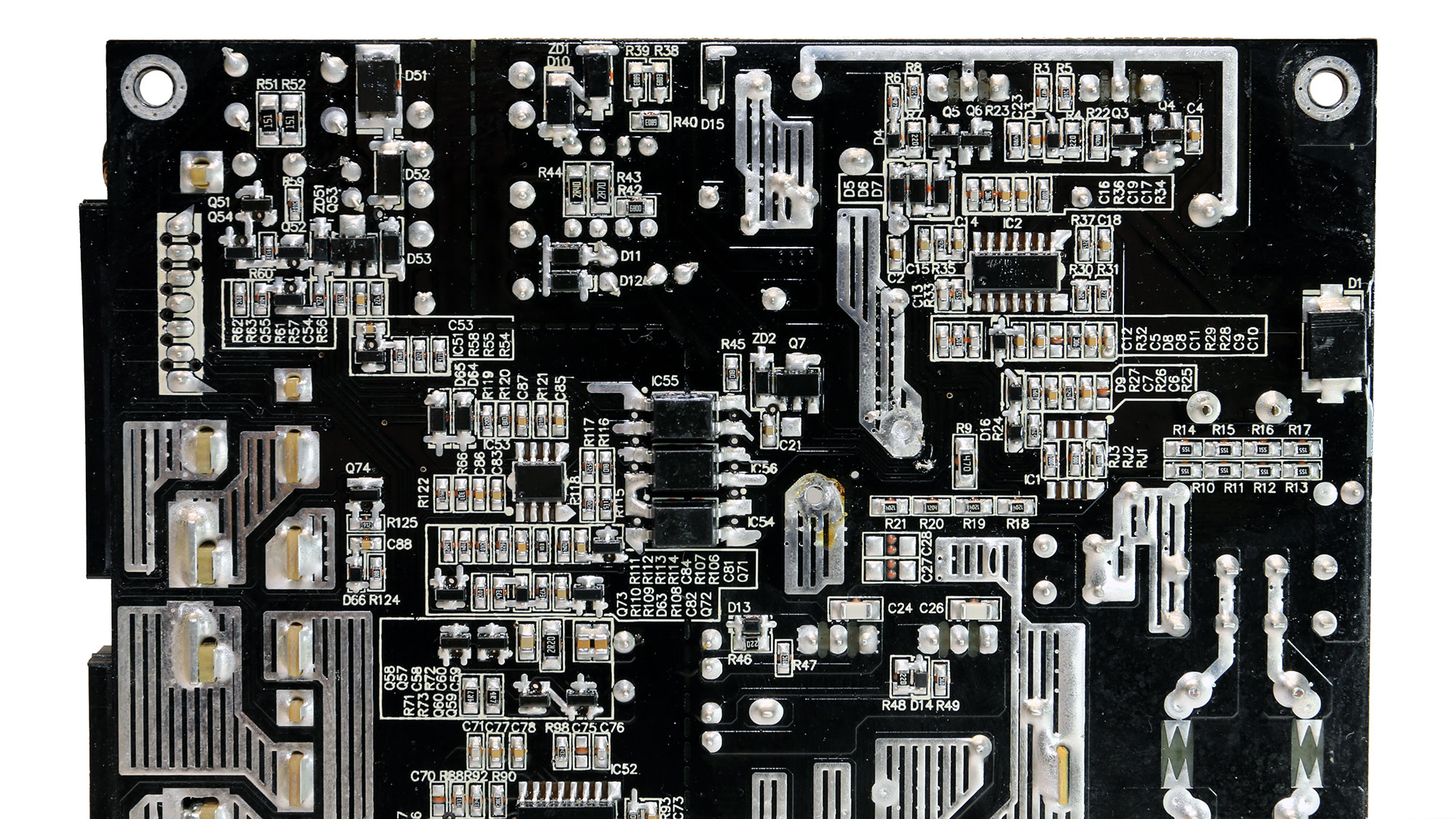
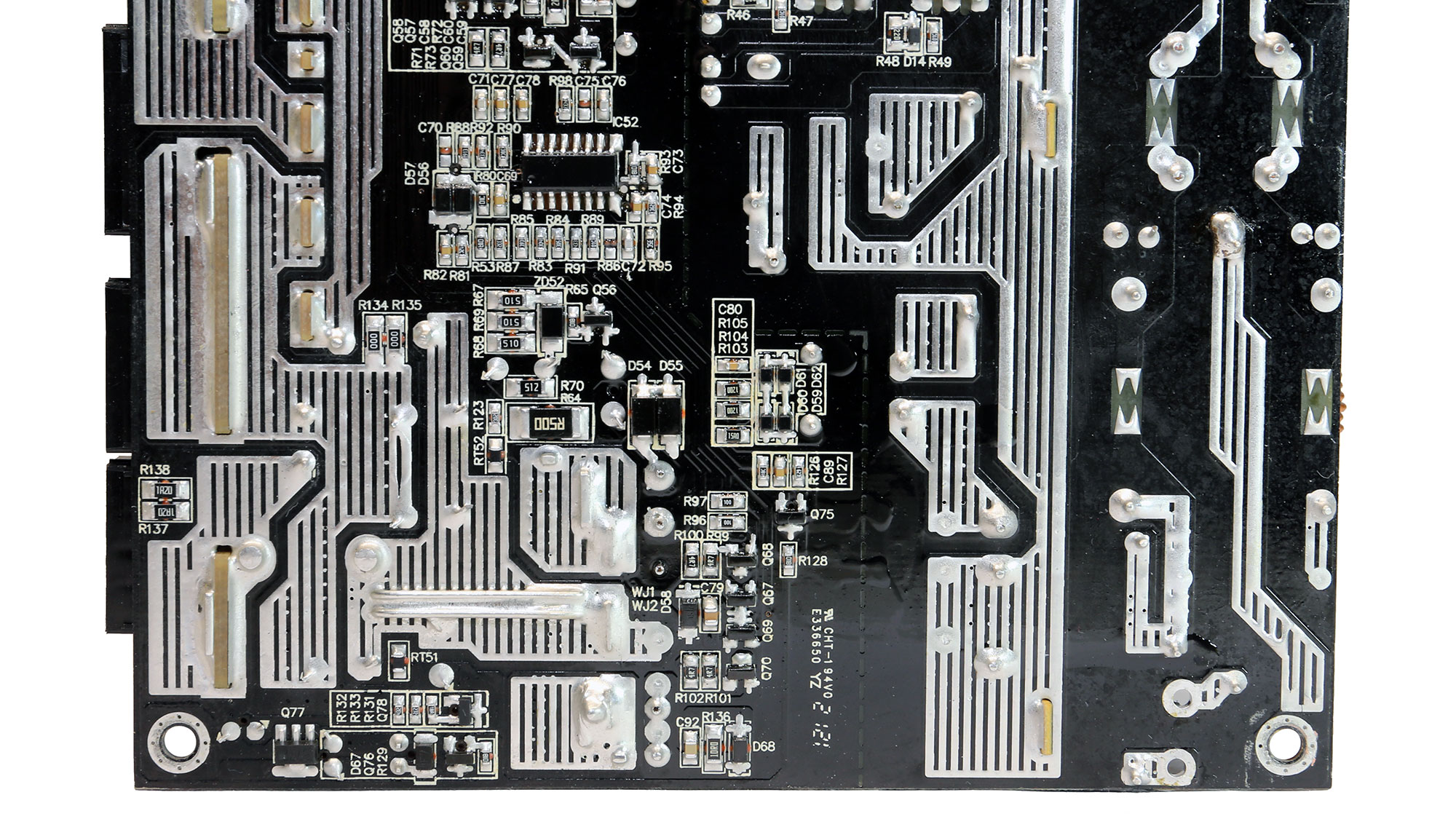
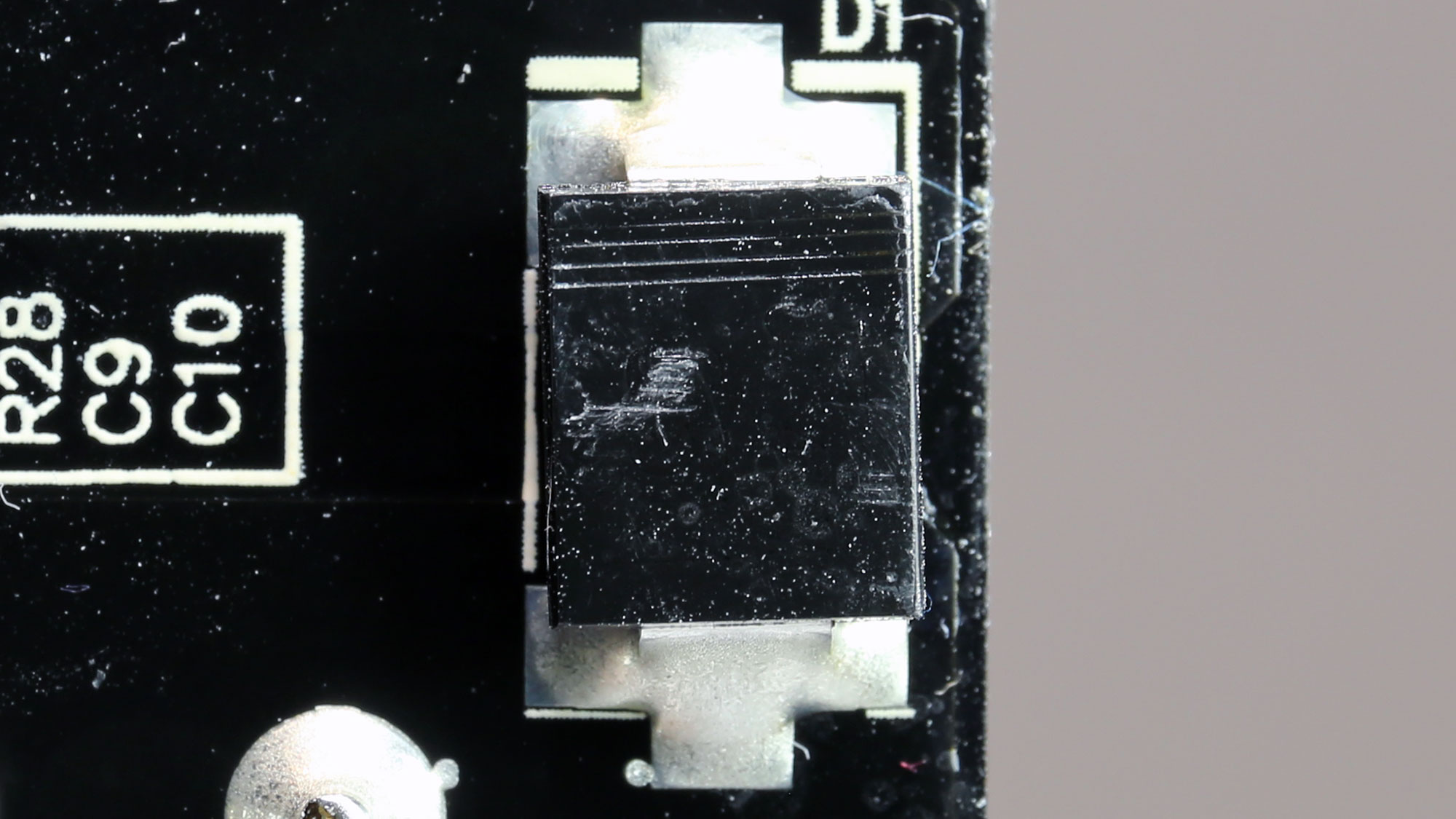
Soldering quality is good.
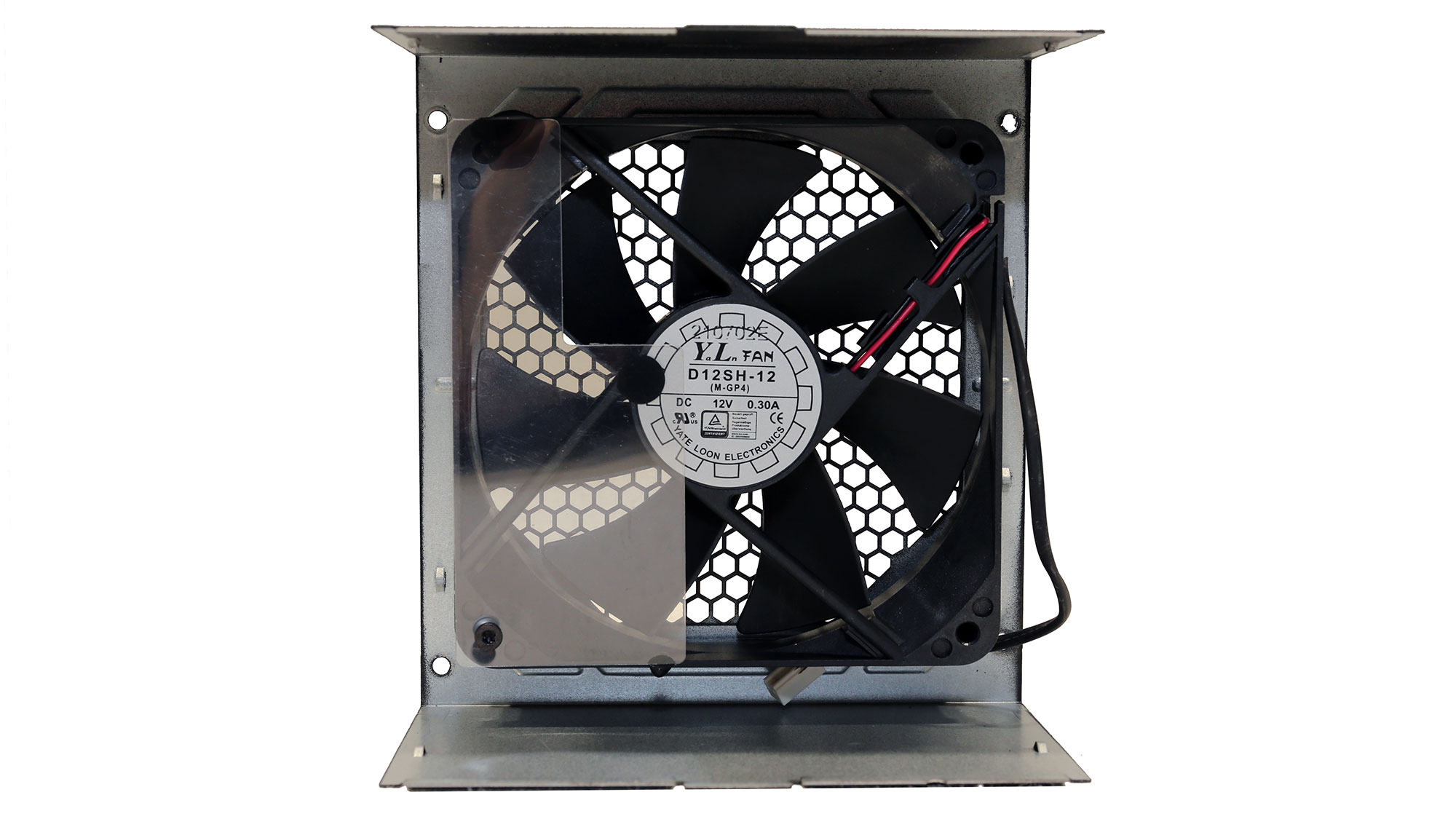
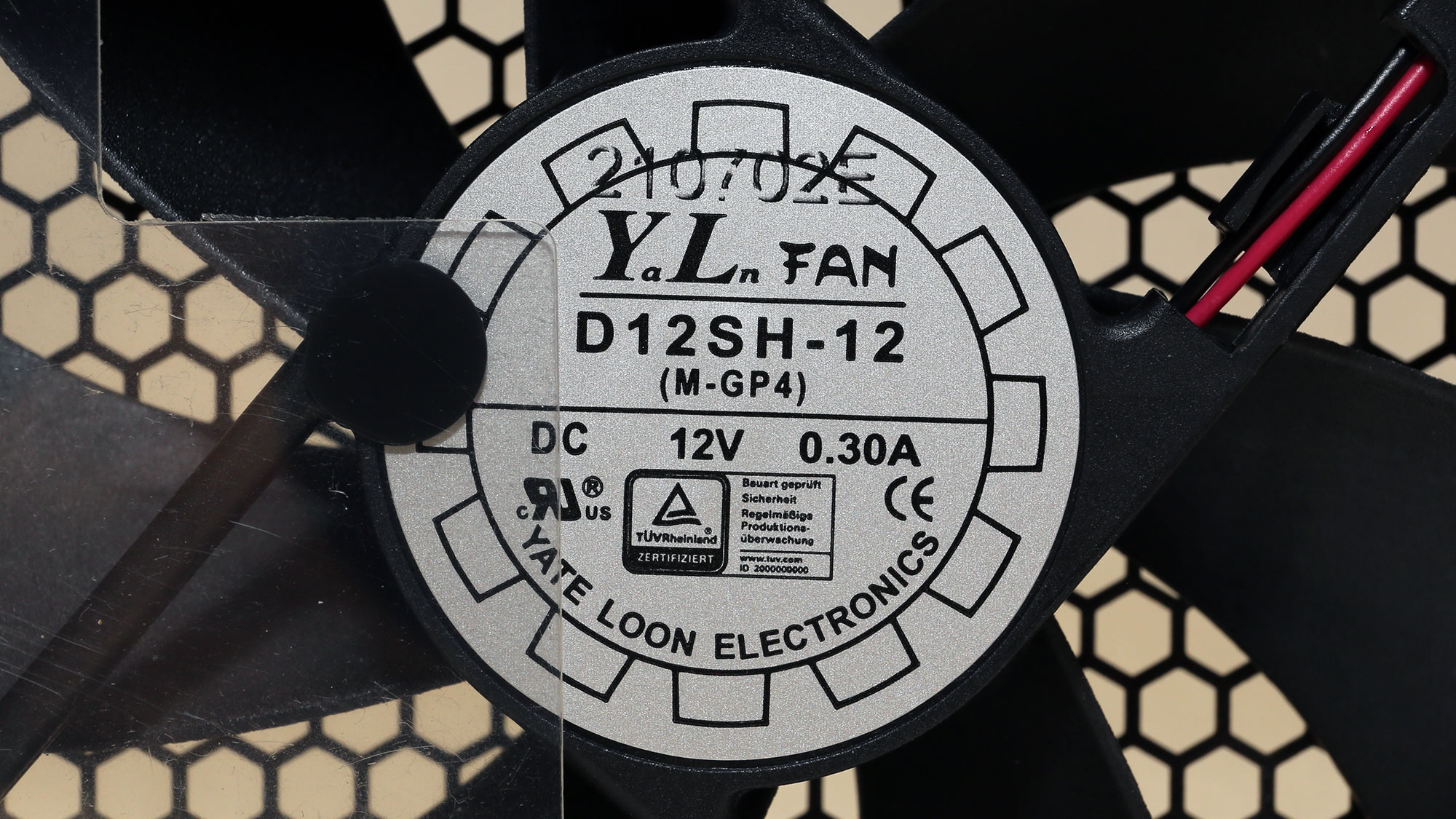
The cooling fan uses a rifle bearing. We would like a higher quality fan, although this would increase the product's price. Fans are of high importance to any electronic device, especially PSUs.
MORE: Best Power Supplies
MORE: How We Test Power Supplies
MORE: All Power Supply Content
Current page: Specifications and Part Analysis
Next Page Load Regulation, Hold-Up Time, Inrush & Leakage Current, Efficiency and Noise
Aris Mpitziopoulos is a contributing editor at Tom's Hardware, covering PSUs.